Sun, Sea Cables, and GriT
The song of wade, remixed
A Girtonian’s bet on renewables A long-standing Chaucer manuscript mystery solved
This sport could change your life
How a Girton alumna is transforming sporting opportunities for young people


A Girtonian’s bet on renewables A long-standing Chaucer manuscript mystery solved
How a Girton alumna is transforming sporting opportunities for young people

Three goals, one enabler: a transformative new courts project
We extend our sincere thanks to the many Girtonians, Fellows, colleagues, and friends whose contributions, insights, and support helped shape this edition.

Let me open this inaugural edition of The Girtonian with heartfelt thanks and appreciation for our alumni. Three years in, I’m deeply conscious of just how extraordinary this community is. The stories you share, the ideas you champion, and the work you lead – all speak to the enduring spirit of courage and generosity that defines Girton.
In this issue, we celebrate alumni who are breaking new ground in medicine, law, public policy, climate, and sport; who are leading organisations, creating companies, and advancing positive change in their communities; and who, in countless quiet ways, make the world kinder, fairer, and more hopeful. I never cease to be inspired by what Girtonians achieve – whether on the world stage or closer to home.
Back here in College, the rhythm of the new academic year has begun in earnest: Freshers settling in; returning students rekindling friendships and diving back into study; Fellows moving from research to teaching; and alumni visiting their old haunts to delight in not only what has changed, but also – what hasn’t. The College hums with energy, ideas, and purpose.
Girton has always been about connection – across generations, disciplines, and distances. This magazine is one more thread in that web, carrying stories of our shared past and our collective future. I hope you will enjoy reading about the adventures, achievements, and discoveries of fellow Girtonians, and that you will feel proud – as I do – of the College’s growing global community and its impact.
Wherever life has taken you, please know that you remain part of Girton’s story. And if you haven’t visited for a while, I warmly invite you to come back – to walk the grounds, enjoy dinner in Hall, and feel once more the spark that first brought you here.
My warmest wishes,

Dr Elisabeth Kendall The Mistress of Girton College
Dear Girtonians,

One year into this role, I have had the privilege of meeting many of you – in College, online, and around the world. Each conversation has left me inspired and energised and reminded of the quiet strength and purpose that define our community.
This inaugural magazine offers a moment to pause and take stock. It captures the character of a College that honours its radical past while shaping an even bolder future.
You will meet Girtonians across the decades who embody Girton’s founding ethos – questioning assumptions, sharing knowledge freely, and turning principle into practical progress worldwide.
You will also read about the Girton Skills Programme – now expanded to help our students learn and lead with confidence – and about Fellows whose work continues to break new ground and make a difference far beyond our walls.
In the same spirit, our community of more than 12,000 Girtonians, our G-Force, is increasingly active: mentoring, opening doors, and sharing expertise where it matters most.
Alongside this, the new courts project signals the next chapter in Girton’s evolution, and will create beautiful, sustainable spaces for study, conversation, and collaboration.
Thank you for the pride and purpose you continue to bring to Girton. I look forward to seeing you soon – in Cambridge and beyond – and to hearing your thoughts on what comes next.
With warmest wishes,

‘Miss Marple’ of the IP World — Honouring the



Magdalena Douleva Fellow and Director of Development


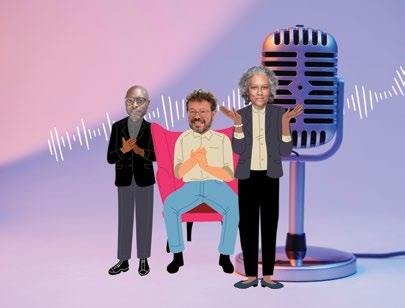
The Relentless Pursuit of Perfection
Adam Kenyon
Sun, Sea Cables, and Grit: A Girtonian’s Bet on Renewables
Mark Budd
From Architecture to Fashion — Shaping a Family Legacy into a Global Icon
Kristina Blahnik
This Sport Could Change Your Life
Lottie Birdsall-Strong
The Stem-Cell Code
Antonia Vogt
Tradition meets Transformation — Navigating the Challenges of the Global Wine Industry Waves of Change: Inside the Podcast Boom and What Comes Next
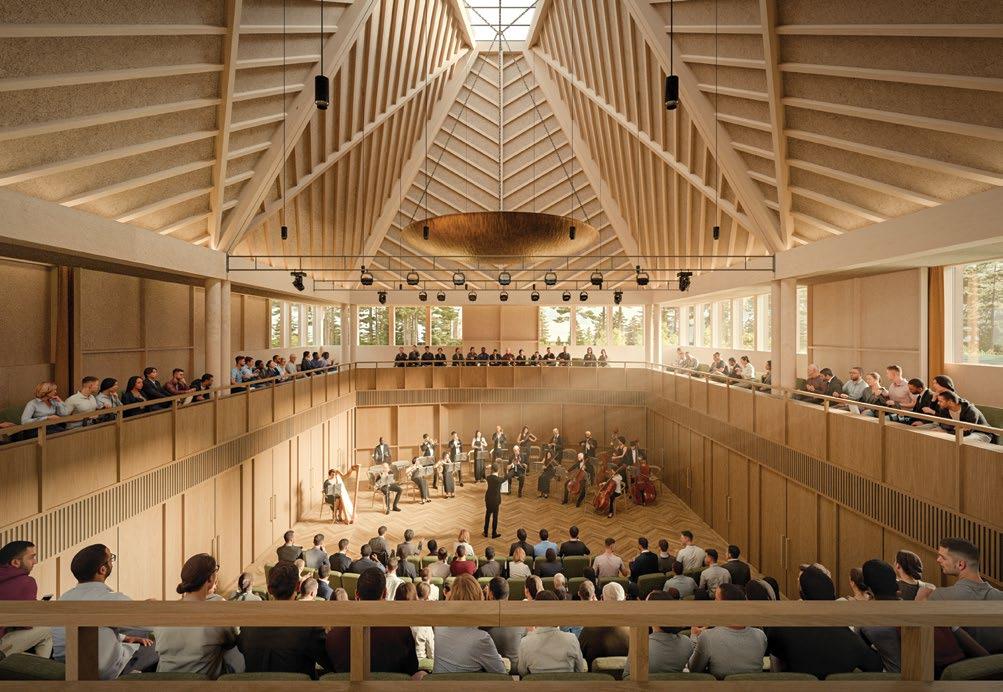
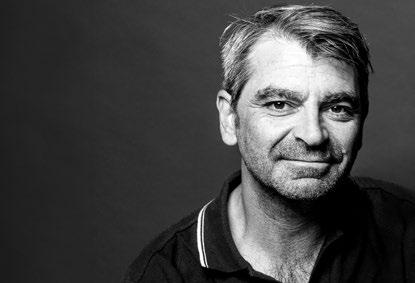

Like Google Maps, but for the Human Brain
Dr John Tadross
The Song of Wade, Remixed
Dr James Wade and Dr Seb Falk
Art and Culture at Girton
Jazzing up the Cambridge Music Scene Girton Jazz/ Tim Boniface Rituals of Discovery
Akeelah Bertram


Can You Answer These Exam Questions?
Pots of Colour — Girton in Your Garden
Girton Couples
A Year in Poetry at Girton

When Karen Spärck Jones arrived at Girton College in the early 1950s, her ambitions were already radical. She would go on to pioneer the field of natural language processing and shape the future of artificial intelligence. Now, almost seventy years later, her legacy is opening doors for the next generation of AI researchers.
So how does a history student from Huddersfield end up shaping how machines understand language?
The humanities mind behind machine intelligence
Spärck Jones came to Girton to study History in 1953, but Cambridge’s flexible Tripos system allowed her to shift course in her third year to Moral Sciences (then the term for Philosophy). This academic pivot would be the first of many. After graduating, she briefly taught in schools before deciding it wasn’t for her. Encouraged by Roger Needham, one of the early pioneers of computer science at Cambridge (and Spärck Jones’s future husband), she joined the Cambridge Language Research Unit (CLRU) in 1958.
It was an unconventional route into computing. CLRU itself was an unconventional lab – unofficial, interdisciplinary, and led by philosopher Margaret Masterman. In an era when computers were used almost exclusively for number crunching, Spärck Jones was already imagining something far more human: machines that could understand and process language.
Spärck Jones believed that computing should not be the domain of mathematicians alone. Her focus was on non-numerical computing: finding ways for machines to process the ambiguity, synonymy, and subtlety of human language. At CLRU, she worked on methods for grouping words by meaning – a task that sounds almost mundane today but was radical at the time.
Her 1964 PhD thesis, Synonymy and Semantic Classification, was initially met with scepticism by examiners. And yet, the very ideas she explored in that thesis became foundational to the search engine technologies we now take for granted. She later developed the TF-IDF model – a mathematical way of ranking the relevance of words in documents – which remains central to how search engines like Google determine what information matters most.
Spärck Jones showed that nuance and meaning could be modelled. She turned language into something machines could learn from, and in doing so, she laid the groundwork for today’s natural language processing systems, including AI models like ChatGPT.
“Computing is too important to be left to men”
Spärck Jones did not just challenge the limitations of technology – she also challenged the culture surrounding it. In a field dominated by men, she often found herself the only woman in the room. But she wasn’t there to play along quietly. She was known for her forthright views on women and academia, summed up by her most quoted line: “Computing is too important to be left to men.”
It’s a phrase that has become emblematic of her vision of inclusive computing. It was not about tokenism – it was about bringing different perspectives into the design of the systems that shape our lives. And it’s this vision that continues to inspire change in the sector.
This year, the University of Cambridge – in partnership with the UK Government’s Department for Science, Innovation and Technology (DSIT) – launched the Spärck AI Scholarships, named in her honour. The scholarships will support Master’s-level students from underrepresented groups to pursue postgraduate studies in AI and related fields, with wraparound support including mentoring, work experience, and communitybuilding opportunities.
The goal? To open up the AI sector to voices and talent who might otherwise be shut out. To fund not just academic study but pathways into meaningful careers
in AI. And to embed the inclusive, interdisciplinary spirit that Spärck Jones embodied.
As Professor Anna Korhonen, Director of the new UKRI AI Centre for Doctoral Training in Machine Learning for Language, explains:
“This isn’t just about financial access. It’s about building a community of future AI leaders who think deeply about the human contexts of their work.”
It’s a fitting tribute to a woman who refused to stay in a lane, who moved between disciplines, who challenged structures, and who believed that computing needed philosophy just as much as it needed code.
In 1948, a few years prior to Spärck Jones’ arrival, the University had finally voted to award full degrees to its female scholars. As Spärck Jones later reflected, “It was a privilege to come to Cambridge; you didn’t mess around.”
As we look ahead to an AI-powered future, it’s worth remembering that some of its most powerful ideas began not in Silicon Valley, but with the work of a Girtonian who asked a simple but revolutionary question:
What if computers could understand us?
Launched in June 2025, the Spärck AI Scholarships are a major new initiative to support the next generation of global AI leaders. Named in honour of Girton alumna and computer science pioneer Professor Karen Spärck Jones, the programme will support 100 outstanding students over four years with fully funded master’s study, a living stipend, and priority placements with leading UK AI organisations. Cambridge is proud to be a founding partner, helping to champion academic excellence, leadership, and diversity in AI. The first scholars will begin their studies in 2026–27.

Joan Robinson: Girton’s
radical economist and her enduring legacy
The purpose of studying economics is not to acquire a set of ready-made answers to economic questions, but to learn how to avoid being deceived by economists.”
Joan Robinson never did things by the book. As one of the most original economic thinkers of the 20th century she refused to play by the rules – neither of the discipline, nor of the institutions to which she belonged.
Today, she is remembered as a trailblazer of the Cambridge School of Economics, but at Girton, she remains something more: a symbol of what it means to challenge orthodoxy with brilliance, courage, and conviction.
She never received a Nobel Prize. Yet among economists, she is often remembered as “the greatest Nobel Prize winner that never was”. Her contributions were vast, her politics – radical, and her influence – undeniable.
When Robinson – then Joan Maurice – arrived at Girton in 1922, Cambridge was still refusing to grant degrees to women. She graduated in economics in 1925 but left without a degree – a “great disappointment”, she later said.
After marrying economist Austin Robinson in 1926 and spending time in India, she returned to Cambridge determined to make her mark, but her progression through academia was slow. Despite her growing reputation, it wasn’t until 1965 – more than 30 years after her first appointment to a lectureship – that she was promoted Professor of Economics. Many believed her husband’s position in the same department delayed her promotion. At the time, opportunities for married women and female scholars at the University were limited. But figures like Robinson would force the change.
Praise was often tinged with condescension. One colleague, Gottfried Haberler, described her work as “much too clever for a woman”. Robinson rejected the label “woman economist” – she simply wanted to be known as an economist but her presence at the top of the field was revolutionary. She opened doors, not with slogans, but with substance.
In 1933, Robinson published The Economics of Imperfect Competition – a direct challenge to the prevailing free-market theories of Alfred Marshall. She introduced the concept of monopsony, showing how dominant employers could hold wages below what workers were worth. She used it to explain the wage gap between men and women – and the theory became widely accepted. Nearly a century later, the US Supreme Court would cite it in a landmark labour case.
She was also a key member of the Cambridge Circus, a group of young economists who helped shape Keynes’s ‘General Theory’. Keynes shared drafts with her, and she responded with critiques. Their collaboration helped turn Keynesianism into a global force.
In The Accumulation of Capital (1956), Robinson again challenged orthodox economic thinking by reframing capital and income distribution as political, not merely technical, questions. This was a pivotal move – shifting the debate from abstract models to the real-world dynamics of power that shape economic outcomes. She later called for a “spring cleaning” of the discipline, clearing out the dogmas that no longer addressed real-world problems. Economics, she believed, must be grounded in history, ethics, and human experience – not just elegant mathematics. In other words, for Robinson, economics was truly a political science, not just a
technical science rooted in calculations and theories of economic equilibrium.
Robinson was never afraid of controversy. She engaged seriously with Marx’s work, explored planned economies, and visited Mao’s China and even North Korea. Her commitment to humanity and the human state meant that she believed economics should confront suffering, not ignore it.
Many of the questions she explored remain highly relevant today. Discussions about market concentration, the persistence of income disparities, and the limitations of growth-focused policy reflect themes she had examined decades earlier. Her caution against an over-reliance on mathematical modelling now resonates broadly within the field.
“Joan Robinson reminds us that economics serves people, not dogma: a Girtonian who opened doors, unsettled received wisdom, and championed courage, realism, and historical understanding. Her spirit continues to shape our work and community.” notes Dr Andonis Ragusis, Joan Robinson Fellow in Heterodox Economics at Girton College.
Robinson was not successful in changing ideologies in her lifetime. Her attempts to bridge, reconcile and “spring clean” the separation between neoclassical and classical economics weren’t embraced. But imagine if Robinson’s ideas had exerted a stronger influence on economics after the Second World War. Her views on wages and market structures pointed in a different direction, and while we will never know what would have happened, they still offer a fresh way of looking at the economy today.
Robinson lived her beliefs. A strict vegetarian, she famously slept in an unheated hut in her garden, walking barefoot to breakfast each morning. She once described herself as “simple-minded” – not out of modesty, but because it let her see things clearly, and act. Professor Maria Cristina Marcuzzo – in a lecture for the Girton Economics Society – begged to differ: “I don’t think Joan Robinson was simple minded, she was intellectually daring.”
Girton celebrates her with an economics society, a fellowship, and a workshop series that bear her name, but her greatest legacy may be her example: of what it means to challenge from within – to belong to an institution but also to reshape it.

Honouring the life and legacy of Sheila Lesley (1950 Natural Sciences)
Sheila Lesley’s interest in inventions was first sparked by a childhood glimpse of John Logie Baird, the inventor of television, walking across the golf course in Bude. What followed was a pre-university job as an analytical chemist, where she first came across patents. From there, her path was clear.
Lesley joined Forrester Ketley & Co (now Forresters IP) in London and qualified as a Chartered Patent Agent in 1958. She was just the third woman ever to qualify, and the first in nearly three decades. By 1983, she was joint Senior Partner. In a profession dominated by men, Lesley was not only a pioneer, but also a driving force in opening up opportunities for others. One colleague recalled that under her leadership, Forresters employed more women trainees than any other UK patent firm at the time.
Lesley’s expertise in trade mark law earned her Fellowship of The Chartered Institute of Trade Mark Attorneys (CITMA), which she would later go on to lead as the first woman President in 1981. Her impact was recognised nationally when she was awarded an OBE in 1988 for services to patents and trade marks.
More than a legal powerhouse, Lesley was a true character, known for her signature hats (and gloves), and her sharp, inquisitive mind. Her occasional nickname, ‘Miss Marple’, wasn’t just about style; it reflected her relentless pursuit of accuracy. She never settled for superficial answers and encouraged others to think deeply and critically.
Once she retired, Samphire Island in the Blackwater Estuary, Essex became Lesley’s new frontier – a place to explore history and ecology. She joined the Essex Wildlife Trust, became a Freeman of the City of London, chaired a school governing body, and supported the RNLI. She was also an active member of Soroptimist International of Southend-on-Sea & District.
Lesley embodied inclusive excellence, intellectual curiosity, and critical thinking; values that remain at the heart of Girton’s mission. She passed away in 2019, but her impact endures in the many professionals she mentored and the barriers she helped dismantle. Her legacy also lives on through her extraordinary generosity to the College. Thanks to her gift, Girton now supports a Law Fellowship, a Postgraduate Studentship in Law, and the Law and Innovation Fund – all of which bear her name.
Sheila Lesley didn’t just make history. She has created a legacy here at Girton that will support and inspire scholars for generations to come.
The Sheila Lesley Law and Innovation Fund empowers excellence in legal education by supporting research, practice, and public engagement in law and related fields. As part of achieving this ambition each year, it awards grants to undergraduate Law students, enabling them to pursue academic internships that offer hands-on experience and deepen their understanding of the law.

In summer 2024, Hadeal Abdelatti (2022 Law) seized this opportunity and interned with The Woods Foundation in Alabama, the United States. The Foundation is a nonprofit tackling injustice in the state’s criminal justice system, especially wrongful convictions, medical negligence, and harsh sentencing.
Immersed in real casework, Abdelatti gained firsthand insight into the complexities of legal advocacy and joined sessions with leading lawyers, politicians, and activists – helping to drive change in justice reform.
After completing the internship, Abdelatti authored the report “Hopelessness is the Enemy of Justice”, drawing its title from Bryan Stevenson’s powerful statement and paying tribute to Stevenson’s pioneering work in Alabama.
Abdelatti’s internship laid the groundwork for a successful application to the Human Rights Project at Bard College, NY, where she has now taken up a prestigious Anthony Lester Fellowship. These fellowships support practical work in human rights and the rule of law. Mere months after graduating, Abdelatti is already making strides toward a career as a barrister and is dedicated to amplifying the voices of those pushed to society’s margins.



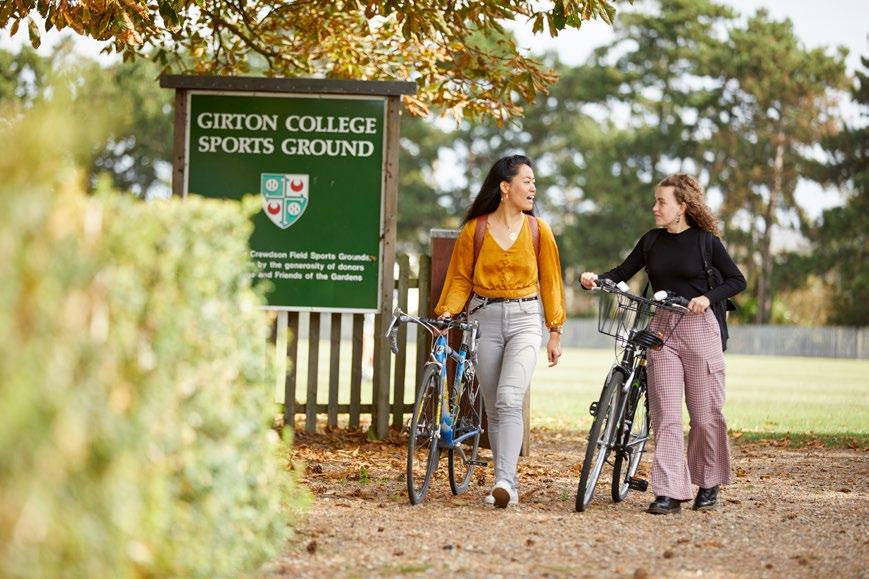

When one Girton student signed up for a data support drop-in, part of the Girton Skills Programme, they weren’t sure what to expect.
“The Girton Skills Programme has been one of the most valuable academic experiences I’ve had –especially the data and programming sessions,” they later reflected. “The facilitator’s expertise was immediately evident, but what truly set it apart was their ability to break complex concepts into clear, manageable steps. They were patient and encouraging.”
Now in its third year, the Girton Skills Programme (GSP) is becoming part of the fabric of College life. Designed to complement formal teaching and supervision, it helps students develop both academic skills and the wider capabilities needed to thrive at Cambridge and beyond.
A programme of unusual breadth
GSP combines academic support, wellbeing initiatives, and career development. No other Cambridge College has brought these strands together in quite this way. In 2024–25, it offered 55 open sessions, along with regular drop-ins, and one-to-one support. Around 148 students took part, and the programme recorded 470 engagements.
“It has been wonderful to see our students grow in confidence. Ensuring that they can put into practice their newfound and developing skills is of benefit not just to them individually, but also to the wider community at Girton and beyond.”, Dr Stuart Davis, Deputy Senior Tutor for Teaching and Learning reflects on the Programme.
55 open sessions in 2024/25 – 148 students, 470 engagements
c. 30 students supported by the Data & Programming drop-ins
10 academic internships in 2025 (6 STEM, 4 Arts & Humanities) from 15 proposals; 52 students and 104 applications
100+ one-toone life-coaching sessions delivered Girton among top five Colleges for engagement with the University Careers Service
c. 300 alumni and c.170 students joined the Girton Careers Network on LinkedIn 18 students reached 100+ participation credits; 17 Personal Development Grants awarded

The academic strand ranges from Freshers’ Induction workshops on essay-writing and time-management to postgraduate sessions on publishing papers and supervising undergraduates. The new Data and Programming support quickly proved popular, with about 30 students drawing on help with Python and R, statistical modelling, and data visualisation.
The Academic Internship Scheme has also taken root, with the second cohort of students taking part over the summer of 2025, working on projects that range from Girton’s role in wartime codebreaking to the College’s Roman and Anglo-Saxon cemetery. Feedback has highlighted the value to both students and Fellows:
“This initiative is a true win-win-win: I gain a motivated, hard-working student to support a key Whittle Laboratory project; the intern builds handson experience in a dynamic research environment while completing their engineering placement; and the College sees students who are more deeply engaged with their subject – carrying that engagement into stronger academic performance in the second half of their degree,”, says Dr Sam Grimshaw, Engineering Fellow.
The wellbeing strand is based on positive psychology and aims to help students build resilience as well as balance. This year’s programme included workshops on managing stress and anxiety, relationships, and perfectionism, alongside practical sessions such as financial wellbeing.
Life coaching sessions, introduced last year, continue to be in high demand: more than 100 one-to-one sessions took place during 2024–25. Students described the coaching as “insightful” and “helpful in making real changes”. And new initiatives – swimming lessons, neurodiversity workshops, and gardening activities –were particularly well received.

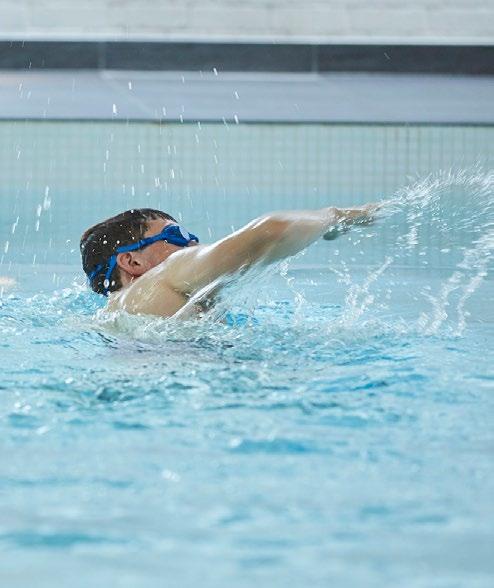
Careers provision has been another area of growth. Girton students are now the fifth most engaged with the University Careers Service. Highlights this year included one-to-one CV clinics, alumni talks, and the pilot of a 1:1 Careers Coaching Scheme offered by an alumna. A new Finalists’ Day provided practical support — from professional headshots to alumni panels and advice on personal branding.
The launch of the Girton Careers Network on LinkedIn has also been a milestone, with c. 300 alumni and 170 students joining within the first few weeks. It promises to be a valuable resource for mentoring, networking, and opportunities.
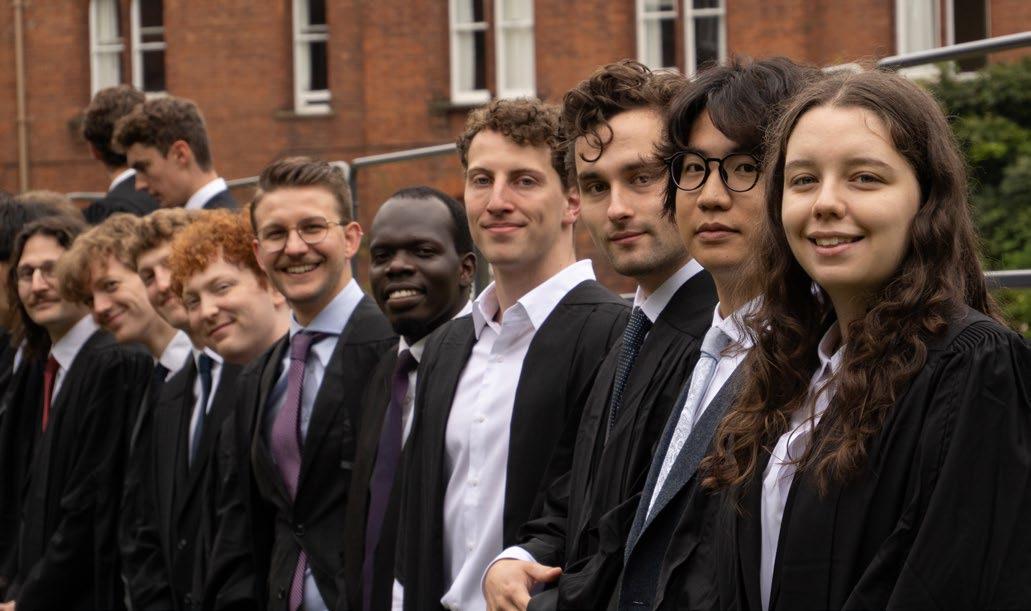
Continuing to evolve, the Girton Skills Programme is already enriching student experience in measurable ways – from increased confidence to closer connections between students and alumni.
For those who take part, it is more than a support programme: it is a way of making the most of their time at Cambridge. As one student ambassador put it, “It was so nice to reassure new students that there was support for all their worries – especially since I remember how overwhelming it was for me.”
With a 12,000+ strong alumni community spanning almost every career stage and sector worldwide, Girton offers an extraordinary resource for students taking their first steps into work – bringing realworld insight and warm introductions.
Launched on LinkedIn in 2024-25, the Girton College Careers Network has already attracted hundreds of Girtonians. It connects students with alumni to share expertise and experience. With almost every industry represented – from finance to film, start-ups to the civil service – the Network helps students explore a wide range of paths, ask smart questions, and gain practical insight into what’s possible.
Join the Network today

The Girton Skills Programme exemplifies Girton’s commitment to giving our students not just the best possible education, but also the skills and confidence to use it well.
Our support doesn’t stop online. At the first ever Finalists’ Day, alumni returned to College to share guidance on moving from university to professional life. Some of the most popular sessions included:
• Creating Your Professional Brand with Jane Hamilton (1989 Social and Political Sciences) –including actionable tips students could implement immediately.
• From Idea to Impact with Rohit Pothukuchi (2021 Finance) and Shambhawi Shambhawi (2018 Chemical Engineering) – honest insights into startups and turning ideas into impact.
• Life After Girton panel – Rachael Richards (Hedley, 1997 History), Dom McGough (2014 Mathematics), and Emily Kell (2011 English) –shared practical tactics for job-hunting, navigating early-career challenges, and building momentum. Students left with clear next steps, and the confidence to take them.

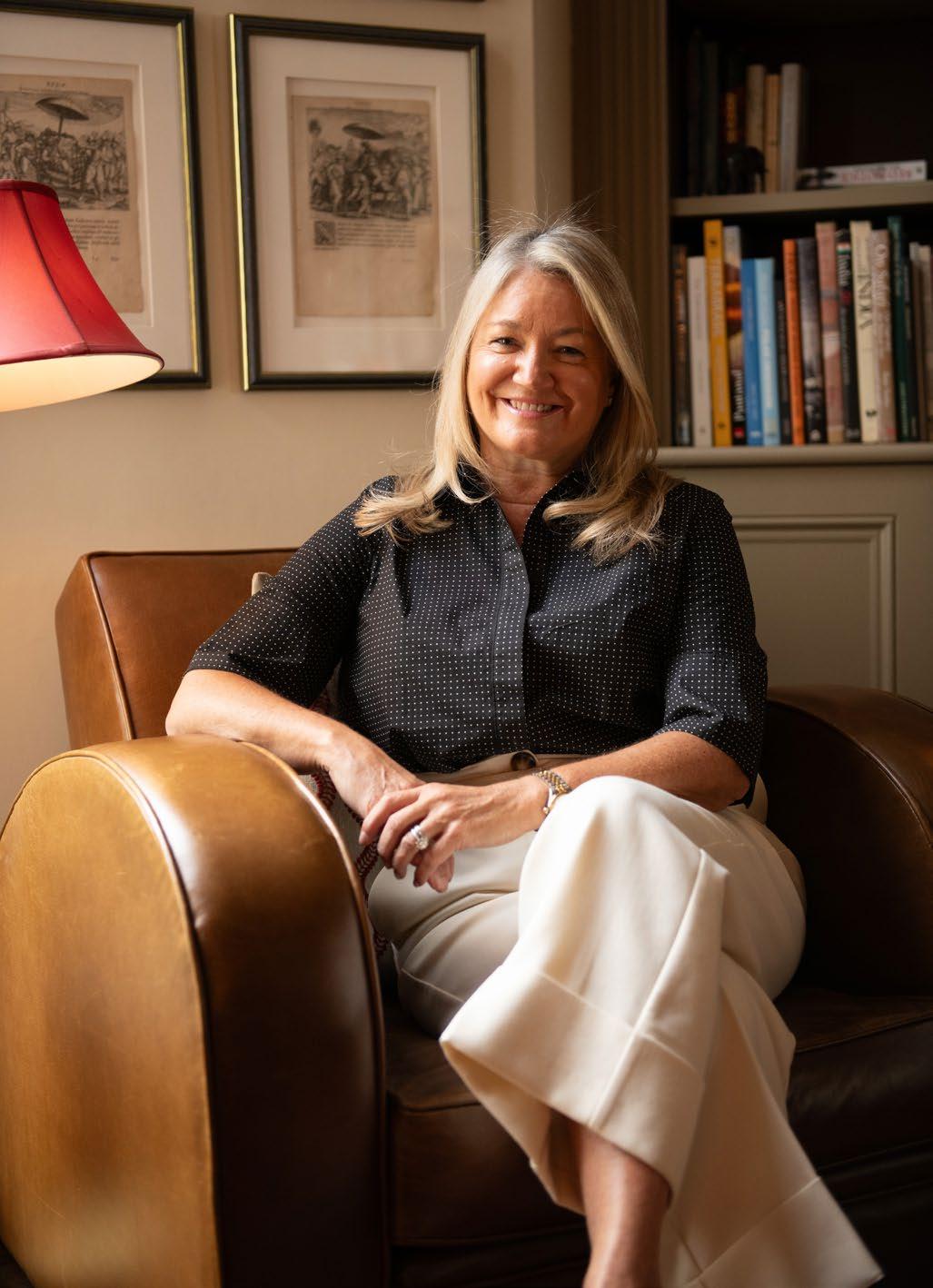
Della Banerji (Unwin, 1986 Modern and Medieval Languages) offers personalised one-to-one coaching that makes a tangible difference. Sessions help students clarify ambitions, sharpen in-demand skills, and build practical, achievable plans. It’s a focused space for reflection and strategy, empowering students to move forward with purpose – whether exploring options or preparing for specific opportunities.
As Della puts it, “The transition from student life to the world of work is increasingly challenging because of the number of potential options and the emergence of new technologies. A coaching setting creates a safe environment in which to brainstorm new ideas about life after College. It frequently leads to tangible outcomes, sometimes in unexpected ways. The students on the programme really do commit themselves to the process.”

Throughout the year, we run lively subject- and sectorspecific events with alumni – one of the most powerful ways to energise and empower our students. These sessions bring the world of work into the heart of the Girton experience: from Law and Finance panels to Q&As with Classics and MML alumni, showcasing how these subjects lead to diverse careers – from independent theatre to combating organised crime, from marketing and communications to leading figures in law. Each gathering helps students explore pathways, ask questions, build networks, and grow in confidence. The participation of alumni adds authenticity and relatability, and their experiences show students that success is achievable, and that they are part of a lifelong community – a community that inspires and supports one another well beyond graduation.

In summer 2024, thanks to the generous support of Chris Rokos, Girton launched the Rokos Summer Academic Internship Programme. Our inaugural cohort of six outstanding Rokos Interns – undertook full-time, paid academic internships –gaining hands-on experience at the cutting edge of research while contributing to impactful projects across multiple scientific disciplines.
• Biological Sciences: Investigated protein content in wheat, advancing research with the potential to improve agricultural practices and food security.
• Physical Sciences: Contributed to the development of the Cambridge University Whittle Laboratory Aerodynamic Probe Calibration Facility, a significant step forward for aerodynamics research.
• Environmental & Wildlife Studies: Mapped human–wildlife interactions in Nepal, generating critical data to inform regional conservation efforts.
• Palaeoecology: Explored the comparative palaeoecology of the Jurassic Kimmeridge Clay, yielding fresh insight into ancient ecosystems.
In October 2024, the Rokos Interns presented their findings to an audience including the benefactor, Fellows, and students at Girton. The event celebrated their achievements and showcased the programme’s tangible outcomes.
On the strength of year one, the College is expanding the programme to include humanities projects – further enriching the Girton experience and enabling more students to engage in meaningful research across a wider range of academic fields.
Behind postcard Cambridge – spires, punts, chapels, and choirs – is an ever-evolving kaleidoscope of medieval cloisters, nineteenth-century brickwork, post-war concrete, modern research parks, and futuristic laboratories, all chronicling the evolution of one of the most important centres of knowledge and learning in the world.
Girton has long been set slightly apart from the medieval heart of Cambridge. Founded in 1869, the College occupies generous grounds – courtyards, orchards, and fields that give it a distinct rhythm – and that space now gives Girton a real advantage as the University’s estate strategy unfolds. The plans for West Cambridge and Eddington are shifting the city’s campus horizon westwards. For Girton, that shift is an opportunity to bring more of college life onto our main site and to play a more active role in the life of the University and the city.

The University’s Reshaping Our Estate programme – a new, twenty-year masterplan – seeks to manage growth while conserving heritage and sets three clear objectives: better use of space, improved connectivity between sites, and a commitment to reach net zero by 2048.
“Our duty today is to ensure that the University can continue to maintain and develop the physical spaces that will allow us to deliver world-leading education and groundbreaking discoveries for generations to come” said Professor Deborah Prentice, Vice-Chancellor of the University of Cambridge, at the launch of the programme.
The estate is being considered in three broad zones –Cambridge West, Cambridge Centre, and Cambridge South – and the University proposes a connective strategy it calls the “Golden Web”. Enhanced by wayfinding and transport nodes in collaboration with local authorities, the Golden Web will link sites, buildings, colleges, historic centres, and other key elements of the city through a more welcoming and biodiverse infrastructure that promotes connection and wellbeing.
“We need an estate that enables collaboration, connecting people across different disciplines. We need an estate that is efficient and sustainable” continued Professor Prentice.

At a city level, Cambridge is preparing for a substantial transformation. A new c. 80,000 sq ft innovation hub is at the centre of a wider growth strategy intended to expand the city’s research and commercial capacity over the next quarter of a century. The scheme – with support from the University, major developers, and tech investors – aims to deepen links between discovery and commerce.
At the same time, the Greater Cambridge plan to 2041 steers development towards brownfield land and seeks to protect green-belt and village identities, while transport, water, and services remain limits on expansion. If these practical challenges can be met through coordinated public and private investment, the strategy could offer a model for regionally led economic renewal.
Demographic changes add weight to the case for development: between 2011 and 2021 Cambridge’s population rose from about 123,900 to roughly 145,700 – a 17.6% increase, nearly three times the national average – while South Cambridgeshire grew by 8.9% over the same period.
Cambridge West and Eddington are important elements of this vision and offer a unique opportunity to deliver expansion at a scale that is sufficiently large.
Cambridge features prominently in government plans announced in early 2025 to go “further and faster” in kick-starting economic growth across the UK. The government has set out a strategy to unlock the potential of the Oxford–Cambridge Growth Corridor by accelerating the expansion of UK science and technology. The plan recognises the University of Cambridge as one of the world’s most intense clusters for science and technology and stresses its capacity to build on the roughly £30 billion it already contributes to the national economy.
Cambridge’s proposal for a new large-scale innovation hub to attract global investment and foster a community that catalyses innovation is endorsed by the government.
Modelled on projects such as The Engine in Cambridge, MA, LabCentral in Boston, and Station F in Paris, the proposed hub is intended as a place to accelerate the translation of leading research into new companies. The package also includes substantial investment in transport and infrastructure across Cambridge and the wider Oxford–Cambridge corridor, together with measures to secure water supplies and deliver homes and community facilities: schools, fitness and leisure provision, and the office and laboratory space that a growing knowledge economy will require.
West Cambridge is being recast not simply as another research park but as a visible, people-focused innovation district on a site of roughly 66 hectares that already hosts much of the University’s engineering and physical-sciences activity.
Planners envisage a substantial uplift in employment on the site (the workforce is modelled to grow from about 4,000 today to some 15,000 by 2041), and the campus is already attracting major capital projects: donorbacked facilities, such as the Ray Dolby Centre, and test-bed infrastructure, including a solar farm.
The approved scheme makes room for wildlife, softens noise, and shapes public life around green, landscapeled areas. The carefully curated open green spaces, leisure facilities, and public places complement the vibrant West Hub and University Sports Centre offering.




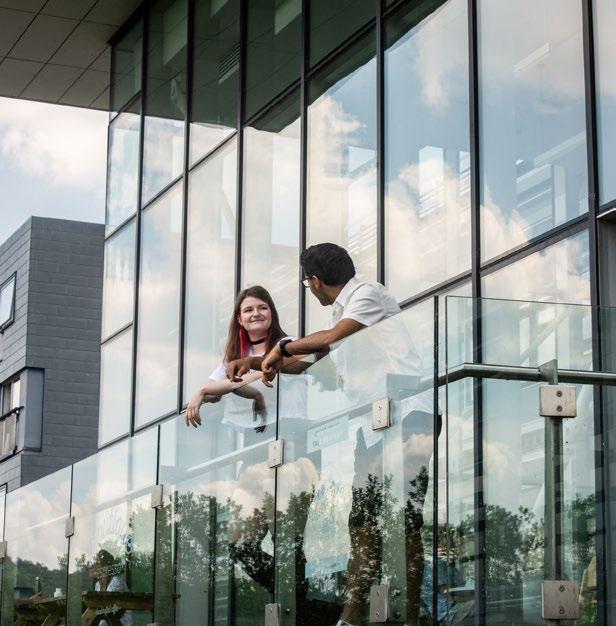


The so-called “green spine” and a programme of pedestrian and cycle upgrades (photovoltaic canopies atop cycle sheds, rain gardens, and new active-travel corridors) are intended to make walking and cycling the default. Similarly, the shared amenity hub, combining café, restaurant and retail, is an exploration into how campus facilities can serve the wider community alongside employees and students.
Eddington was conceived as a mixed-use district of housing (including some affordable units), a primary school, shops, and an innovation campus. Built in phases since 2017, it is intended as a place where students, academics, and local residents live and work. Since 2017, Girton has been operating Swirles Court in Eddington, providing 325 student rooms close to our main site.
The University’s third-round proposals in 2025 envisage up to 3,800 additional homes, bringing the Eddington total to roughly 5,650 when added to the c. 1,850 already delivered or under construction. The plans set out two- to six-storey residential blocks (with select landmarks having up to eight storeys), significant public spaces, and more than 100,000 sq m of employment floorspace.
Around 79% of current trips to and from Eddington are by walking, cycling, or public transport, and the brief retains a strong emphasis on active travel. A large proportion of the new housing is intended to serve University-affiliated staff or key workers.
However, the complementarity between West Cambridge (research capacity) and Eddington (homes and services) will only function with adequate infrastructure in place: coordinated transport upgrades, reliable water and energy capacity, careful flood-risk management, and sensible sequencing that ensures demand does not outstrip supply.

Together, the planned investments could knit research, homes, and public life into a resilient and greener chapter for Cambridge. All this bodes well for Girton. The continued expansion means we find ourselves at the heart of modern Cambridge and can make the most of our strengths: our space and our open, inclusive ethos.
The new courts programme – our plans to develop the College site – is therefore both an exercise in making Girton more contiguous and a deliberate repositioning: bringing more undergraduate and postgraduate life onto a single site and creating spaces that can host conferences and performances as well as day-to-day academic and outreach activities.
As James Anderson, our Bursar, puts it: “The new courts are a bold statement of Girton’s self-confidence and 21st-century ambition.”
The award-winning architectural vision created by Gort Scott speaks to that dual purpose. The new buildings have been designed to respond in a sympathetic and imaginative way to the College’s iconic Waterhouse buildings while using beautiful and sustainable contemporary materials. This is a practical marriage of heritage and efficiency: a new construction that respects tradition while improving thermal performance and reducing running costs.
Equally explicit is our emphasis on wellbeing. Landscaped spaces, accessible rooms and other amenities are designed to foster informal encounters and encourage stronger interdisciplinary exchanges among students and Fellows.
“Unlike the medieval heart of the city, Girton is directly accessible by road, benefits from on-site parking and can be secured or temporarily cordoned off for large events, making it easier to host conferences and public gatherings” the Bursar continues.
Having completed our Strategy Refresh in 2025, and as we look to the future with renewed purpose, we are excited by the opportunity to play an even more active role in the life of the University and the city by doing what we do best: challenging convention and creating opportunity. Watch this space.
Sources Full list of sources available at www.girton.cam.ac.uk/girtonian2025
Girton Strategy Refresh 2025-2027
– three goals and one enabler: a transformative new courts project
In 1869, Girton College challenged the very foundations of higher education. At a time when society insisted that women belonged at home, rather than in lecture halls, Girton stood resolute and declared: “Watch us.”
The early Girtonians were turned away. They persisted. Girton happened because they decided the future should arrive sooner. That spirit has never really left us; it simply changes its shape with the times.

“The new courts will be the crucible in which scholarly and creative sparks fly, turning our academic ambition into impact and keeping Girton bold, influential, and ready for the future.”




Earlier this year we paused, took a clear-eyed look at the world, and asked a simple question: what would those early Girtonians do now? So much has shifted around us – how students learn, how researchers collaborate, how ideas find audiences, how communities meet.
Rather than write a long wish list, we chose to focus. We refreshed our strategy to concentrate on the things that will make the biggest difference: welcoming and nurturing talent from every background, enabling teaching and research to flourish, and connecting Girton thinking with the world beyond our College.
All three goals call for something very tangible: space. Space for people to live on the main site, to bump into each other, to rehearse, to debate, to record, to share. This is why the new courts project matters.
The most significant single building development at Girton since our foundation in 1869, the new courts will advance our core missions of learning and research and drive our global impact and relevance.
As our Mistress, Dr Elisabeth Kendall, puts it “The new courts will be the crucible in which scholarly and creative sparks fly, turning our academic ambition into impact and keeping Girton bold, influential, and ready for the future.”



Girton has always been at the forefront of creating opportunity. Today’s barriers may take different forms – financial, social, or cultural – but they still prevent far too many talented students from achieving their full potential.
This is why we are intensifying our commitment to “inclusive excellence.” Continuing to uphold the highest academic standards, we are widening access by offering targeted support, such as bursaries, scholarships, and the Girton Skills Programme, to ensure every student can succeed.
Additionally, every undergraduate will benefit from international exposure because stepping outside one’s comfort zone broadens the mind in ways no textbook can.
Professor Toni Williams, Senior Tutor, reflects: “‘Inclusive excellence’ is about belonging and achievement. It requires spaces reflecting the world’s diversity and dynamism. Through challenge, encouragement, and care, we empower every student, whatever their background, to flourish and excel – both academically and personally.”
We are also expanding opportunities in sport, music, the arts, and volunteering, so that all our students have the chance to discover their spark and nurture their passion. It is easier to push boundaries and engage creatively when immersed in multiple modes of learning.
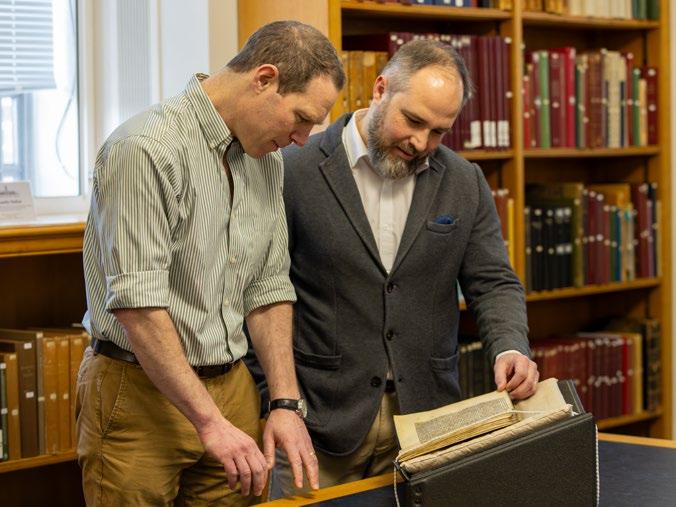
Girton thrives because our Fellows are not just outstanding scholars, but also creative thinkers who are deeply committed to their students. We seek to attract and retain the brightest minds – to mentor the next generation of trailblazers and to drive research that contributes to society.
To achieve this, we are investing in our Fellows – offering competitive salaries, strong research support, and the freedom to work across disciplinary boundaries. We are providing them with an environment that stirs the imagination and propels discovery.
Also, we will not keep our achievements hidden. We will share Girton’s insights with the wider world – through greater media
Goal 3: confined to historic cloisters – that it can empower anyone with a desire to learn.
Rooted in a community of more than 12,000 Girtonians and linked to c. 300,000 Cambridge alumni, our impact extends beyond the College – Fellows pushing at the frontiers of knowledge; alumni shaping change and ideas across industries and communities worldwide, from creating opportunity and empowering women to driving climate action.
Girton already convenes global conversations; with enhanced resources and platforms, we will expand their frequency, ambition, and reach, taking our knowledge far beyond Cambridge.
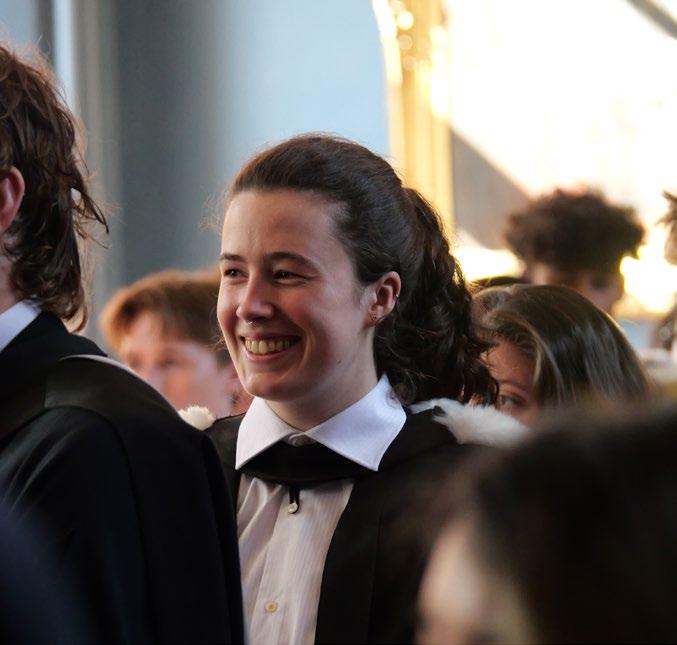
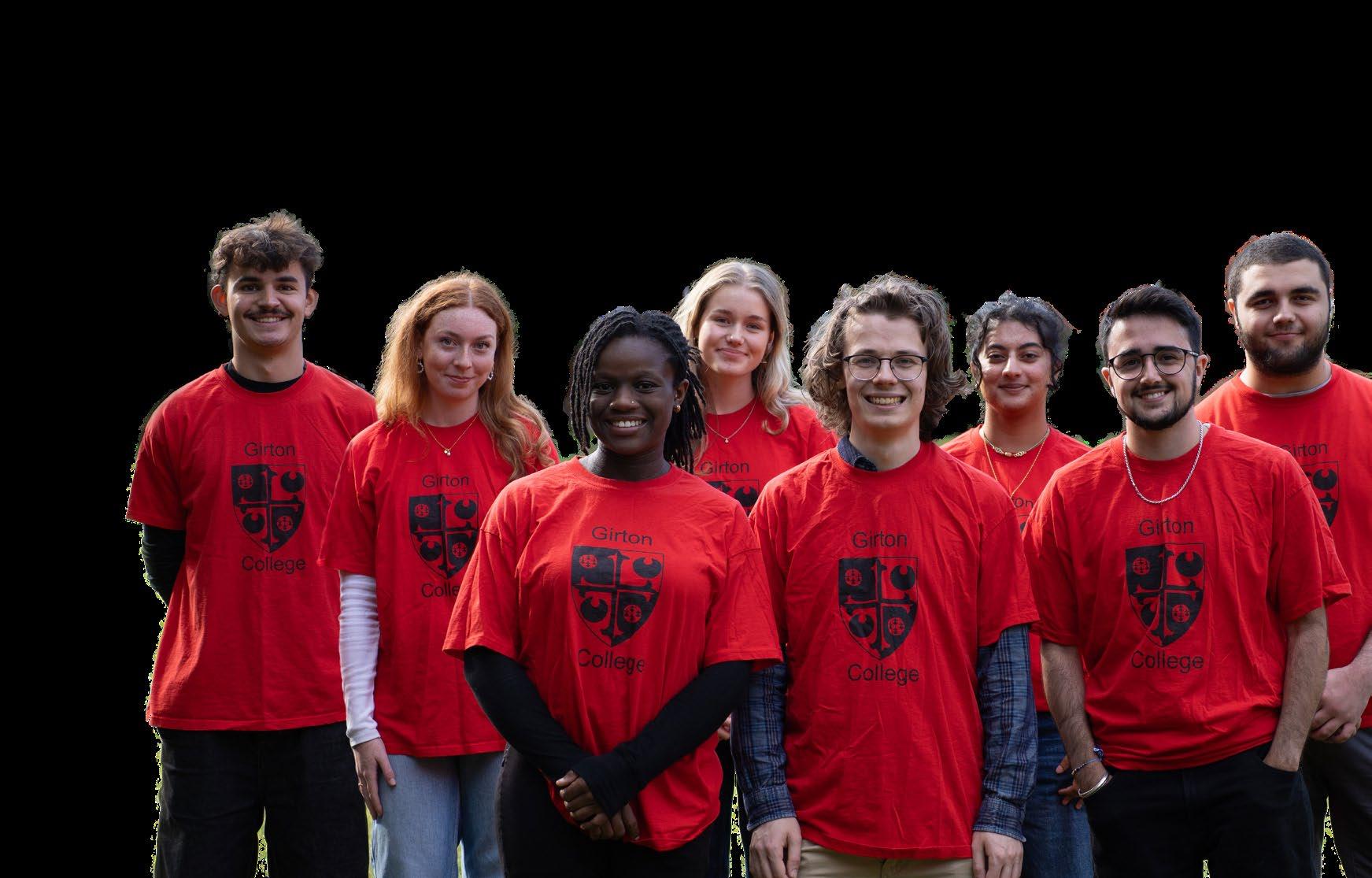
Girton is poised for the most significant physical transformation since its foundation. The new courts project – already recognised for its award-winning design – will do more than extend our estate. It will give concrete expression to what the College stands for in the 21st century: inclusive excellence, scholarship with real-world reach, and a community that draws strength from its diversity.
Set around two sustainably landscaped courtyards, the development will create c. 100 new en-suite rooms for students, Fellows and visitors – welcoming and well-planned spaces that keep more Girtonians living, learning and collaborating on the main site.
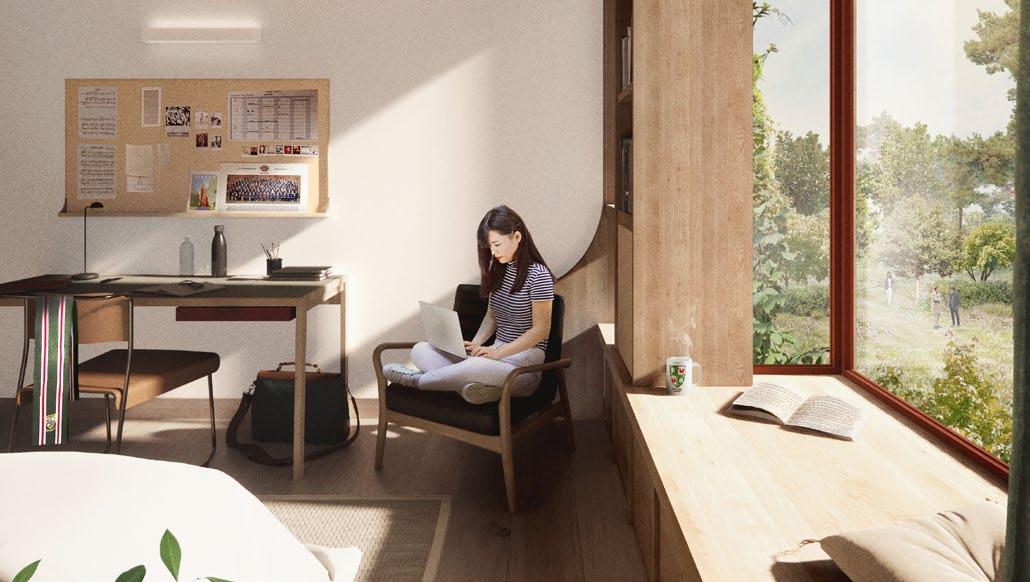

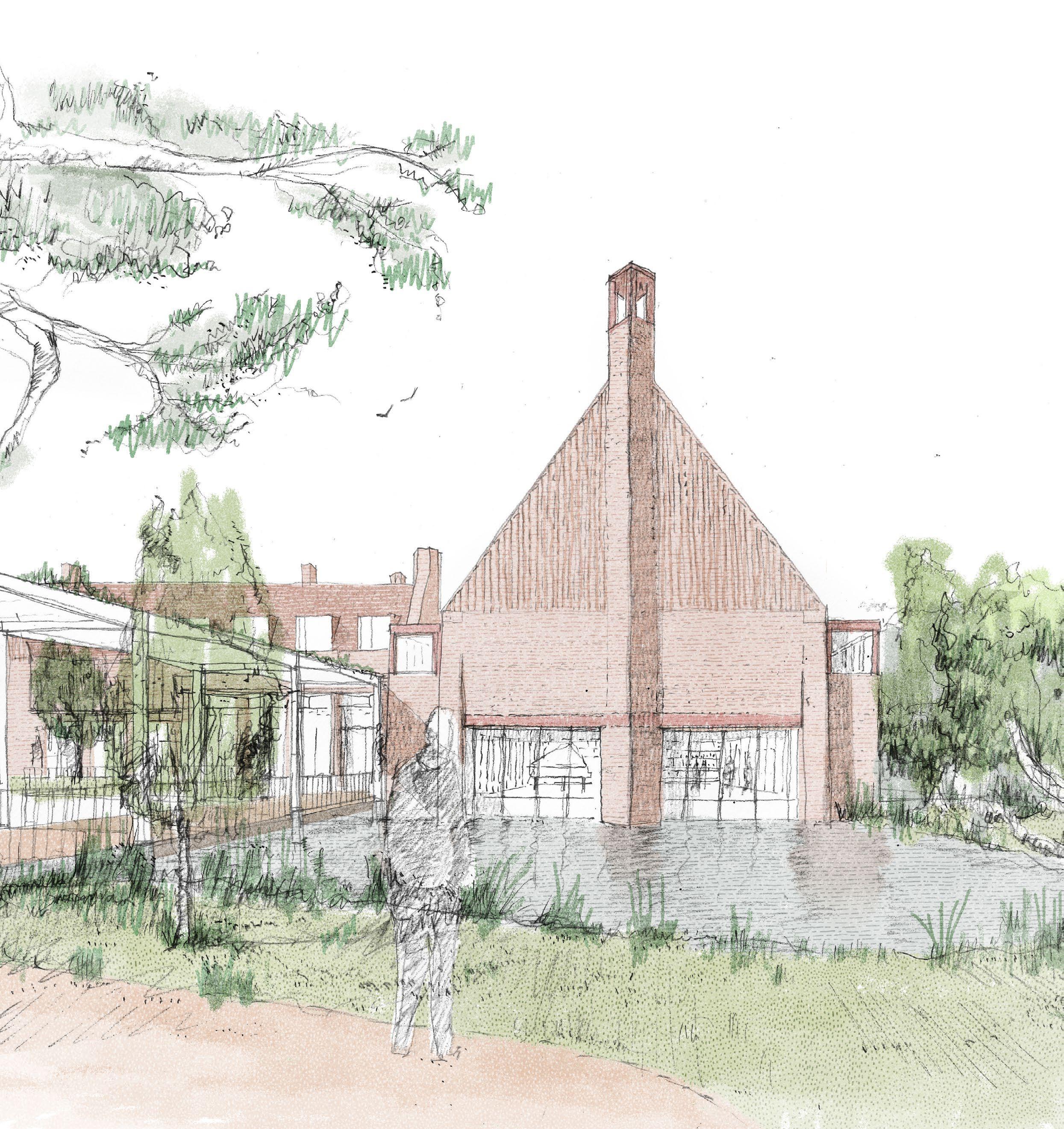

Alongside these, a modern, state-of-the-art auditorium (see cover) offers a crisp acoustic, refined design, and the versatility to host chamber music, contemporary performance, major debates and keynote lectures.
The new courts will be built for the way in which knowledge is created and shared today and in the future. Flexible teaching rooms support supervisions, seminars and workshops; configurable spaces invite conversations and spark fresh thinking. A media suite enables recording, broadcasting and streaming – so research and big ideas can travel, and students can learn to present their work with confidence.
In the words of Elena Buermann, JCR President, “Girton students are already an especially close-knit community, and the new facilities will make it even easier for us to come together and enjoy every aspect of College life –whether sport, music, or studying.”



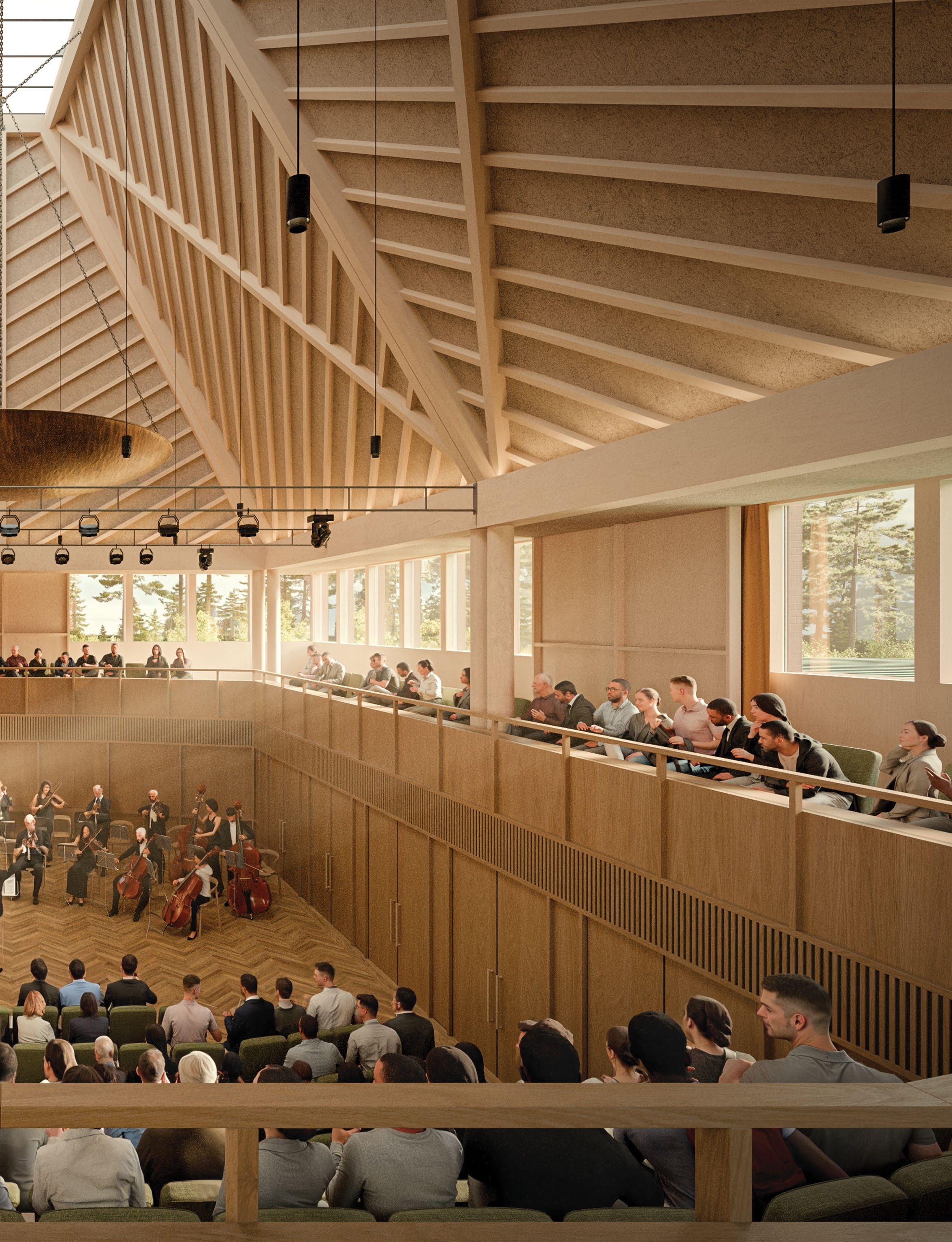

When this strategy and the new buildings come together, you will notice more students living and learning on the main site. You will hear more music and debate coming from rooms that are used from morning to night. You will see undergraduates, postgraduates and Fellows sharing space as a matter of course rather than only exceptionally. You will find visiting scholars and partners welcomed into a place that feels ready for them. You will experience simple, everyday benefits: comfortable rooms, quieter corridors, and inviting green spaces, all supported by energy-efficient design.
“The new courts will be transformative in realising Girton’s intellectual ambitions – a centre for scholarly debate and exchange, and a refined venue for the performing arts – shaping knowledge and culture” said Dr. James Wade, Vice-Mistress.

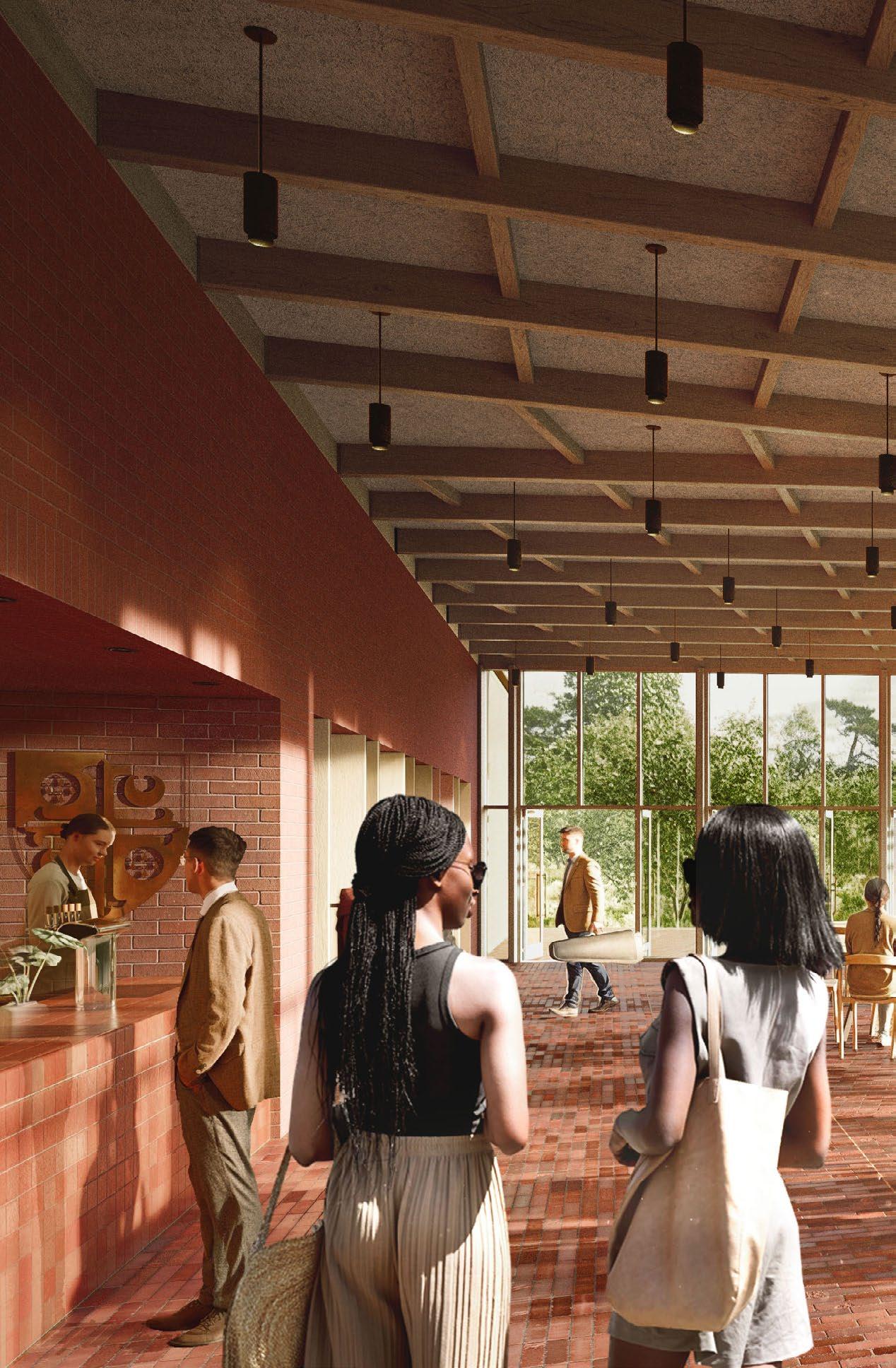
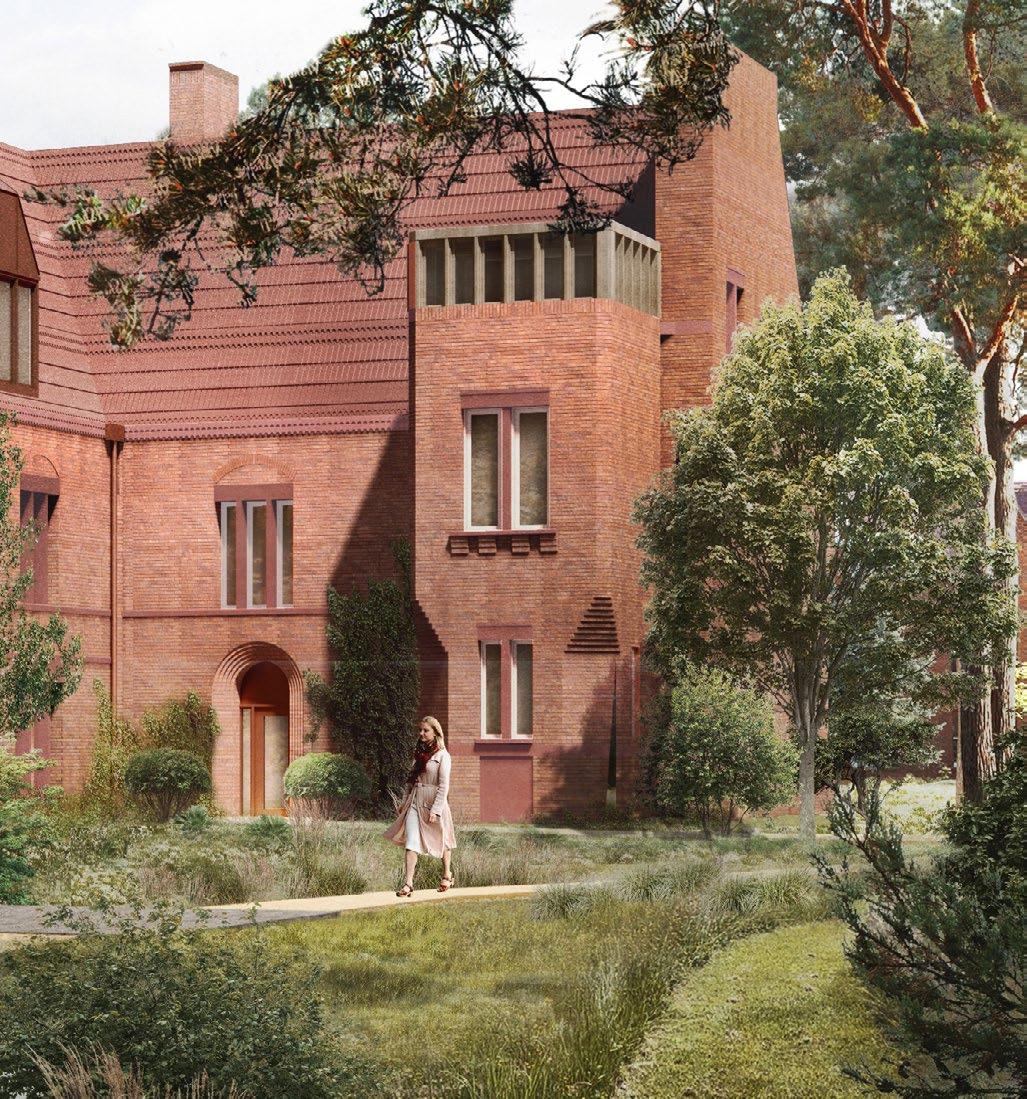
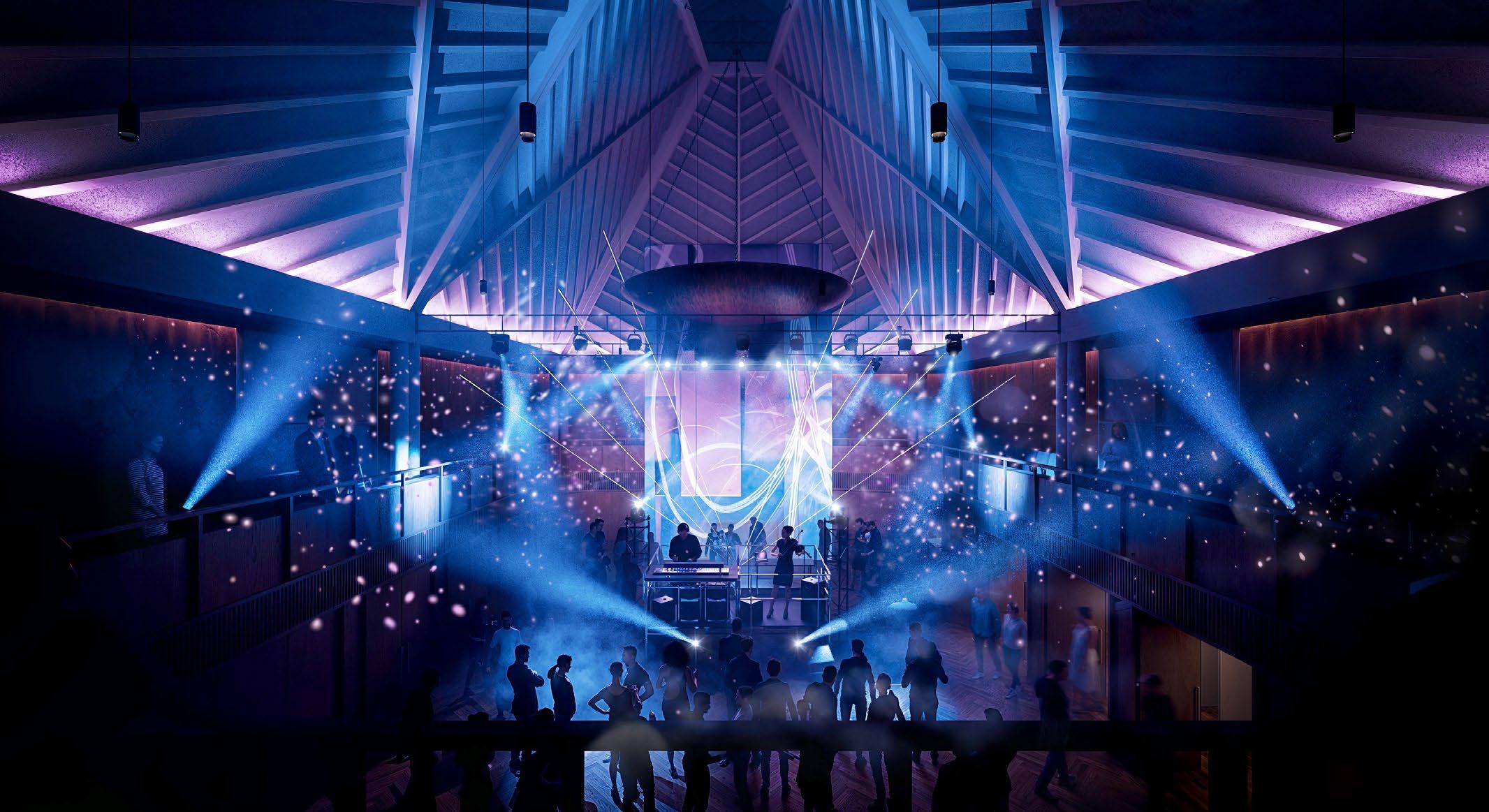

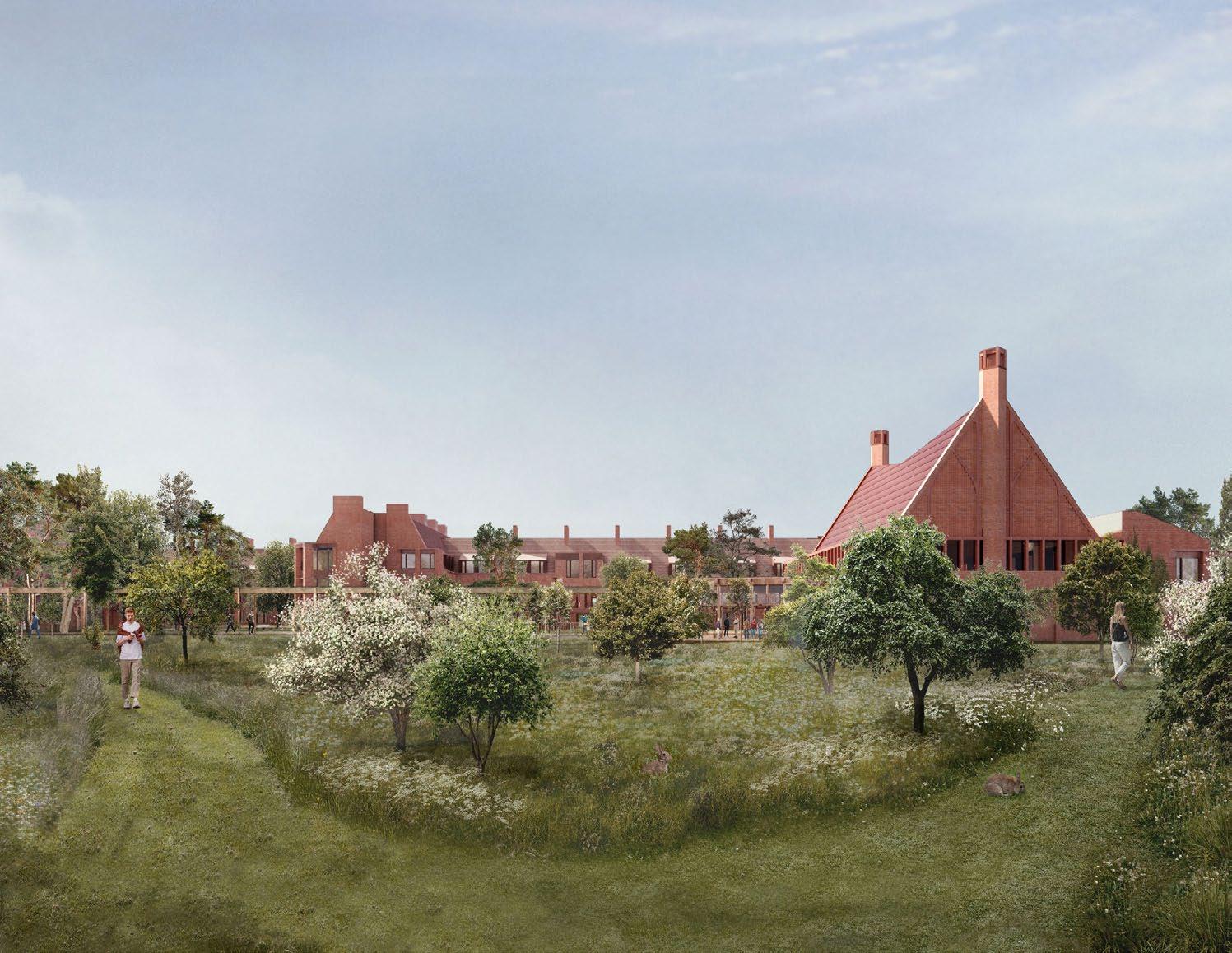
“…everything that is good for body, soul, and spirit”
We are careful stewards of a remarkable setting – 50 acres of orchards, wetlands, wildflower meadows, and beehives – where the seasons are visible, and thinking can slow and deepen.
True to Emily Davies’ vision, wellbeing and sustainability are at the heart of the new courts. The design targets high energy performance and improves biodiversity. Daylight and fresh air matter; so do materials that age well and paths that encourage both chance encounters and quiet exploration. We are committed to sustainability in practice as well as promise, and the new courts project is a big step on Girton’s path towards
carbon neutrality
by 2048.
Join us
The Girton story has always been about moving from principle to practice. Girtonians before us imagined a College that would change what was possible. Girtonians after us will inherit what we choose to build. The new strategy gives us direction, and the new courts give us the means to realise our ambitions. The rest, as ever, depends on what we do next – together.
Formula 1 is a huge global sport with a fanbase of 827 million worldwide. It’s also a thrilling combination of human performance, science, data and experimentation, as Atlassian Williams’ Head of Aerodynamics Adam Kenyon explains.



A lap time that secures pole position by a nose. A smooth and effective pit stop. A lightning-quick reaction to avoid a hazard or overtake a rival.
Sometimes, that’s down to the drivers: athletes who captivate crowds with their blend of experience, talent, instinct, and fearlessness. But more often, those milliseconds are the result of months and years of work behind the scenes.
As Scottish Formula 1 (F1) legend David Coulthard once said: “The driver is the primary focus of attention, but it’s the thousand-plus team members who create the opportunity to win”.
So, what is it like to be part of one of those teams, united by what Coulthard once called “the relentless pursuit of perfection”?
Adam Kenyon knows. The Girton alumnus (2000 Engineering) has worked in F1 for nearly two decades and has been part of winning teams at Red Bull Racing and MercedesAMG Petronas. In April 2024 he was unveiled as Head of Aerodynamics at Atlassian Williams Racing.
“At its core, F1 is a combination of athlete and engineering”, he says. “It’s a balance of theory and testing, as well as a willingness to take risks and give something a go.”
“Innovation is key to being at the front in F1, and you’re not going to do that by playing it safe.”
Kenyon remembers watching F1 on TV with his dad and brother growing up, but being part of the sport wasn’t necessarily a childhood dream. He was interested in sciences at school and found aeroplanes intriguing. So when he discovered aerodynamics, it seemed like a good fit.
He studied Engineering before pursuing a PhD in Aerodynamics. He
then took a role at an engineering consultancy but found himself craving something more exhilarating and fast-paced. And, well, it doesn’t get much more fast-paced than where he went next.
“I remember my first day in F1 at Red Bull. Just walking in the door and thinking, ‘wow’.
“One of the amazing things about Cambridge is that you were surrounded by so many talented people, and F1 is similar. You can build off one another and learn from each other.”
“A team doesn’t feel like this vast organisation. Even if you’re just starting, you can feel that sense of camaraderie. You can learn from the most experienced people in the industry.”
Aerodynamics is a key factor in the success of any F1 team. Teams work tirelessly to adjust their designs to optimise how air flows around their car. This can impact how it corners, its speed, and how challenging it is to drive.
“We work on virtually the whole design cycle of components”, says Kenyon. “We’re involved in the Computer Aided Design, the idea generation, the simulation side of things. We test our theories in Computational Fluid Dynamics and select the most promising ideas. Then we manufacture parts and prepare them for testing.
“We have a wind tunnel on site which we use for experimental testing, and we compare our results against what we thought would happen. And then we measure performance on the track and get driver feedback.”
No two weeks are the same in an F1 team. The car that starts the first race of the year is not the same as the one on the grid for the last one. In fact, teams are often juggling two concurrent car programmes: the one they’re using this year, and the one they’re developing to meet next year’s rules and standards.
“We release a car at the start of the year, but we’re constantly upgrading it to stay ahead. You can really see performance changing, as teams bring in upgrades.
“Typically, we’ll be running multiple programmes in the wind tunnel and in Computational Fluid Dynamics. And we’ll be analysing how the car performs on the track on a weekby-week basis. That will include speaking to the drivers about any weaknesses and sensitivities in the car, and how it matches up to the competition.”
Williams is synonymous with F1 legends such as Nigel Mansell, Damon Hill and Jacques Villeneuve, but it’s building a new identity as it looks to return to the front of the grid. It’s a challenge that Kenyon relishes.
“We’re looking to build a culture and develop a tight-knit team from back to front that will help us succeed.
“One thing that’s been really great over the last couple of years is that there’s this focus on long-term sustainable performance. We’re not trying to make quick fixes. We’re empowered to speak up when there’s a better way of doing things, even if it impacts the short term.
“We’re creating a culture where people aren’t afraid of failure, and we’re pushing the boundaries and trying to learn as quickly as we can.”
A lot has changed since Kenyon’s first role in F1. Regulations such as the “Cost Cap” have been brought in, to level the playing field by limiting how much teams can spend
on their car. Plans to achieve net zero in F1 by 2030 are ongoing. One big difference he notes is the sheer amount of data that today’s teams work with.
“In my time in F1, the level of detail to which we develop has increased significantly and is supported by vast amounts of data.
“In terms of aerodynamics, as the air flow becomes more complex, the importance of small details increases. I believe that leveraging data science and improving our simulation capabilities are – and will continue to be – key to competitiveness.”
Kenyon is glad to see teams today investing in initiatives and programmes that offer opportunities to talented young people from many different backgrounds. As a team with big ambitions, Williams is offering various routes into the industry on its website at careers.williamsf1.com, including apprenticeships, graduate roles, and the Komatsu Williams Engineering Academy.
What would Kenyon say to someone looking for somewhere to learn, grow and build an exciting career?
“There’s a clarity of purpose in F1 teams that’s very special. I don’t know many other industries that offer anything similar. It’s fast-paced, cutting-edge, and people work hard to solve complex problems to very short timescales.
“It’s got a relentlessness to it that doesn’t suit everyone, and that relentlessness can be addictive. You unlock some performance, and you want to start finding more and more.
“If you want to be in an environment where you’re constantly trying to do things better, Formula 1 is a great place to be.”
What is life in an F1 team like for someone who’s just starting their career?
Thomas Lack joined the Aston Martin F1 team as a Graduate Aero Performance Engineer, soon after graduating from Cambridge (2019 Mathematics).
“A lot of things appealed to me”, he says. “The fast-paced environment, the chance to apply mathematics, and the quick feedback, much of it visible each time the cars take to the track.”
Lack works in Aero Performance, helping to analyse and correlate results from the track, wind tunnel, Computational Fluid Dynamics, simulation and more.
“I focus on the modelling aspect of aero performance, applying techniques from statistics and machine learning to build mathematical representations of the patterns we observe in the data. These models not only enhance our physical understanding of aerodynamic behaviour but also improve the accuracy of our predictions, supporting better decision-making and development strategies.
“My work is most often a mix of problem solving, coding and writing reports, but no two days are quite the same.
“After a race weekend, for example, I might need to turn around a quick piece of analysis or write a Python script, all while balancing the longerterm projects. I am always mindful that there could be someone in each of the other nine teams (soon ten) doing a similar job, so the challenge is to make sure I do it the best.”
Lack drew on his science and mathematics background to secure the role. However, he notes that an
F1 team is a mix of people with a range of different skills, working together “toward a shared goal”.
“One of the biggest reasons I wanted to go into F1 was the chance to be part of a team. I have been lucky to play violin in orchestras since school, and that experience gave me an appreciation for how rewarding it is to contribute to something bigger than yourself.”
While Lack didn’t grow up glued to F1 races, he started watching properly in 2021 and soon found himself trying to predict race strategies from his sofa.
“My dad used to watch F1 by himself, but since 2021 it has become something we enjoy together. After I joined Aston Martin in 2023, my mum and brother also started watching. It’s rare for us all to sit down to the same thing on TV, so F1 has brought us together as a family in that way.
“And of course, being part of an F1 team makes for an interesting conversation point when someone asks, ‘What do you do


Girton has always led from the front – opening doors, challenging conventions, and backing ideas that change the world. By remembering the College in your Will, you help ensure that Girton’s future is just as pioneering as its past.
Your gift can:
• Open doors for brilliant students from every background.
• Spark discovery through world-class research and innovation.
• Sustain Girton by helping to protect and evolve our extraordinary estate. No matter the size, your gift makes a measurable difference.
Your legacy. Girton’s future. Our shared story.
Learn more at www.girton.cam.ac.uk/legacy or contact Emma Cornwall on e.cornwall@girton.cam.ac.uk | +44 (0) 1223 338 901
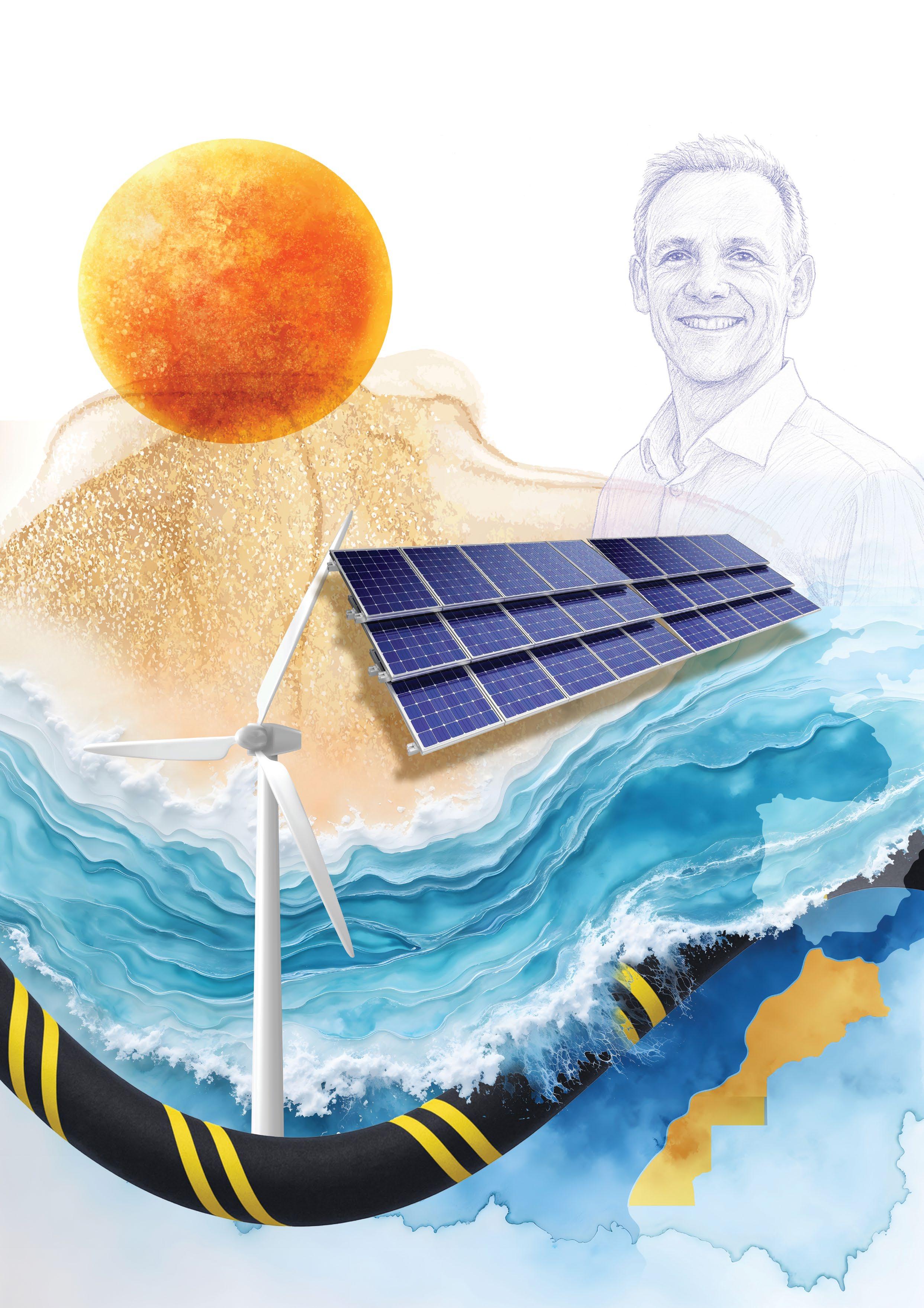
By Mark Walsh (1997 English)
You’ve probably heard some version of this thought experiment: How much of the Sahara Desert would need to be covered with solar panels to power Europe? It’s usually accompanied by a picture of some tantalisingly minuscule strip of uninhabited nowhere, and a lament: Why doesn’t someone just do it?
The punchline: This is why we can’t save the planet. Useless humans.
Mark Budd (1994 Mathematics) has heard the argument. Unlike most, however, he might be on the verge of doing something about it.
It was 2020, and Budd was looking for a new challenge. An old friend approached him, Budd recalls, and said, “Let me talk you through my idea, and you can tell me if I’m crazy –I listened to him, and I said, ‘You’re crazy.’” But the friend – Simon Morrish – was very serious. Morrish, a British entrepreneur, made his fortune in environmental services
and has since pushed green initiatives in energy generation and transport.
As Budd listened, the idea began to sound less crazy. Less crazy, but still fiendishly difficult. “You’ve actually got huge barriers to this,” Budd says. “Securing land. Securing connection agreements. Getting the permits for the transit countries.”
There was also the challenge of navigating the intermittent nature of solar power generation and other renewables – such as wind – which means finding solutions to battery storage problems. And then there is the need to develop heavy-duty cables to transfer the power thousands of miles. Daunting.
catastrophe had driven down costs and ramped up motivation among governments. “When he went through the numbers, it slowly became less crazy,” Budd says. “I thought, let’s go for it. Let’s see if we can change the world.”
The concept that Budd has been helping to guide could generate electricity in Africa for transmission to Europe and help meet a significant share of the demand of a major European country – “the largest renewable-energy project outside of China.”
“I thought, let’s go for it. Let’s see if we can change the world.”
But Morrish persisted and when he once again approached Budd to join the project, baptised Xlinks, the equation had changed. Feasibility studies had been conducted, and a swath of the Moroccan desert identified as a suitable location. Similarly, the march of technology and the desperation to avoid climate
There’s a certain irony in a son of the North Midlands’ coalfields helping to lead the charge away from fossil fuels. Budd grew up in Sutton-inAshfield; his mother was a machinist, and his father was a miner before also working in a textiles factory. Budd was an only child, and it was a tight-knit, happy family. A working-class community where people grafted hard. But also, one with narrow horizons, and not one where academic excellence was usually expected.
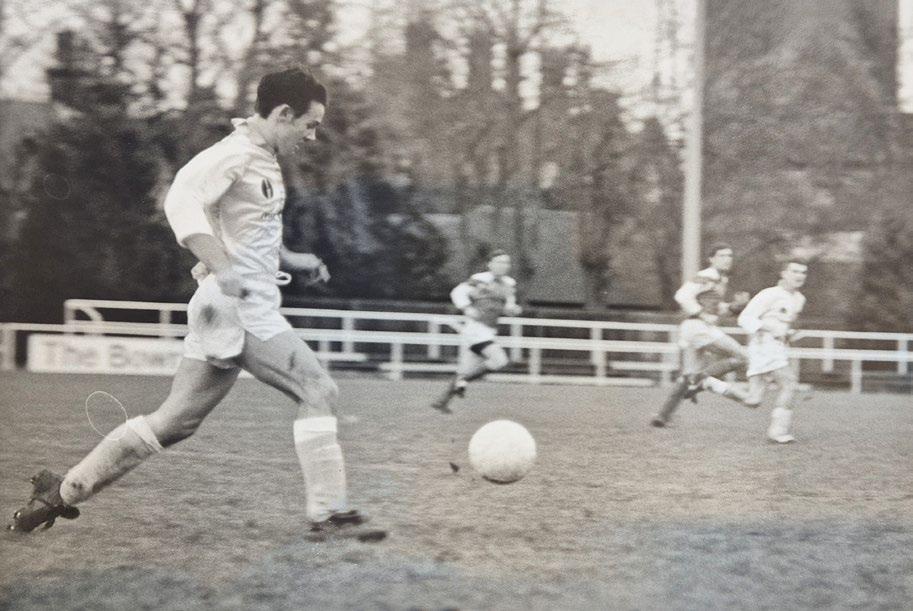
Even Budd finds it difficult to say what drove him. “When I start things, I like to finish them,” he says. “And that lends itself well to a school environment, right?” He shrugs. “I was hard-working, I was disciplined. I was able to do well in all my subjects…” He shrugs again, “I was lucky.”
Another sign of an academic mind: “I loved puzzles. I did puzzles, and puzzles and puzzles, and I enjoyed solving maths problems, which are, really, just puzzles in a different form.”
He was also a talented sportsman, and, perhaps, that insulated him from the insults that might have come his way for being good at school. “I think if I’d have been academic and not sporty, things would have been quite different,” he admits.
Budd was so good at football, in fact, that he was taken on by his local professional team, Mansfield Town, at 16.
But as he continued to sail through school, a wrenching question loomed: What would be the best bet for his future: university or football? “That was the first time we had a family conversation about it,” Budd says. “It was Mansfield Town, not Manchester United. I kind of knew I wasn’t good enough to be real top level. I didn’t quite have

that cockiness or that confidence that the best footballers need.”
He also had options. Storming through his Mathematics, Chemistry and Physics A-levels, Cambridge came into view. A teacher took him to an open day, and something clicked.
“When you’re from my part of the world, you’re not used to beauty,” he says. “Even the most generous person would not describe Sutton or Mansfield as pretty or attractive in any way, and then you’re in Cambridge, and it’s just, wow. Wouldn’t it be incredible to live here and study here?”
Fortunately, back at his comprehensive school, which had no particularly strong history of sending students to university, let alone Oxbridge, Budd found an old box, with a yellowing brochure – and a description of Girton. It looked ideal – a mix of sexes, plenty of state-school students, beautiful buildings.
“At the interview at Girton, I had to explain to them that I’d taught myself. I think they probably saw that as a sign of someone who was really determined. And that probably counted in my favour.” He pauses. “One of the reasons I’m so fond of Girton is that other Colleges in the University wouldn’t have taken that chance. Whereas Girton were like, ‘Let’s have a punt.’”
“One of the reasons I’m so fond of Girton is that other Colleges in the University wouldn’t have taken that chance.
Whereas Girton were like, ‘let’s have a punt.”’
There was still a problem, though. Budd’s school didn’t offer Further Maths as an A-Level. He had to teach himself over the summer.
The memory of what came next puts a bit of steel in Budd’s eye. He had to catch up. Quickly. “My knowledge of maths was exhausted within that first week,” he explains. After his first term, he was pretty much bottom of the class. But the work ethic instilled by his parents – plus a belief that he could make up the gap –pushed him on. Between playing football – he would win three Blues –and adapting to university life, Budd played hard and worked even harder. Every year, his results improved; every year, he moved up the list of his peers. He finished with a First.

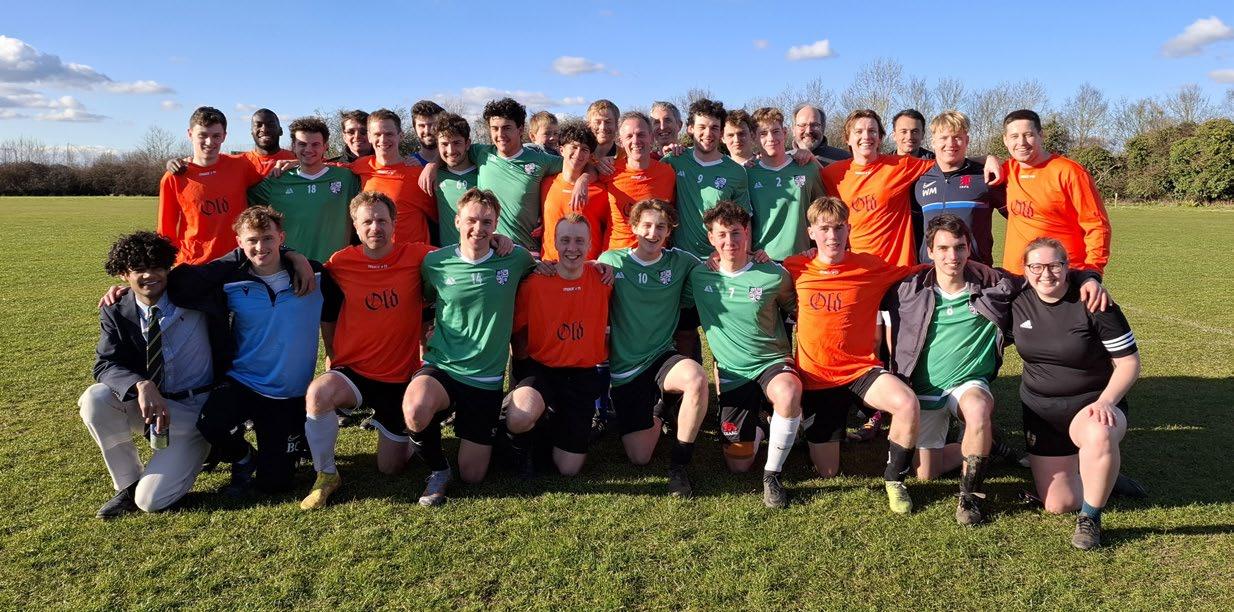
“It was instructive,” Budd says ruefully. “It pushed me to my boundary. After doing that and getting through to the other side, I always knew that I had more gas in the tank, if I needed it. So, when I had hard times in the future, I knew I’d been through something pretty tough before, and that’s been incredibly useful in my career.”
After Cambridge, where he not only excelled academically but also met his wife-to-be, fellow Girtonian Naomi Hill, Budd worked in banking briefly before joining the management consultant McKinsey. He went on to gain an MBA at Stanford in 2002 and later moved into private equity with a company called TDR Capital, working for more than a decade on several projects to turn around faltering businesses, including the leisure chain David Lloyd.
At this point, Budd had built a successful track record but was ready for something a little different. That was when Morrish approached him.
Xlinks has recruited other industry “big hitters”. “We’ve got some of the best people,” Budd says, citing fellow board members Sir Dave Lewis, a former CEO of Tesco; Sir Ian Davis, a former Rolls Royce
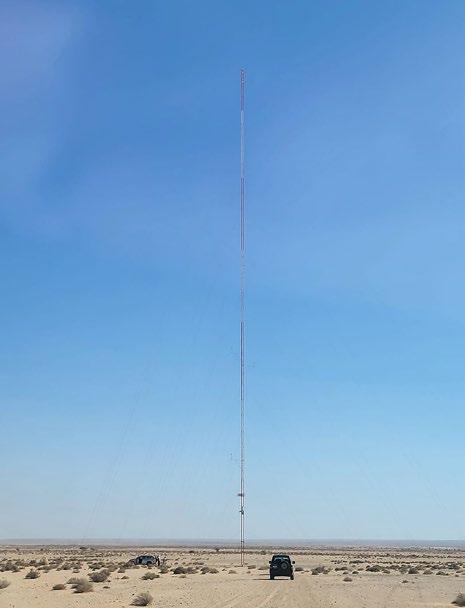
chairman; and Paddy Padmanathan, a leading name in solar generation. The project aims to have all the structures in place – planning, permits, agreements, site licences, procurement – for an investor to come in with the funds to build everything. “We will do everything apart from physically going and putting the wind turbines, solar panels and batteries in place and connecting things up,” Budd says. “If we were working at corporate time scales, this would take 15 years, but we’ve been going incredibly quickly.”
with the National Grid. Procurement processes had been completed. The project was set to come online at the start of the next decade.
“This could transform how the world thinks about electrical grids. Which would be a legacy for anyone, right?”
Electricity would travel almost 4,000 kilometres through undersea cables protected by insulation, lead and steel, with very little transmission loss. If built, it would be the largest such interconnector, able to power 7 million homes for 20 hours a day at half the cost of nuclear in half the time (smaller subsea networks already tie the UK to nearby European states).
As a rule, such large-scale infrastructure projects rely on governmental support, and Xlinks is one of a wave of projects that reflect Europe’s interest in clean energy generated in North Africa, and in exploring whether importing power made in ideal conditions beats domestic production on cost.
Naturally, the UK was considered as the flagship destination. The Moroccan government had granted land the size of Greater London and an export licence. The undersea route was charted. A landing site in the UK had been secured, and there was a connection agreement
However, in June 2025, British government officials announced that the UK was stepping back from the £25bn Xlinks project and instead was pivoting to other initiatives seen as less risky and focused on developing domestic clean power generation. Xlinks’ high-profile nature led to various other European, Middle Eastern and African governments expressing interest, and several alternative projects are now underway.

“This could transform how the world thinks about electrical grids and the energy transition,” Budd says. “Which would be a legacy for anyone, right?”
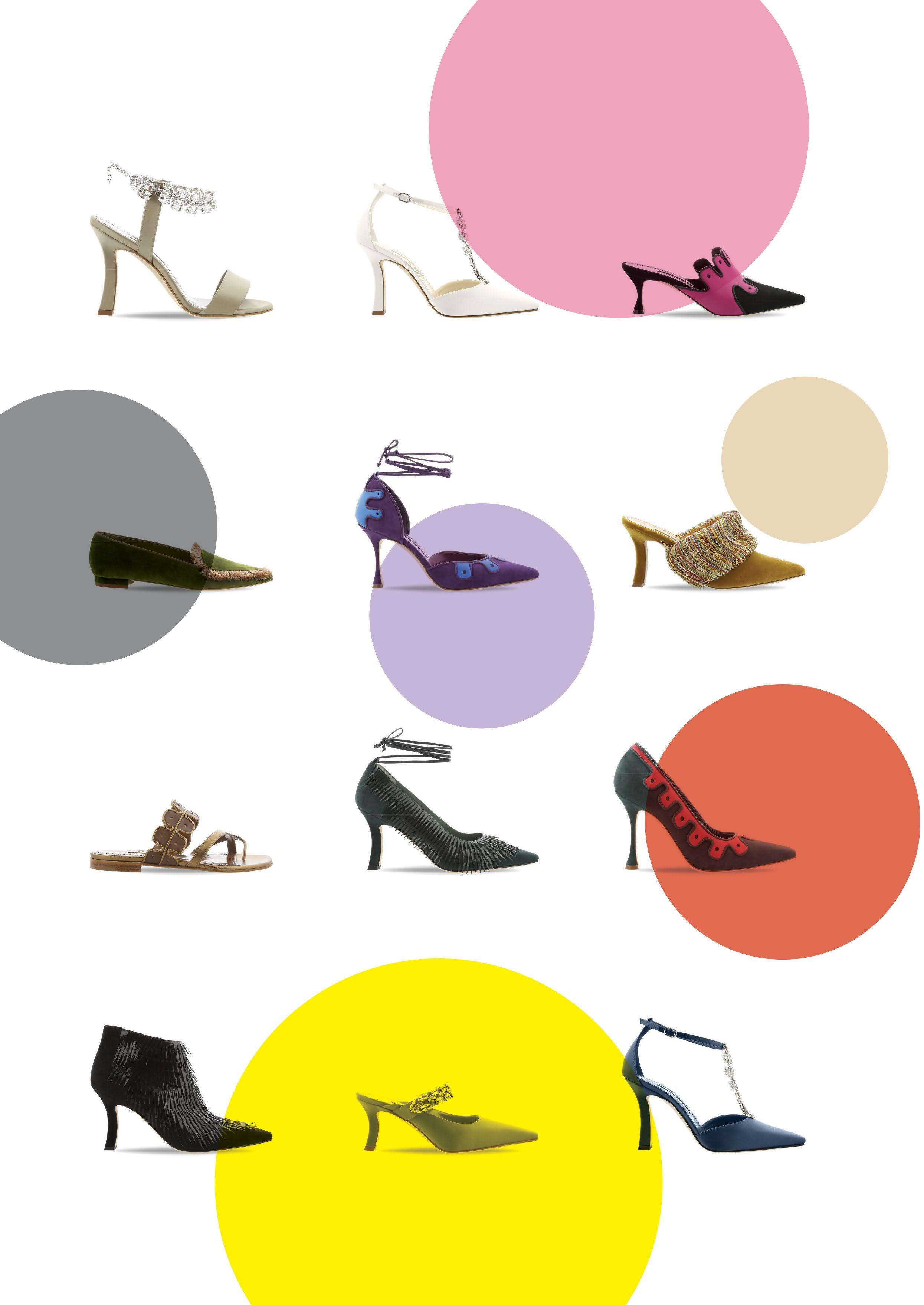
By Pippa Considine (1985 Law and English)
Kristina (Hulsebus) Blahnik (1992 Architecture) visited Girton recently, the first time she’d returned since graduating with a degree in Architecture in 1995. She took her children to see “the magnificent building” where she’d spent her three undergraduate years. “I’m very proud to be a Girtonian and to be a Cambridge alumna. I still to this day pinch myself that I went to Cambridge.”
She now runs the family business, set up by her uncle Manolo Blahnik and famous for his signature, crafted shoes, known by shoe “cognoscenti” as Manolos.
Kristina Blahnik is dynamic. It’s not only her career that has taken on a new shape, and the flow of ideas that have helped to breathe more life into the Blahnik brand, she is alive to the people, thoughts and designs around her. When we meet
on Zoom, she looks impeccable and her conversation is enthusiastic, exploring memories and making connections between university and where she is now.
Between Girton and joining her uncle’s business in 2009, she worked in the world of architecture and, with her ex-husband, established a practice. She became CEO of Manolo Blahnik in 2013. At the helm, she has seen the business grow – from six employees at its headquarters in London, to more than 250 worldwide, and from two stores, to more than 20 around the world.
“When I reflect on what it is about Girton that helped me on my journey, it was probably the people, the friendships, the support that we gave each other,” she says. “Girton has its own community – more so than any other College – because of its special location.” She remembers her two years at Wolfson Court and the small corridors with six rooms or so on each, describing them as “micro-communities.”
Her time at Girton gave her the
chance to find out about much more than Architecture. “What was so wonderful about Cambridge and Girton was the variety of subjects. You start that whole journey of curiosity that goes beyond your own subject.” She remembers one good friend who was studying Law, which felt to Blahnik “like an alien world.”
The friend introduced her to the Law Library, and she found herself engrossed in law texts.
Blahnik’s curiosity and energy also led her to spend time on the river and the Ely ice rink. In her second year, rowing for the College, she was asked to trial for the University. She recognised that she would not have time to both study and row at that level. But she didn’t want to give up the idea of competing for Cambridge.
“I thought to myself, ‘Okay, I want to get a Blue, but I don’t want to have to do eight hours a day rowing.’”
Her strategy was to find something a little more obscure, and she lit on ice hockey, where there was only one practice on the ice rink in Ely each week, with other fitness
training in Cambridge. “I’d been a goalie in lacrosse; I’d been a goalie in hockey. For some miraculous reason, no one else wanted to be goalie, so I went into the first team.” And voila, a Half Blue.
Before Girton, she says, she always felt like an outsider. “I’m half German, half Spanish. I moved to England when I was six. I didn’t know the system.” She had thought about a degree in Economics, and perhaps following her father into banking, but that changed in sixth form.
Her school was building a theatre. Alongside studying for Mathematics, Economics, Art and German A-levels, she became responsible for designing and building the set for the theatre’s first play. She was inspired by the process of construction and the realisation that she had an unusual combination of academic strengths, “logic and creativity that I needed to bring together. And Architecture landed, it felt right.”
Her decision to apply to Girton was, amongst other factors, influenced by the red bricks of the College, “such a beautiful building.” In her first year she had a room on one of the towers. “I had the most fantastic windows – on two sides – and curved because of the turrets.”
“Academia was valuable, not just for doing an exam, getting a result, but how it can feed your view on the world. That, in itself, was formative. It gave me the confidence to go out into the world and think about my view, adding my personality.”
At work, she has launched many initiatives with her own twist, both creative and thinking about the impact on society. “One of the big pillars of our company is the next generation,” she says. One example is working with the British Fashion Council on its national Fashion and Business Saturday Clubs, for 13- to 16-year-olds. “It’s about opening the doors to the world of fashion for young people and often disadvantaged people, so they can think ‘I could do that.’ Having faces, people, and voices that they can recognise to give them confidence.”
without appreciating the history of an art.”
Her uncle’s motto is “without tradition we are nothing”, a phrase he heard from the Italian film director Luchino Visconti in 1970 during a dinner party conversation. It’s a belief that his niece shares. “You can’t create in a vacuum. You have to have references,” she says. “So having been educated in the history of architecture was one of the best foundations I could have had as an architect and, equally, for what I’m doing now, because those are the foundations of our creative manifesto as a brand, as a company.”
“It’s dangerous to become a creative without appreciating the history of an art.”
She muses that while Cambridge undoubtedly gave her confidence, it “maybe set me up perfectly for what I’m doing now. Although probably not in a linear way.” The academic discipline chimes with her tenet that tradition must be respected. “Architecture at Cambridge encompassed the history of Architecture,” she says. “I think it’s dangerous to become a creative
Blahnik grew up in a household focused on her uncle’s coveted shoes, with her mother running the business as managing director. She describes summer breaks working in the shop and using rooms over the shop to study and unwind after school. “As a young child, I used to go up to the small office above the shop and do my homework while watching cartoons on a little black-and-white TV.
“I grew up in that world and have a natural, intrinsic passion for it.”
“I’d been a goalie in lacrosse, I’d been a goalie in hockey. For some miraculous reason, no one else wanted to be goalie, so I went into the first team.”
Her move to work at Manolo Blahnik in 2009, while demanding, saw her surrounded by the familiar. And the discipline of architecture underpinned her switch of career in a practical sense, as well as her knowledge and appreciation of history and tradition. “As an architect, you need to visualise what something physically looks like in the future. Then you need to retro plan how you’re going to get to it from where you are today: through words, through drawings, through a narrative. I think that’s a skill that I’ve used. Being able to build the journey so that you bring everyone with you along it.”
Blahnik talks about having an unusual balance of left and right brain, a blend that lends itself to running a creative business. She has taken part in Insights Discovery, based on work by Carl Jung that uses four colour quadrants to analyse personality. “My lead colour is yellow, which is creative, followed by red, which is directive. So, I have quite an odd combination.”
“My favourite colour is red,” she adds, “probably inspired by the red bricks of Girton.”

Girton alumna Lottie Birdsall-Strong (2013 Multi-Disciplinary Gender Studies) is on a mission to give every young person the opportunity to fall in love with sport

England were on the verge of crashing out to Italy, just one step away from the Euro 2025 final..
Then came the cross that caused chaos. The parry from the goalkeeper. And the low, confident finish from 19-year-old Michelle Agyemang which gave England a dramatic, last-minute lifeline.
A few days later, the Lionesses lifted the trophy to become backto-back champions. All over the country, millions celebrated a resilient, inspiring team that never, ever, think it’s all over.
Moments like that have power. They are recreated hundreds of times on playgrounds and pitches and gardens. They inspire young people to play, and dream.
The key is to ensure that every child who wants to play can do so to the best of their ability, regardless of gender or background. This is where people like Lottie Birdsall-Strong come in.
“I often describe sports as the ultimate Trojan horse. It’s an incredible vehicle to add value to people’s lives.”
Lottie Birdsall-Strong is the Head of Youth Strategy at the England & Wales Cricket Board (ECB). As part of her wide-ranging role, covering investment, impact and participation, she is responsible for work that ensures over half a million young people per year play cricket.
The former Girton student has devoted her career to sport. She has been a strategist at the Football Association (FA) and a councillor at the Lawn Tennis Association (LTA) and is currently a member of the Board of Trustees at Manchester United Foundation.
“I often describe sports as the ultimate Trojan horse”, says Lottie. “It’s an incredible vehicle to add value to people’s lives.
“Not everyone has to love it, but what I can’t stand is the idea that there are people who don’t have the opportunity to discover if they love it – either as a player, a fan, or someone who might want to work in the industry. Opportunity and potential. That’s what gets me out of bed.”
And fortunately, according to Lottie, there are already promising signs in girls’ football. Since 2020, at Manchester United Foundation, there has been a 208% increase in female attendances at football sessions across Greater Manchester. “At Manchester United Girls’ Academy, which is managed by the Foundation, our vision is to have the most successful talent
programme in the country, with the aim of developing first-team and international players.”
While more than 16 million people watched England’s 2025 final win against Spain, Lottie knows as well as anyone how far the sport has come for women and girls in the UK. “I started playing football when I was about four or five. At times, I had to hide my ponytail under a baseball cap to pretend I was a boy, otherwise I wouldn’t have been allowed to join in some of the matches in my local park. My friends even gave me a boy’s name to complete the disguise.
“You’d get a lot of other kids telling you that girls couldn’t play football. But my family couldn’t have been more supportive in every single way, and it develops a resilience around doing what makes you happy.”
She grew up in an Arsenalsupporting family, playing in Highbury Fields, in the shadow of the team’s old Highbury stadium. It was there that she was spotted and invited for a trial at Arsenal’s Centre of Excellence.
“Football developed a real sense of teamwork in me, and I learned how to make something stronger than the sum of its parts, to trust in people, and value different strengths. That’s as valuable in the boardroom, as it is on the pitch.”
After ten years at Arsenal, she secured a scholarship to play
football in the USA in North Carolina. There she discovered the impact of legislation such as Title IX, which requires schools receiving state funds to give equal opportunities to all students, regardless of gender. She decided to explore how measures like this around the world stimulated the growth of women and girls’ sport – what worked where, what didn’t, and why – a quest that took her to the corridors of Girton College, University of Cambridge.
“I realised there was so much potential to do more, and I wanted to be part of figuring out how to do that. Girton is such a special place. It inspired a relentless curiosity in me, and a confidence to connect with other people.”
investment and impact in sport. On top of that, she has helped shape the growth of tennis with the LTA, as well as Manchester United Foundation’s drive to improve female football participation.
“I’m a big believer in data and insight, and I enjoy working with it. But really, I like talking to people and understanding challenges, whether they’re strategic, financial or social.
“There are so many things one sport can learn from another, even if they’re not trying to do the exact same thing.”
Since then, Lottie has been part of the charge to improve participation, engagement and commercial viability in a variety of sports. She was involved with the creation of the FA’s Gameplan for Growth strategy in 2017, which aimed to double the number of women and girls participating in football by 2020. She has also successfully worked with two Prime Ministers in two British governments on
“There are so many things one sport can learn from another, even if they’re not trying to do the exact same thing. Other industries and sectors outside sport are also of great interest to Lottie. They are often very willing to share, and you can find parallels and solutions in places that are not always immediately obvious. For example, on one occasion, she was inspired to solve a significant strategic problem by reading about something the British Army were doing.
At the ECB, she helped to create the Inspiring Generations strategy, which will look to invest £3.5m into the most ethnically diverse areas of England and Wales by 2027, and provide training to expand cricket in
state secondary schools. She also led the ECB’s 2024 State School Action Plan, which aims to invest up to £30m to enable four million young people to access cricket by 2030.
“It’s not just about investment. It’s about considering the best impact we can have. Disability cricket and cricket in Special Educational Needs (SEN) schools has grown hugely through this strategy. We’ve heard from parents, teachers and young people about the multiple benefits, including better focus in the classroom.
“One thing that was quite clear in my mind was the need to prioritise schools. They’re wonderful places for people to engage in sports, particularly if they don’t have opportunities elsewhere.
“Women and girls’ cricket is also growing rapidly. We’ve increased the number of professional women’s cricketers from fewer than 20 in 2019 to more than 135 today. There are eight fully professional teams in the top tier, and becoming a professional female cricketer is now a viable career path. The Hundred – a version of cricket where each team plays an innings of 100 balls – has also been a gamechanger for women’s cricket and put men’s and women’s competitions on an equal platform.
“That’s at the top end, but in the
ecosystem, we’ve also got 5,300 recreational women and girls’ teams, 1,000 more than the previous year. The pathway through the game is getting stronger, and it is exciting to see the knock-on effect of that from a multi-generational perspective.
“We also have the ICC Women’s T20 World Cup hosted on home soil in 2026 (an international cricket tournament organised by the International Cricket Council, contested in the Twenty20 ((T20)) format of the game), and we hope this inspires even more girls to see Cricket is a game “for them”.
Lottie believes there are compelling cases for focusing on more equitable access to sport. One of her priorities is to help realise the full commercial potential of women’s sport. For example, in terms of understanding a different group of fans, research suggests women are more likely to buy merchandise and are more active on social media. Women control or influence ca 85% of consumer spending, so understanding female fandom is critical.
higher levels of confidence, 13% higher happiness levels, and 12% higher sense of having a worthwhile life. “Evidencing the broader value of sport and the role it can play in society is fascinating,” Lottie shares. “For example, sport can be instrumental in building a young person’s confidence. We hear stories about girls who were afraid to put their hand up in class before, and suddenly teachers are saying they’re more likely to take up leadership roles.”
This social value also translates into economic impact. Lottie’s work has calculated that these benefits are contributing £298 million in direct wellbeing impacts to the economy.
“It’s hugely important to view sports from a ‘joy’ perspective”, every player begins playing in a garden, a park, or a playground.”
Studies also show that 80% of female Fortune 500 CEOs played sports in their formative years, and that 85% of women who played sports in their youth believed the skills they developed were crucial to their professional success later in life. It is an interesting thought that women and girls’ sport might be one of the best ways to improve GDP.
From league leadership to governance reform, Girtonians are helping to shape the future of women’s football in England and Wales.
Dawn Airey (1981 Geography) chairs the Women’s Professional Leagues Limited (WPPL) Board, which now oversees the Barclays Women’s Super League and Barclays Women’s Championship, previously run by the Football Association (FA). Appointed in 2019 to the then FA Women’s Championship Board – established to grow the women’s game – Dawn served during the landmark threeyear broadcast deal with the BBC and Sky, delivering unprecedented access to live women’s football.
However, she remains passionate about the value and impact sport can have at all levels, on people from all walks of life.
“It’s hugely important to view sports from a ‘joy’ perspective”, she says. “Every player begins playing in a garden, a park, or a playground. A meaningful grassroots presence helps ensure the broadest possible talent pool to choose from at a national team level.”
Lottie recently worked to establish the social value of youth cricket, showing that regular cricket players are 23% more likely to express
Ask Lottie about the future, and she will tell you there is still “so much left to do”.
But does she allow herself a moment to appreciate all that’s been achieved so far? “Sometimes, I’m walking my son in his buggy through our local park on a Saturday or Sunday morning, and I see girls playing football on the pitches, and I can’t help but smile. It’s just…normal.
“It’s taken decades and decades of work to get where we are. We’re now seeing some fantastic things today, but we’re standing on the shoulders of a lot of people who fought when the fight to be taken seriously was a lot harder.”
Carol Bell (1977 Natural Sciences) is Independent Non-executive Director of the Football Association of Wales (FAW). The first woman to sit on the FAW Board, Carol chairs the Finance, Audit & Risk Committee and led the review and implementation of the Association’s organisational structure, chairing the A Sustainable Association for the Future steering group. These governance reforms are central to delivering Our Wales, the FAW’s 2021–2026 Strategic Plan for Welsh Football.

In today’s digital world, medical breakthroughs often rely as much on code and computers as on pipettes and petri dishes. Nowhere is this more apparent than in regenerative medicine, where data-driven approaches are speeding up the leap from theory and experimentation to real-world therapies. For Girton PhD student Antonia Vogt, the fusion of digital and clinical science is at the heart of her research:
“My PhD in the Department of Surgery at Cambridge sits within the field of regenerative medicine, focusing on how we could use stem cells for cartilage repair and regrowth. To do this, I’m leveraging bioinformatics to determine the most suitable type of tissue for cartilage repair based on the patient’s age and gender, which could personalise treatments and improve outcomes.”
So, what exactly is regenerative medicine? In broad terms, this emerging field of healthcare research seeks to harness the body’s natural ability to repair and renew itself and apply these mechanisms to parts of the body where healing is limited. While organs such as skin and bones are programmed to regenerate and heal themselves after injury, other critical body parts lack this capacity.
Cartilage is one such area that is notoriously poor at repairing itself. Unlike skin, it has no blood supply to deliver the nutrients that cells need for regeneration and healing. This is why a torn meniscus, or a degenerative joint disorder can linger for years, the pain only worsening over time. According to the World Health Organization, musculoskeletal disorders are the leading contributor to disability worldwide, affecting millions of people. Even so, current treatments for cartilage damage focus primarily on targeting the symptoms of the condition and helping patients manage the condition day to day.
What if we could repair and regrow damaged cartilage using stem cells, for instance? For younger patients, it could mean avoiding years of pain management and invasive joint replacement surgery. For older patients, it could mean recovering mobility and independence. In sum, stem cell therapies have the potential to revolutionise how we treat one of the world’s most widespread health problems.
Yet the promise of such radical change comes with its own challenges. If cartilage damage affects so many people across borders, ethnicities, and age groups, then a one-size-fits-all approach is less likely to be effective.
Fortunately, Vogt had the foresight to design her PhD project around finding solutions to such questions:
“I have been developing an extensive data library that I hope will help practitioners to determine the most suitable type of tissue for cartilage repair based on factors such as a patient’s age and gender.”
Vogt studies mesenchymal stromal cells, a type of stem cell that plays a role in many biological systems. In addition to cartilage repair, the data she is generating could provide valuable insights for scientists developing therapies for conditions as diverse as neurological diseases and cancer.
“Before this work, I was also involved in cancer research, which is another passion of mine, born out of deeply personal experiences,” she shares. “It is crucial to continue to push the boundaries of science, so we can develop new therapies and offer hope to patients and their families. For me, this means creating meaningful tools that others can draw upon to help us transform how we approach disease treatment.”
Her project exemplifies a new kind of science: one that bridges wet labs and algorithms to open up new frontiers of knowledge. Driven by her conviction that technology will shape the future of healthcare, Vogt founded the Cambridge Robotic Surgery Society. As the first of its kind in Cambridge’s Clinical School, the Society’s mission is to inspire and equip the next generation of surgeons with the skills needed to excel in an era of robotically assisted surgery.
“I strongly believe in the power of sharing knowledge and collaboration. Through conferences, symposia and workshops, the Society connects engineers, computer scientists, and medical professionals who are working to advance surgical technologies. We are also committed to supporting students and young researchers with practical training and networking opportunities.”
Unsurprisingly, Vogt’s achievements have not gone unnoticed. In late 2024, she was listed in Forbes Greece’s 30 Under 30, ranked first across all categories. This remarkable recognition of her work at such an early stage has only spurred her ambitions:
“I hope to continue advancing my research and translating it into positive clinical outcomes. My primary goal is to use stem-cell-based regenerative medicine to benefit patients and improve their quality of life. I aspire to make meaningful contributions to both the scientific community and to society, particularly by integrating innovative technologies into healthcare.”
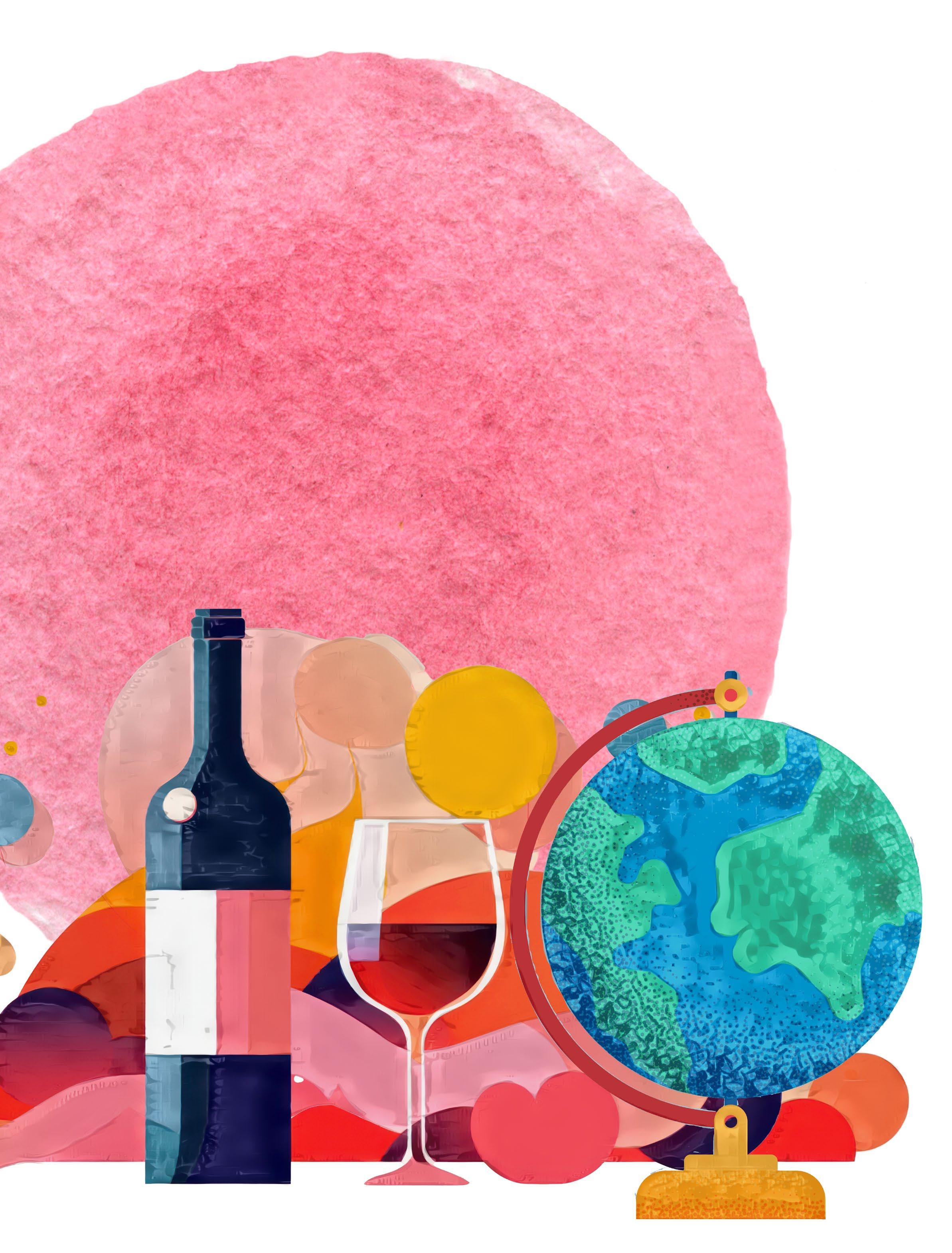

Wine making is steeped in history, with evidence dating back more than 8,000 years. Yet, the global wine industry today is undergoing rapid transformation. From exploring different terroirs to adopting cutting-edge technologies – such as AI, drones, satellite imagery, and blockchain –producers are innovating to meet climate and market challenges.
At the same time, many are returning to traditional methods including organic farming, low-intervention winemaking, and amphora fermentation – all the while embracing alternative packaging, for instance, canned wine. To respond to a growing demand for sustainability and authenticity, producers are increasingly pairing stronger environmental stewardship with richer storytelling to attract new audiences.
Yet the industry faces headwinds. Global wine consumption (by volume) has dropped to its lowest level since 1961. Younger consumers are not picking up the wine glass (and even less often the corkscrew), and traditional markets are embracing mindful, moderate drinking. Add to that rising production and shipping costs, regulatory uncertainty and a shifting retail landscape, and you have what Girtonian and wine expert Sarah Jane Evans MW (1972 Classics and Social and Political Sciences) calls “a more complex marketplace than ever before.”
“Winemakers need to wake up to the fact that [in most instances] wine is a Fast-Moving Consumer Good. There are all sorts of wonderful things that can be done to market to and attract new consumers.”
Evans, a Master of Wine since 2006, is an award-winning writer, journalist and former Co-Chair of the Decanter World Wine Awards – the world’s largest wine competition. She’s also a former Chair of the Institute of Masters of Wine and a global consultant and speaker.
“Those in the wine trade are asking themselves: ‘Will people graduate into wine later? Or is this a major life change, and wine is no longer important to the consumer?’”
Regardless of where the industry is headed, Evans believes producers and distributors can do more to reach new audiences. When writing about wine for BBC Good Food magazine, her strapline was “no jargon guaranteed”, a principle she still champions.
“Wine is fun; a delicious drink made in all sorts of ways. Being super-technical about it is not helpful.”
Evans argues that traditional customs and language around wine can be off-putting, starting with the packaging. A heavy, fragile glass bottle with a closure that requires a separate tool? And let’s not even mention the intimidation of opening a champagne cork. It’s no surprise that screwcaps have gained popularity.
In fact, more than 20 years’ worth of data from producers in Australia, New Zealand, Italy, and France show that screwcaps – specifically the oxygenpermeable liners inside – can support proper aging. This is very good news for fine wine lovers worldwide.

Canned wine is also gaining ground in the Readyto-Drink market. It’s accessible (no tools required), portable, single-serve, and has a lower carbon footprint. Higher-quality wines are increasingly available in cans, challenging the outdated notion that alternative packaging equals low quality. Alongside this, the rise of no- and lowalcohol wines, albeit from a small base, is offering more inclusive options for those seeking moderation.
“Winemakers need to wake up to the fact that [in most instances] wine is a Fast-Moving Consumer Good. There are all sorts of wonderful things that can be done to market to and attract new consumers.”
Evans also encourages a rethink of how we drink wine.
“You can have red wine with fish” she says. “And think about how wine is served in hot countries around the Mediterranean. It’s chilled, in a carafe, in a stemless glass, and it can be a wonderful experience. Yes, red wine should be served chilled, if the situation demands it.”

She’s also intrigued by wines from the Azores and the Canary Islands: crisp, fresh, and vibrant wines in all colours.
If we’re not to follow traditional wineries and appellations religiously, how do consumers, whether new or seasoned, navigate this evolving landscape?
Evans suggests curiosity, critical thinking, and a willingness to experiment.
As the climate warms, this kind of flexibility will become more common and more necessary.
Climate change is affecting heritage regions and driving demand for sustainable products. This presents a challenge: how to be both eco-conscious and economically viable. But there are also opportunities: consumers may turn to local growers and explore new locations.
Newer winemaking regions may have an edge, too. They are not bound by the strict rules of traditional appellations, like the French AOC (Appellation d’Origine Contrôlée) system, which once helped define quality but can feel restrictive nowadays. These technicalities can also alienate new drinkers.
“In newer wine regions, people aren’t forced to work with particular grapes or methods. They have greater creativity.”
For Evans, it’s not about labels “It’s about the people and the place behind the liquid.”
So where does Sarah Jane Evans recommend looking for exciting new wines?
“Look to the mountains. Producers everywhere are heading for the hills”
Inland hills near Málaga, Spain, are producing elegant Pinot Noirs, a grape typically associated with cooler climates. The elevation and interplay of ocean and land air currents create ideal conditions. Armenia, one of the world’s oldest winemaking regions, is emerging internationally. Another classic, Greece, is also making some fine wines.

Take orange wine, for example – an ancient style from Georgia made by fermenting white grapes with their skins. It’s a divisive style, and some dismiss it on initial tasting, perhaps because they’ve encountered a poorly stored or long-opened sample. Evans encourages a more thoughtful approach:
“Ask yourself: how was the wine stored? How long has it been open? How did you drink it? Orange wine won’t be sweet and juicy, but it can be a good gastronomic wine (wine that pairs very well with food) with an almost savoury profile.”
Her advice? Find wine shops or bars with high product turnover and knowledgeable staff. And don’t be afraid to go back to school.
“Do your research. University gives you critical thinking skills. Apply the research habits honed at university to open up the world of wine.”


Digital marketing, storytelling, and immersive experiences are just some of the tools helping wineries and distributors broaden their appeal beyond traditional wine drinkers. Two pioneering Girtonians who exemplify this approach are Sophia Bergqvist (1978 Geography) and Marion Lewis (1969 Law).

Sophia Bergqvist co-owns Quinta de la Rosa, a vineyard in Portugal’s Douro Valley that began as a christening gift to her grandmother in 1906. Today, under Bergqvist’s leadership, it’s a beacon of innovation and sustainability. She was among the first in the region to shift focus from Port to high-quality table wines, which now make up two thirds of the estate’s output. Sustainability runs through every part of the business, from the vineyard and winery to the boutique hotel and restaurant.
Her vision extends beyond wine: Quinta de la Rosa launched the Douro’s first craft brewery, led by her brother and son, and it also produces a premium olive oil. As the only British woman managing a Port house, Bergqvist has modernised the estate while preserving its heritage and creating a compelling blend of authenticity and forward-thinking hospitality.
“Whether it’s reintroducing traditional vine care methods to maintain the freshness in our wines during increasingly hot Douro summers or switching to keg wine in the winery restaurant to reduce our eco footprint – adaptability is key to us here at Quinta de la Rosa.”
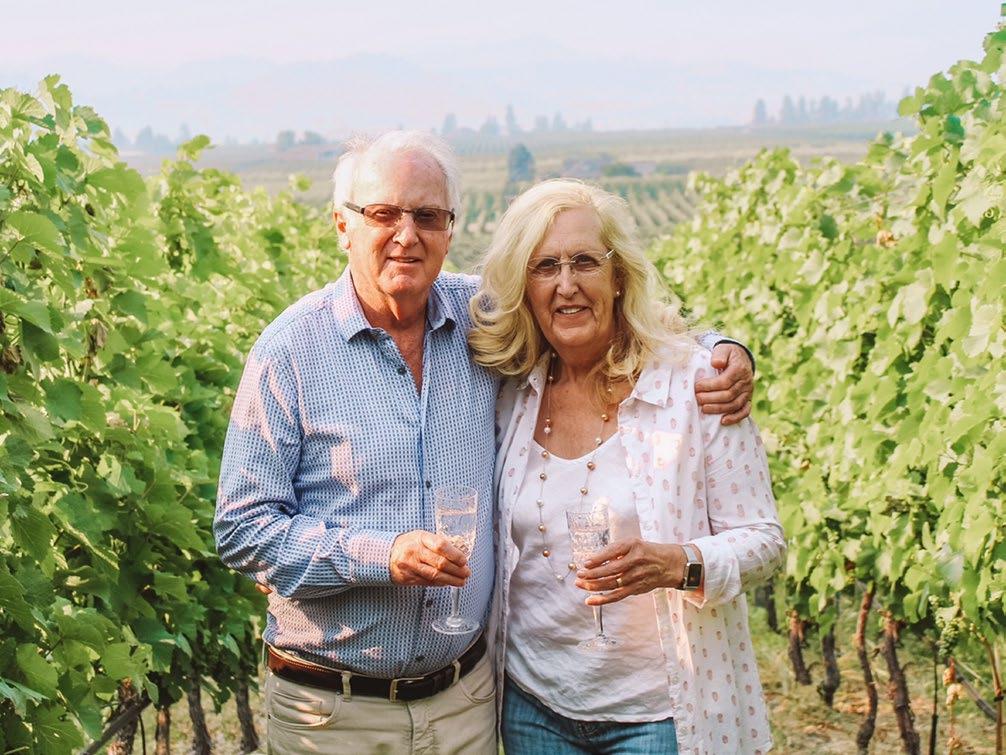
Across the Atlantic, Marion Lewis and her husband Wyn (an alumnus of Queens’ College, Cambridge) began developing The Vibrant Vine in Kelowna, British Columbia, in 2003. Eight thousand Pinot vines later, the Lewis family transformed a modest vineyard into a dynamic cultural destination that fuses wine, art, and music. Understanding that success meant creating a memorable experience, they built the world’s only 3D art winery, where visitors wear 3D glasses to explore artwork by their son, Phil Lewis.
The Vibrant Vine gained international acclaim after winning “Best White Wine in the World” at the 2013 World Beverage Competition in Geneva. Today, it’s a hub for live music, weddings, and art workshops – proof that wine can be a gateway to creativity and community.
“Building our winery in the Okanagan Valley has drawn on every aspect of my experience at Girton – from Natural Sciences to Law. The Vibrant Vine has become a destination for tourists and locals alike, where sharing a glass of wine is associated with happy memories!”
Interest in podcasting has surged over the last decade, as people around the world use the medium to start conversations, raise issues, and build an audience. But how is it changing, and what’s next?

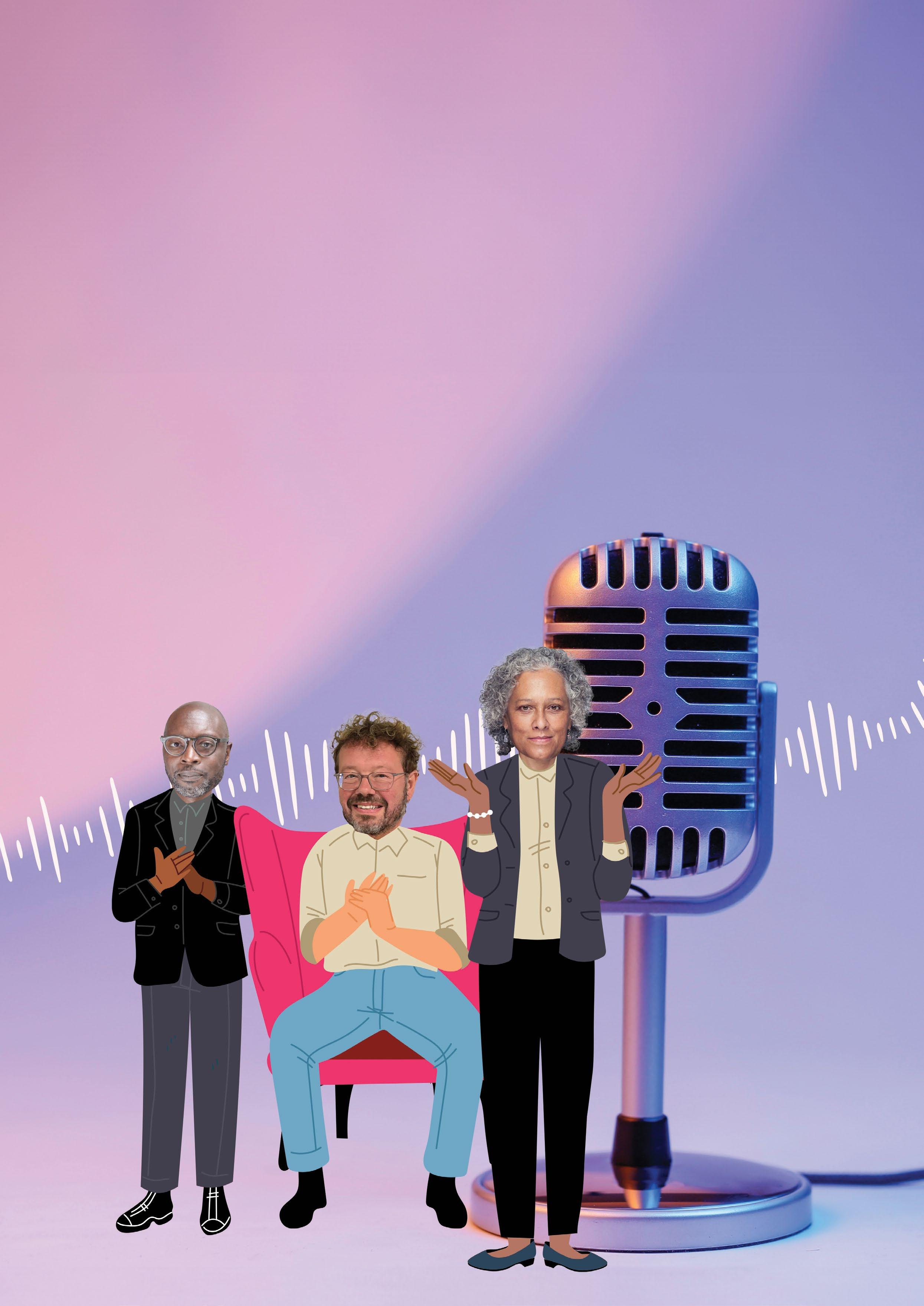
Pat Cumper (1973 Archaeology and Anthropology) has spent her career bringing stories to life in sound.

In Jamaica, she wrote for one of the most popular radio soaps on the island, putting together around 250 episodes a year. In the UK, she created audio dramas for the BBC World Service, BBC Studios, and Radio 4, and adapted the works of legends such as Maya Angelou and Toni Morrison.
“It’s next to reading in terms of creating worlds in your imagination”, she says. “You can throw down some sails flapping and a few creaking boards, and suddenly, you’re at sea.”
A few years ago, she started The Amplify Project, interviewing talented black writers about their approaches to writing. This gave her an opportunity to explore a slightly different form of audio storytelling: Podcasting.
“I remember thinking, ‘Oh wow, am I really allowed to do this? This is such fun.”
“There’s a strict discipline for 15-minute radio episodes. But here, you can actually let the subject breathe.”
“You don’t have to chop it down or have a producer phone you up to tell you what you’re expected to say. If someone says something interesting, you can just follow it.”
Freedom is a huge part of the appeal of podcasting. Creators can express themselves, without expensive equipment, extensive technical skills, or a broadcasting deal.
Audiences have responded. Podcasts now have more than 584 million listeners worldwide, with an estimated 15.5 million in the UK alone in 2025. Successful podcasters are setting trends, starting conversations, and even influencing elections.
So how is this mainstream attention re-shaping the format, and what’s next?
Pat Cumper and co-founder Pauline Walker set up The Amplify Project to shine a spotlight on exceptional black writers who deserve more attention and encourage them to share what inspires and drives them.
The podcast turned out to be an ideal format for bringing those stories to life.
“I remember one conversation with a writer”, Cumper says.
“I asked them, ‘How do you look after your creative self?”, and they just burst into tears. And then I burst into tears as well, because no one cries alone around me.”
“That’s all in the podcast, because it’s a moment where the vulnerability shines through.”
Cumper sees the show as less of an interview, and more of a “joint enterprise between you and the person you’re talking to”.
“Before this, I knew my writing process but didn’t really understand anyone else’s. Now, having sat down with so many writers, I’ve got a sense of how different writers work, and what helps and doesn’t help them.”
For Derren Lawford (1994 English and Social and Political Sciences) of UK indie studio DARE Pictures, that sense of conversation about a shared passion is a massive part
of what makes a podcast work.
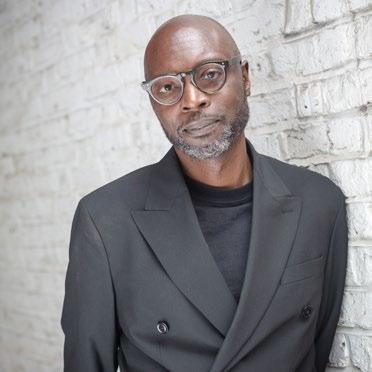
“The starting point is invariably something like, ‘I am really passionate about this thing, and I want to talk to other people who are equally passionate’. It’s unapologetic, and it’s not necessarily looking to attract people who aren’t interested, which is a bit of a distinction from what publishers, broadcasters and commissioners have to do.”
Before founding DARE Pictures in 2022, Lawford helped to set up BBC 1Xtra, and was the first multiplatform editor for BBC One’s Panorama. He’s worked with a dizzying range of stories in a variety of different formats, including TV, radio, journalism, and short-form content.
During lockdown, he put together a nine-part podcast series of his own. Original Pirate Material shared the story of Anthony ‘Tonz’ Cummins, and his decades-long life as a pirate.
“I was in the UK. My co-host was in Portugal, and the subject was in Italy. We recorded it on Zoom and got it out there. We pressed ‘record’, started talking, and away we went.
“It’s that sense of autonomy that people find really empowering. It’s a conversation that people are being invited to listen to, and that conversation could be about sexuality, wellness, politics, or how you manage ADHD.
“Podcasts aren’t necessarily an easy way to get rich, but they can be an easy way to enrich your daily life.”
Of course, in some cases, people have done very well indeed out of podcasting. Podcasts such as Parenting Hell, Off Menu, and The Diary of a CEO are household names in the UK. Podcast producer Goalhanger Productions totalled more than 400 million downloads in 2024, with titles such as The Rest is Politics, The Rest is Football, and The Rest is Entertainment.
In the USA, podcasts even helped to shape the 2024 election. Candidates Donald Trump and Kamala Harris saw podcasts as a way to reach the electorate, appearing on major shows such as The Joe Rogan Experience and Call Her Daddy.

“Podcasts are definitely part of a power shift in media”, says film, TV and digital producer and commissioner Adam Gee (1993 Modern and Medieval Languages).
“Joe Rogan is a prime example of that. An individual can amass and ‘own’ quite an audience, and your audience is your power. When you’re talking to that many people, then people will be interested in using your channel to reach the public.”
In February 2024, Rogan signed a $250 million contract with Spotify and now draws in millions of views per month. However, that’s not the reality for everyone. Statistics from Buzzsprout suggest that if a podcast gets more than 30 downloads per episode in its first week, that
puts it in the top 50% of podcasts worldwide.
That’s not to say that you can’t make a living from a podcast. It’s just that – in many cases – it pays to think broader.
“You can’t just rely on advertising”, says Gee. “There are other things like subscriptions, memberships, premium content, and so on, which are well worth considering.”
“However, what’s really exciting to me is that people are realising that they can do the podcast, the merchandise, and the live event, maybe launch a training programme, or some other publication. They’re working on many fronts, and when they’re all aggregated, you’ve got a chance of a viable project there that could fund itself.
“I think that’s a really good example of how the era of digital has changed where value lies. When you’ve got a technology that can copy films, music, video, and images perfectly and without degradation, the value is in anything that’s not copyable. It’s in those unique experiences, like a music gig, a live podcast, or a performance - things that change from one day to the next and are never quite the same.”
Lawford points to the example of TellyCast, a TV industry podcast set up by Justin Crosby at the start of lockdown.
“It was a way to connect with people about stuff in the industry and stay connected. Then it expanded into live interviews and became a festival about the industry. This year, they launched the TellyCast Digital Video Awards.
“It demonstrates that if you can harness people’s interests, you can take them with you to all sorts of places.”
Today’s podcaster needs to be versatile, savvy, and open to opportunities.
On top of that, even the form itself is changing under their feet. YouTube is now, reportedly, the number one platform for podcast discoverability, and the use of video in podcasting is becoming more and more common.
“Because a lot of podcasts are being distributed on YouTube now, they’re forming a different type of viewing experience”, says Lawford. “A lot of visual podcasts have a similar rhythm to the chat shows that you’d have seen in the 1970s and 1980s.”
Gee agrees that the move to video has been a “definite trend” over the last few years.
“I always tended to listen to podcasts when I was running, or ironing, or doing stuff in the house”, he says. “My children’s generation – however – are more inclined to watch the video version of a podcast, but in a different, less concentrated way. That’s a really interesting trend, because it means that podcasting is becoming basically cheap TV.”
“On top of that, the medium is also struggling with the same problem as TV, in that there’s just tonnes and tonnes of it, throwing up the challenges of discoverability and audience retention.”
There are reportedly as many as 4.5 million podcasts available worldwide. That could be set to grow exponentially, with companies experimenting with podcasts generated by AI.
“I guess the issue around automation is that you could deprive podcasts of the very quality that made them exciting for people in the first place – unique and authentic voices”, says Lawford.
“If you can get an AI to say anything, how do you know which podcast is coming from a place of truth?”
So where do we go from here?
Adam Gee has seen many shifts in his career, from his time as Multiplatform and Online Video Commissioner at Channel 4 to his new role as Head of Documentary Campus Masterschool in Berlin.
He says that, due to the pace of change “thinking about anything ten years ahead in this era of technology and media is a pointless exercise”. After all, ten years ago, the documentary podcast, Serial, was the standard-bearer of quality podcasting, and companies such as Gimlet and Wondery were developing intensive, expertly crafted audio stories. These companies were snapped up by Spotify and Amazon respectively during that “golden age” but have since faded from view.
Gee notes that these types of podcasts were “massive research undertakings” and “inevitably quite expensive”. But he sees potential for scripted, high-quality, “premium”
podcasts to re-emerge as producers fight to gain attention.
“My instinct is that we might well see premium productions come back as a way of differentiating from the sea of stuff that now exists, although it might not be in quite the same form.”
DARE Pictures was set up to tell stories under the banner of ‘Diversity, Allyship, Representation, and Empowerment’. It’s going from strength to strength, winning Emerging Indie of the Year at the 2025 Broadcast Awards. For Lawford, it’s not so much about the medium, but the power of the stories you tell.
“When I launched DARE, my approach was to focus on story, people, and values, and then work out the form later. I was keen to find ideas that had the potential to be told in different ways. I try not to apply more weight to one form of storytelling than another, as sometimes the distinctions can be quite arbitrary.
“There are people who say you can only do TV if you know this stuff or do podcasts if you know that stuff.
“For me, stories are there to be told. If you can tell them, you should try and do so, by whatever means you can.”
Cumper hopes that podcasting can retain some of that “flexibility” and that “rebellious element”, and that it resists the temptation to become too rigid and “calcified”. However, she notes that podcasting still
retains one of its most exciting and empowering traits.
“Anyone can put up a podcast. Nobody may listen to it, but anyone can do it. I’m interested in how the form evolves, because I love the fact that everyone can participate and potentially reach many other people.
“You can define your own rewards, and it doesn’t always have to be about getting half a million listeners.
“With our project, I feel a real pride, because we’ve done the best we can. And sometimes that’s the reward in doing something: Creating


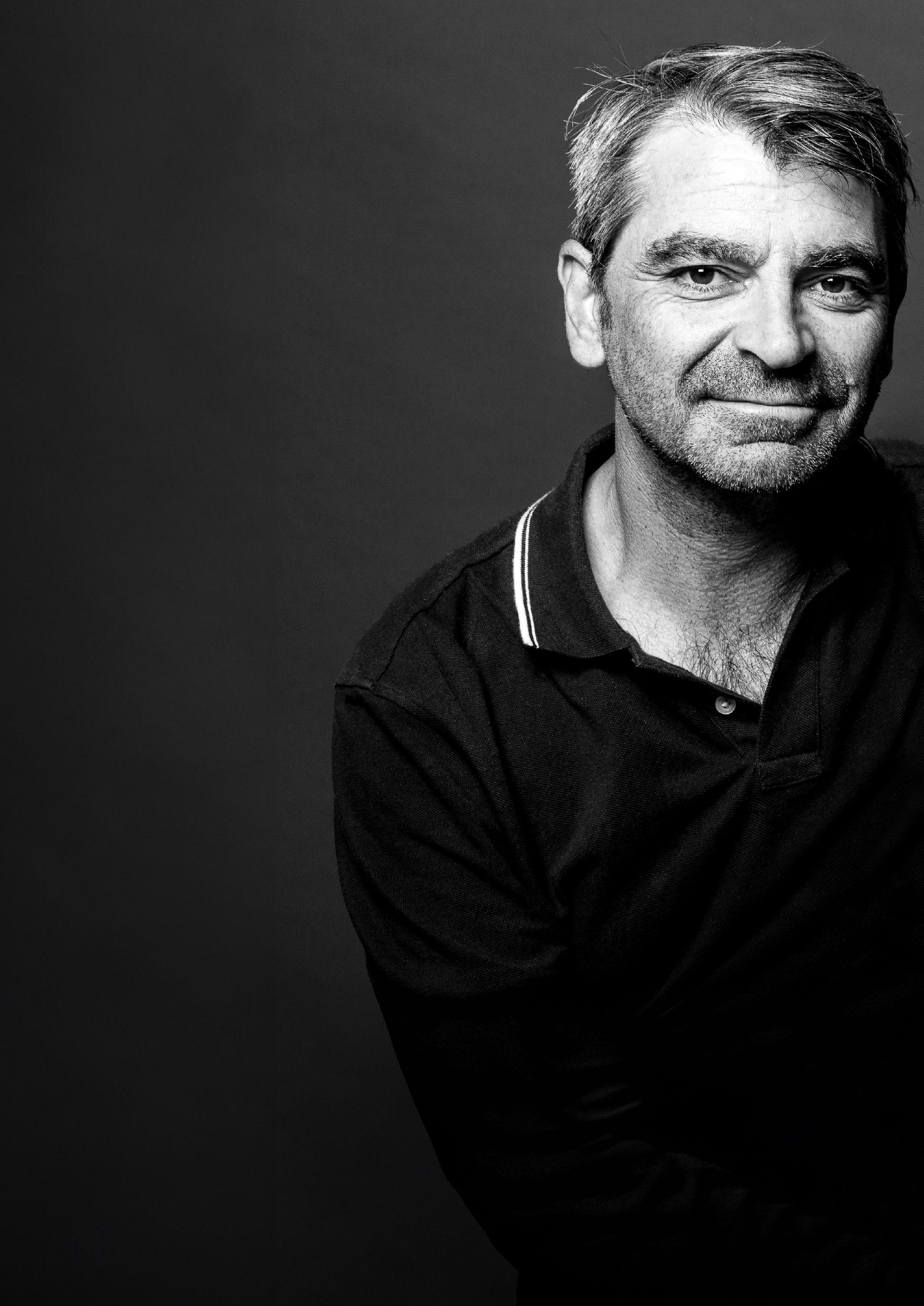
Internationally respected author Joseph O’Neill talks about how his globetrotting childhood shaped his style, his golden rule for writing, and the power of studying literature today.
Joseph O’Neill (1982 Law) remembers two things very clearly from his time at Girton in the early eighties. The first is “long, labyrinthine corridors”. The second is “kindness”.
He experienced both first-hand during his final year. When his offcampus landlord decided to sell his lodgings, Girton stepped in to offer him a vacant Fellow’s room in the College while he crammed for his crucial exams. “I lived quite comfortably there, in solitude, in my idyllic room in a tower”, he says. “Perhaps too comfortably.
“I’d become a little too used to wandering down in my pyjamas, smoking and unshaven, to collect my mail. One time, a group of potential parents or benefactors suddenly appeared around the corner,” he laughs. “I got a kind note later asking me if I would mind
possibly getting dressed before I ventured downstairs in future.
“That’s the sort of thing I remember. That wonderful sense of forgiving gentleness and kindness, and how they all looked after me.”
There is something vaguely familiar about the character in that anecdote, feeling their way through a vivid, strange environment that is not their own. There are echoes of it in some of O’Neill’s most celebrated novels, from Hans’ experiences of post-9/11 New York in Netherland to the protagonist of The Dog, fleeing a broken relationship to work for a super-rich family in Dubai.
This is probably not a coincidence. O’Neill was born in Ireland, but his mother is Turkish, and much of his early childhood was spent following his father’s construction work around the world. “I’m an early
example of what they call a ‘thirdculture kid,’” he says. “Most writers inhabit a particular culture and write out of that culture. That’s trickier for me,” he reflects. “As a third-culture kid, you have a passport and a nationality, but even when you’re back in your supposed homeland, there’s still that sense of being abroad. It feels like I’m abroad wherever I go.”
While that feeling was always there, it wasn’t until he moved to New York in 1998 that O’Neill fully realised how it defined him as a writer. “I became quite deracinated and found myself, in a terrifying sort of way, able to write this novel about a Dutch person playing cricket in New York. Obviously, the details of the plot were not mine, but the situation was not a million miles away from my own. In that way, I felt like I was able to access who I was.”
That novel was Netherland, an award-winning tale of cricket, friendship, and alienation. The 2008 book received critical acclaim and even made it onto President Barack Obama’s recommended reading list. However, it is not O’Neill’s favourite of his novels.
That accolade goes to The Dog, the follow-up that arrived in 2014. O’Neill immersed himself in philosophical texts, challenging himself to conjure up the theorising voice of the protagonist.
“It has that hyper-logical, slightly neurotic voice, which was the most fun for me to read and write. I can actually re-read bits of The Dog and find it enjoyable, which I can’t do with some of the others.” That love of voice is at the heart of O’Neill’s writing, along with a reverence for style.
“I’ve come to understand myself as a ‘stylist’. I tend not to plot by having action points that I’m writing towards. I almost plot a sentence at a time, and each sentence is a unit of surprise or gratification.
“Style doesn’t necessarily mean you’re writing flowery language all the time. It just means that you’re properly attentive to your medium, and that you try to create a world in a way that is unattainable in other forms.”
“I feel like the only rule about writing is that it should be accurate, and surprising. If you’re surprising people without giving up on accuracy, then you’re writing well.
O’Neill’s latest novel, Godwin, is a testament to his appreciation of style. But there’s something else there, too. “I don’t think I’d ever written a book as eventful as that before”, he says. “I’d always written books that were more ruminative, whereas in Godwin, you’re racing forward all the time. I got drawn into this adventure story.”
Godwin is the tale of Mark Wolfe, a technical writer from Pittsburgh who unexpectedly finds himself sucked into the search for the eponymous young African football prodigy. Watching this mysterious child play on a short video, the siblings see the prospect of wealth and status – for the person that discovers him.
The book is a treasure hunt of sorts, building the excitement as the global race for this prodigy intensifies. It’s also a book about the Business of Football, and how the vast riches of the global game are felt across cultures and continents.
However, Godwin is not just Mark’s adventure. O’Neill also weaves in another voice; one that appeared as he grappled with his main character during the writing process. Lakesha runs the technical writing co-op that Mark is part of, and her struggle to maintain and protect it anchors the story as the quest for Godwin progresses.
“Actually, I feel more like a real writer when I’m not writing. I try to keep it as voluntary as possible, which can lead to big gaps in my writing habits.
“However, I’m always thinking about this business of making sentences and making text and enjoying it…or trying to.”
That impulse is currently finding its form in different ways. He is still writing short stories, as well as articles about the current political situation and the state of the USA’s Democratic Party. He’s also a Visiting Professor of Written Arts at Bard College in New York.
O’Neill notably opted to study Law over English Literature at Cambridge, as he felt the latter was “too precious to study”. However, he has since developed a strong appreciation for the subject and its value in today’s world.
“I feel like the only rule about writing is that it should be accurate, and surprising. If you’re surprising people without giving up on accuracy, then you’re writing well.”
“The study of literature is more relevant today than it has ever been, as it’s essentially a study of interpretation. You have to be able to interpret the writing, but also the world in which it belongs.
“I was several years into the writing of the book when this quiet, calm, slightly scientific voice came to me. I wasn’t sure why she appeared at first, but you have to listen to what your imagination is telling you, even if it’s worrying and uncertain.
“There’s definitely a power in having a single voice at the centre of the novel, but ultimately in this case, the imbalance made the book more interesting for me.”
So, what’s next? Godwin emerged a decade after the publication of The Dog, and O’Neill admits that he is not sure he will write another novel.
“I think the political crisis we’re having is, to a significant extent, a crisis of interpretation. For example, climate change is basically a bunch of stories about what’s happening to the climate, and people need to be able to understand and interpret those stories, and what they mean.
“So, it’s a wonderful time to be studying literature, because it gives you the skills to understand and survive the world around you.”
Class Notes is the place to celebrate and share alumni news. Whether that is births, marriages and civil partnerships, anniversaries, career milestones, or recent publications. Submissions received after 31 July 2025 will appear in a future edition.
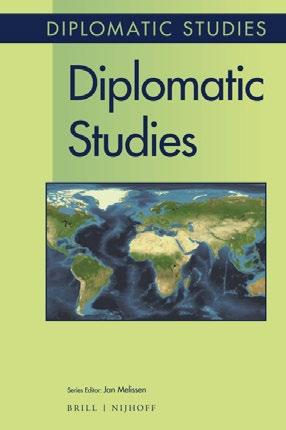
Naif Al-Mulla (2014 Politics and International Studies) published Going Along to Get Along: Diplomatic Pressure and Interstate Socialization in Diplomatic Studies, Volume: 22, 2025.

Congratulations to Chris Ainsworth-Patrick (Patrick, 2007 Computer Science) and Danielle Ainsworth-Patrick on the birth of their second son Max Edmund in February 2025.
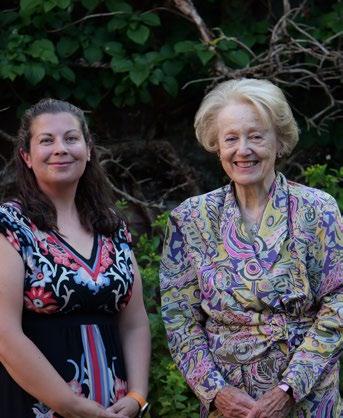
The Rt Hon Lady Arden of Heswall DBE (1965 Law) was appointed as an International Judge to the Supreme Court of Singapore in December 2024 and received an Honorary Doctorate in Law from the
University of Cambridge in June 2025.
Congratulations to Thomasina Ball (2011 Mathematics) who married Siddharth Gandhi (St Catharine’s, 2011 Natural Sciences) in August 2023.
Congratulations to Helen Ballantyne (Smith, 2012 Archaeology and Anthropology) and James Ballantyne (2012 History) on the birth of Hamish, born in June 2023.
Nick Bason (1998 Social and Political Sciences) was elected Chair of the Chartered Institute of Public Relations (CIPR) Corporate and Financial Group.

Ros Battersby (Green, 1967 Classics) and her husband John celebrated their 50th wedding anniversary (to the day and hour!)
with a Blessing in chapel and a champagne luncheon in College on Saturday 3 August 2024.
Clare Best (1973 Geography) published Beyond the Gate (Worple Press, 2023), Each Other (Waterloo Press, 2019).
Ann Bond (Avery, 1949 Music) published A Guide to Mozart’s Harmony (Carnegie, 2025).
Carey Born (1986 History of Art) first feature as director, Cyborg: a documentary, (First Born Films, 2024) was released.
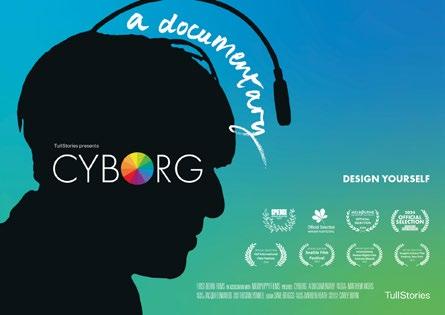

Alistair Brownlee (2006 Medicine) was awarded an OBE in the King’s 2025 Birthday Honours List for services to Triathlon and Charity.
Nici Bush (Seed, 1989 Natural Sciences) was named among Technology Magazine’s Top 100 Women in Technology in April 2025.
Janet Collyer (Kiwana, 1977 Engineering) was awarded an MBE in the King’s New Year’s Honours List for services to quantum hardware and cybersecurity.


Congratulations to Hannah Elliott (Sensecall, 2007 Law) and Tom Elliott (2001 Engineering) on the birth of Ursula in September 2023, a sister to Henrietta.
Meg Day (1967 Mathematics) has been awarded a BEM in the King’s 2025 Birthday Honours List for services to her community in Kidlington.
Congratulations to Jonny Davies (2007 Modern and Medieval Languages) who married Caitlin Reilly in May 2024.

Vanessa Dekou (2002 Management Studies) was appointed to the Board of UCL Global Business School for Health.

Emma Donoghue (1990 English) published her sixteenth novel, The Paris Express (Picador, 2025).
Simon Duckworth OBE, DL (1986 Theology and Religious Studies) was elected an Honorary Fellow of Gresham College.
Alison Elliott (1976 Natural Sciences) was awarded an OBE in the King’s New Year’s Honours List for services to Medicine and Global Health.

Sarah Jane Evans (Phillips, 1972 Classics and Social and Political Sciences) published The Wines of Central and Southern
Spain: From Catalunya to Cadiz (Academie du Vin Library Ltd, 2025), a companion volume to The Wines of Northern Spain.
Karen Fawcett (1982 Economics) was appointed as Chair of the Board of the Global EverGreening Alliance in July 2025.
Jane Fraser (1985 Economics) was named in Barron’s 100 Most Influential Women in US Finance in March 2025.
Clare Furniss (Clark, 1993 AngloSaxon, Norse, and Celtic) published The Things We Leave Behind (Simon & Schuster Children’s UK, 2024).
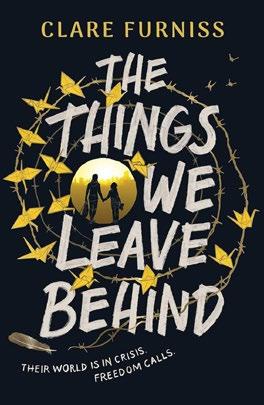
Robindra Ganeri (1984, Oriental Studies) became Professor at the Pontifical University of St Thomas Aquinas, Rome in October 2024.
Georg Gerleigner (2007 Classics) edited (jointly) Farben sehen! Polychrome Skulptur und griechische Vasen. Booklet zur Ausstellung in der Antikensammlung der FAU Erlangen-Nürnberg (FAU University Press, 2024); and published
(jointly) ‘Die Beschäftigung mit antiker Polychromie in der Erlanger Antikensammlung’, Farben sehen! Polychrome Skulptur und griechische Vasen. Booklet zur Ausstellung in der Antikensammlung der FAU Erlangen-Nürnberg, ed. K U Mann, A Reinhardt, F Gapp and G S Gerleigner (FAU University Press, 2024); and ‘Katalog’, Kosmos des Fragments. Ornament und Oberflächen griechischer Keramik, ed. G Pöhlein and A Grüner (Wasmuth, 2024).
Hannah Greenstreet (2011 English) published her first book, Radical Realisms in Contemporary British Theatre: Rethinking Feminist Form in Plays by Women (Bloomsbury, 2025).
Sarah Greer (Walk, 1981 English) was awarded a CBE in the King’s 2025 Birthday Honours List for services to Higher Education.
Vinaya Gunasri (2009 Natural Sciences) was awarded the Inaugural British Association of Cancer Research (BACR) Early Career Award.
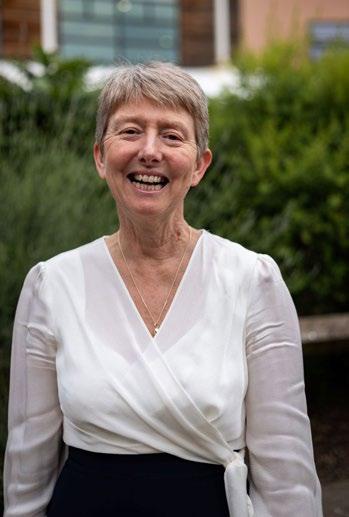
Sian Hampton (Thomas, 1984 History) was awarded an OBE in the King’s Birthday Honours List for services to Education.
Lady Gillian Hancock (Finlay, 1956 Modern and Medieval Languages) published Popular Song (Troubador Publishing, 2025).
The Rt Hon the Baroness Hale of Richmond, DBE, PC (Hoggett, 1963 Law) published With the Law on Our Side: How the law works for everyone and how we can make it work better (Bodley Head, 2025).

Marilyn Harper (Flemming, 1974 Music) published her Preces and Responses and The Dulwich Village Service (Encore Publications, 2024).
Congratulations to Lydia HatfieldBarton (Barton, 2010 Modern and Medieval Languages) and Matthew Hatfield Barton (Hatfield, 2010 Natural Sciences) on the birth of their daughter, Cleo Alexandra Hatfield-Barton in June 2024.

Rosemary Howell (Griffin, 1949 Classics) was awarded a BEM in the King’s New Year’s Honours List for services to Girlguiding and to the community in Devon.

Congratulations to Ross Hutchinson (2016, History) who married Anastasia Watson in February 2023.
Celia Ingham Clark (Parsons, 1977 Medicine) was awarded a DBE in the King’s Birthday Honours List for services to the NHS.

Alison Klevnäs (Draper, 1998 Archaeology) ) published (jointly with Girton Fellow, Dr Emma Brownlee) ‘Where is everybody? The unburied dead in late Roman and early medieval England’ in Antiquity, 98(402) (2024) and Klevnäs, A., Ljung, C., Noterman, A. A., & Brownlee, E. (2024).
‘Groundbreakers: Human Remains and Radiocarbon Dates from the First Burials in Churchyards on Gotland’, Current Swedish Archaeology, 32, pp. 65-98.

Congratulations to Rachel Anna Knighton (2013 English) on the birth of Simeon Paul Raphael Dominiak in May 2023.
Adam Knobler (1985 History) published Crusading in the Long Nineteenth Century (Routledge, 2025).

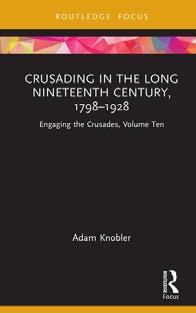
Vincent Ko (2012 Law) was elected President of the Oxford and Cambridge Society of Hong Kong.
Jenny Lau (2003 Music) published her debut non-fiction book An A-Z of Chinese Food (Recipes Not Included) (Hachette, 2025).
Gwyneth Lewis (1978 English), the inaugural National Poet of Wales, published her memoir Nightshade Mother: A Disentangling (Calon, 2024).
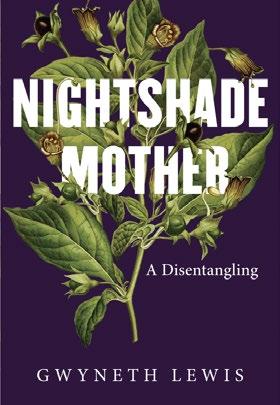
Fadi Makki (1993 Law) was appointed as the Lebanese Minister of State for Administrative Reform in February 2025.
Ursula Martin (1972 Mathematics) was awarded a DBE in the King’s 2025 Birthday Honours for Services to Computer Science.

Tim May (2011 Geography) was appointed Curator of Maps and Mobilities at the Royal Museums Greenwich in February 2025.
Mandy McDonald (Ferguson, 1966 Classics) published a poetry collection titled The Unreliability of Rainbows (Yaffle’s Nest 2024).
Paul Mercer (1990 Law) published his debut books Allahu Akbar –Overcoming Hate and Finding Peace (2025, self-published) and Whisperings (2025, self-published).
Katharine Nelson (Duffin, 1997 Veterinary Sciences) was admitted as a Fellow of the Royal College of Veterinary Surgeons for meritorious contributions to clinical practice.

Okechukwu Nzelu (2007 English) was elected a Fellow of the Royal Society of Literature.
Debby Ounsted CBE (1969 Modern and Medieval Languages) was elected an Honorary Fellow of Gresham College.
Jeffery R Pendleton (2022 MPhil Biological Anthropology) was commissioned as a Kentucky Colonel, in recognition of his academic achievement, representing Kentucky abroad and services to the community.
Yvonne Reddick (2005 English) published Burning Season (Bloodaxe, 2023) and Anthropocene Poetry (Palgrave MacMillan, 2023).


Marnie Riches (1990 Modern and Medieval Languages) published The Housekeeper of Holcombe Hall (Penguin, 2025) and The Gardeners’ Club (Penguin, 2025).
Congratulations to Charlotte Rogers De’Ath (RogersWashington, 2011 Geography) and Oliver Rogers De’Ath (De’Ath, 2011 Economics) and on the birth of Ellis Michael in April 2025, a brother to Jemima.
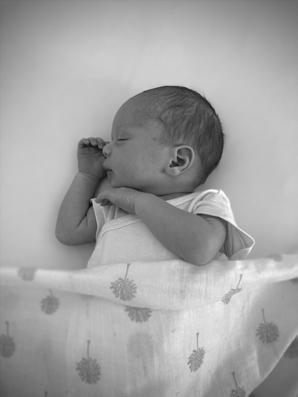
Ido Rosen (2019 Asian and Middle Eastern Studies) published New Directions in Israeli Media: Film, Television, and Digital Content (University of Texas Press, 2025) and Independent Content Creators Online Transmedia, Crossovers, and Millennial Culture in Israel (Palgrave Macmillan, 2025).
Clare Sargent (1978 Archaeology and Anthropology) was elected an Associate Fellow of the Royal Historical Society.
Jocelyn Scutt (1974 Law) published Wage Rage for Equal Pay: Australia’s Long, Long Struggle (PalgraveMacMillan, 2025).
Congratulations to Helen Skaer (Hammond, 1965 Natural Sciences) who has been awarded the prestigious British Society for Developmental Biology Waddington Medal.
Pat Treacy (1980 Law) published EU Competition Law and Intellectual Property Rights (Edward Elgar Publishing, 2024).
Holly Trusted (1974 English) published The Sculptural Works in the Spanish Gallery (Centro de Estudios Europa Hispánica, 2024).
Lynn Turner (Gemmell, 1977 Veterinary Medicine) co-edited the BSAVA Textbook of Veterinary Nursing 6th Edition (2020).

Congratulations to David Vyravipillai (2007 Law) and Elizabeth-Jayne Vyravipillai on the birth of Sienna Grace in June 2024.
Patricia Wheeler (Webster, 1959 Modern and Medieval Languages) Tyorkin in the Other World (Translated from Russian, Smokestack Books, 2022).

Elspeth Wilson (2014 Human, Social and Political Sciences) published her debut novel, These Mortal Bodies (Simon & Schuster UK, 2025).
Amanda Wynne (2006 Archaeology and Anthropology) published her debut horror fiction novel Flat-Coat (New Generation Publishing, 2024).



In many ways, scientific research is a quest to chart the unknown. Most ventures are guided not by a map or a set of step-by-step instructions, but by curiosity and the drive to solve a specific problem. Every so often, however, a scientist focuses on drawing the map itself and, in doing so, creates a tool that can guide others toward discovery.
This is exactly what the team of Girton Fellow Dr John Tadross, Consultant Pathologist and Molecular Pathology Clinical Lead at the East Genomics Laboratory Hub, has done – mapping out one of the human brain’s most mysterious regions in his pursuit of more effective treatments for obesity.
“There is a small, walnut-sized part of the brain called the hypothalamus that functions a bit like a control centre,” John explains. “It controls weight and hunger, as well as other
using mouse models may not work as expected in people. “One weakness across the scientific community,” John adds, “is not always knowing how relevant a mouse model is to the specific human problem you’re studying. In obesity, we need to know whether the human brain has the same pathways. Otherwise, we risk barking up the wrong tree.”
“Humans are messy. You’re different from the person nearest to you in so many ways, and all that messy reality comes through in the data.”
key processes, including sleep. Until about five years ago, around 90% of what we knew about how it works came from studying mouse models.”
For decades, scientists have relied on mice to understand the human body and develop new treatments. They are convenient research subjects, living in controlled environments and producing consistent data. But as John points out, “humans are not mice”. And it comes to obesity, that difference matters: “We know that in humans, body weight regulation is a brain function,” he explains. “So, we have to ask: how similar or dissimilar are the brain pathways that control weight in mice and in humans?”
It may sound like a simple question, but its implications are huge. If those pathways differ, drugs designed
That’s where John’s project comes in. Over the last six years, colleagues at the University of Cambridge’s Institute of Metabolic Science and the Max Planck Institute for Metabolism Research in Cologne have been creating “a tool a bit like Google Maps, but for the hypothalamus”, as John puts it.
Using more than half a million cell samples from around twenty human donors, the researchers have built the first ‘human HYPOMAP’ – a three-dimensional, digital “atlas” of the human hypothalamus, which allows scientists to zoom in to the level of a single cell and study its position and interactions with other cells and genes within the brain.
The potential impact of this work is immense. Drugs like Ozempic, which have been hailed as major breakthroughs in the treatment of obesity, were largely developed using mouse models. “Previously, we have had to assume that these drugs work the same way in humans as they do in mice,” John explains. “Having this zoomed-in version of
the human hypothalamus will help us understand when, how, and why that is not the case.”
The project pushed the limits of what was technically possible, both in the lab and in computational analysis. On the one hand, working with human tissue can bring its own challenges. “Humans are messy,” John laughs. “You’re different from the person nearest to you in so many ways, and all that messy reality comes through in the data.” Yet, that very complexity is also what gives the work its strength. The computational side of the research involved a considerable amount of trial and error, and repetition. “We were just behind the first major wave of AI, so much of it was done the hard way. But now, with these new tools, the next six years could look very different.”
Perhaps most excitingly, the map developed by the team is not static. “We built this atlas, so it could grow,” he says. “Other researchers can plug in their latest data and check whether what they’re studying is relevant to the human condition. It’s meant to be a living resource. We want it to keep growing and evolving as our understanding of the brain deepens.”
In other words, the map is just the beginning. For scientists around the world searching for better, safer, and more personalised treatments for obesity, the work of John’s team offers not only a guide but, potentially, a new way of navigating the human brain itself.

Many great mysteries start to unravel thanks to the smallest clues. For Dr James Wade and Dr Seb Falk, a careerdefining discovery began with a picture passed over the high table at a Girton lunch.
“It was kind of casual,” says James, “It really was a serendipitous meeting. We were just sitting at lunch, and I said to Seb, ‘Why don’t you take a look at this image on my phone?’”
That morning, James had been poring over a mysterious medieval manuscript. First uncovered in 1896 by cataloguer (and ghost-story writer) M.R. James in Peterhouse’s Perne Library, the Humiliamini sermon was found to contain the sole surviving fragment of a lost literary treasure. The Song of Wade was once a popular and beloved tale, its titular hero surfacing in two of Chaucer’s most enduring works. Yet this remarkable discovery only deepened the mystery surrounding it.
Standard translations of the fragment – three Middle English lines within a Latin sermon – render it into a monster-filled epic. For over a century, that view has baffled scholars. It also clashes with Chaucer’s dry, knowing portraits of courtly intrigue in The Canterbury Tales and Troilus and Criseyde. Why would the master chronicler of human nature draw on a story so steeped in fantasy?
James found himself fixating on this question. After their brief exchange over lunch, he emailed the photo to Seb with a note so tentative that, in retrospect, it makes them both laugh. “It began ‘Have a look…no worries if you’re not interested/don’t have time/can’t be bothered.’” James recounts. Fortunately, Seb could indeed be bothered.
Together, these two thinkers made a formidable team against one of literature’s great mysteries. James, a scholar of medieval English literature, brings deep knowledge of the period’s literary conventions. Seb, a medievalist and historian of science, applies a distinctive approach that centres on how medieval people saw the world around them. Even so, the task ahead was far from easy.
The two began by re-examining the fragment. The dominant translation for over 100 years read: ‘Some are elves and some are adders; some are sprites that dwell by waters: there is no man, but Hildebrand only.’
The problem? Mentions of “elves” and “sprites” felt totally out of sync with the themes and tone of voice typical of Chaucer’s writing. However, when Seb looked again at the sermon, he spotted a clue that many before him had overlooked: “If you read [the fragment]

in context, you see the word ‘lupi’ directly underneath. When I started to translate it, I thought, hold on, clearly what’s happening here is that this section that follows the fragment of the Song of Wade in the sermon is actually a further explanation of the passage.” Seb shares.
Suddenly, the pieces of the puzzle were coming together. Seb was excited to share his theory with James: maybe what earlier scholars had read as “elves” was really “wolves.” At first, James was sceptical: “I thought absolutely not. There are 130 years of scholarship saying this word is elves,” James admits. “But after about 30 seconds, I thought, maybe he is right. And of course, he was.”
Soon after, James and Seb came up with a new translation:
‘Some are wolves and some are adders; some are sea-snakes that dwell by the water. There is no man at all but Hildebrand.’
The difference is subtle but transformative. The mentions of ‘elves’ and ‘sprites’ from previous translations did not align with the moments Chaucer selected to evoke this text in his works. In contrast, ‘wolves’, ‘adders’, and ‘sea-snakes’ are real-world creatures that appear in many other medieval romance texts as devices that illustrate certain types of human
behaviour. In short, these small tweaks shatter the conception of the Song of Wade as a mystical epic. It was instead a tale of chivalric romance.
So, mystery solved? Not quite. In fact, this breakthrough was just the beginning. The pair now had to make a convincing case for the revised translation, challenging more than 130 years of established scholarship in the process. It was time to delve deeper into the sermon and the personality behind it. What can this text tell us about the values, concerns, and curiosities that shaped the mind of its author?
Immediately, the sermon’s playful tone stood out. The sermoniser adopts an unconventional approach to engaging his audience, collaging and remixing several references to contemporary popular culture, including the fragment from the Song of Wade. Seb likens this technique to that of a DJ, mixing and remixing a range of materials to grab people’s attention: “We get a real understanding of the sermoniser as a virtuoso. This is very early evidence of a preacher weaving pop culture into a sermon to keep his audience hooked.” For James, the preacher’s peculiar approach to sermonising calls to mind another contemporary digital phenomenon: memes.
“A meme is recycled IP [intellectual property], right? They are reusing something that already exists in

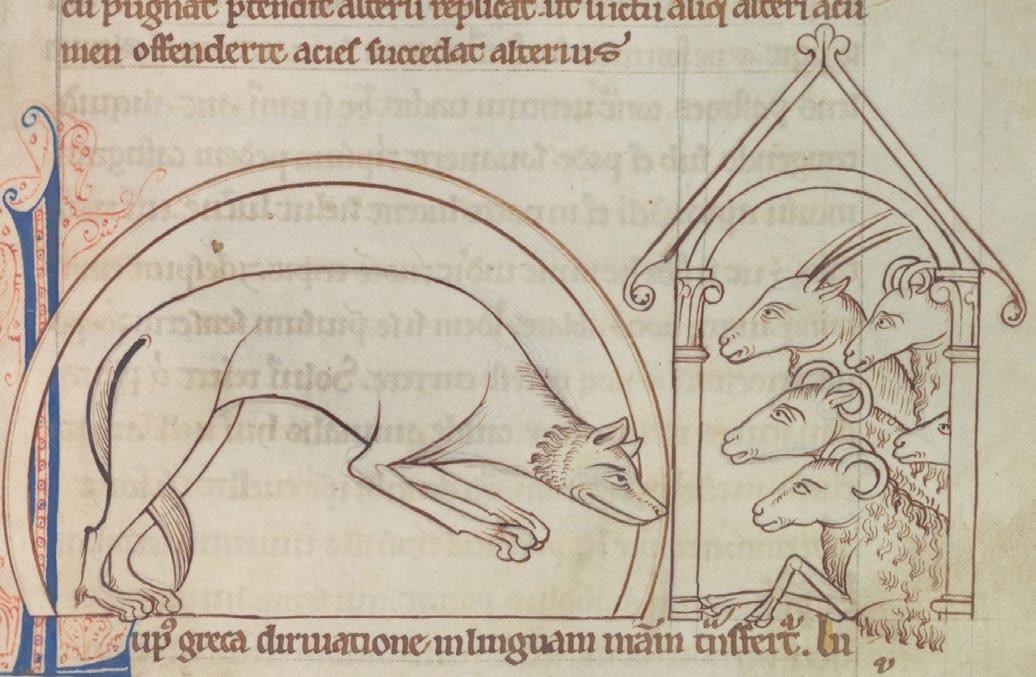
popular culture and making it new, in a subtle enough way that the reference is still recognisable. This sermon is doing the same: lifting a well-known, popular story and dropping it into a new context”.
So, who was this DJ sermoniser with a penchant for secular remixes and playful rhetoric? Fortunately, the final clue was hiding in plain sight. The Humiliamini sermon’s allusions to animals and humankind’s relationship with nature bore an undeniable resemblance to the sermons of theologian and writer Alexander Neckam (1157–1217); and by chance, many of his other sermons are also preserved in the very same collection at Peterhouse. So it’s more than possible that Neckam himself wrote the sermon.
The discovery, then, is two-fold. By correcting a small but impactful mistranslation, James and Seb have transformed our understanding of the Song of Wade and, therefore, Chaucer’s choice to evoke the tale’s romantic hero in his stories of courtly intrigue. Moreover, the pair’s study of the fragment in its sermon context adds to our understanding of how sacred and secular cultures – not to mention Latin and English –were blended in the later Middle Ages. And with the sermoniser potentially unmasked, the origins of the text may now be easier to identify. In the future, scholars can read the text as one part of a coherent body of medieval writing.
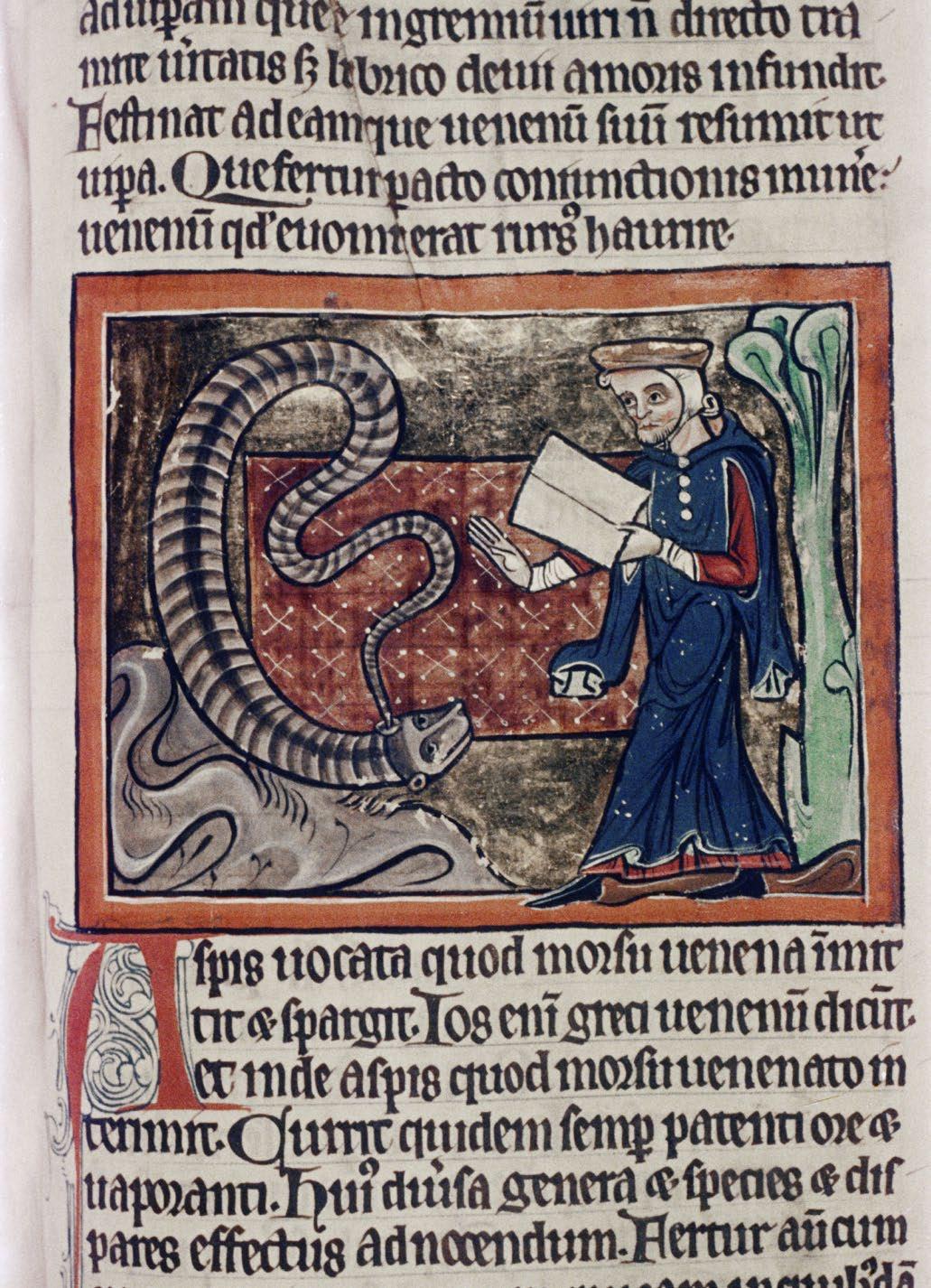
The impact of this project extends beyond the world of medieval scholarship. The Fellows’ distinct partnership treads new ground for research in the humanities, where cross-disciplinary collaboration and co-authored research papers are uncommon. For his part, James credits the College environment for creating the context that enables the kind of serendipitous conversations (at lunch and beyond) to occur: “There was something powerful about using the pronoun ‘we’ instead of ‘I’ when writing up the final paper. It drove home the collegiate spirit that made this work possible.”
Illustrations
Top left: Chaucer depicted as a pilgrim in the Ellesmere manuscript of the Canterbury Tales (c.1400-1410)
Bottom left: A rapacious wolf in the Cambridge University Library Bestiary, (early 13th Century).
Above: An asp being enchanted by a musical snake charmer in The Bodley bestiary (13th Century)

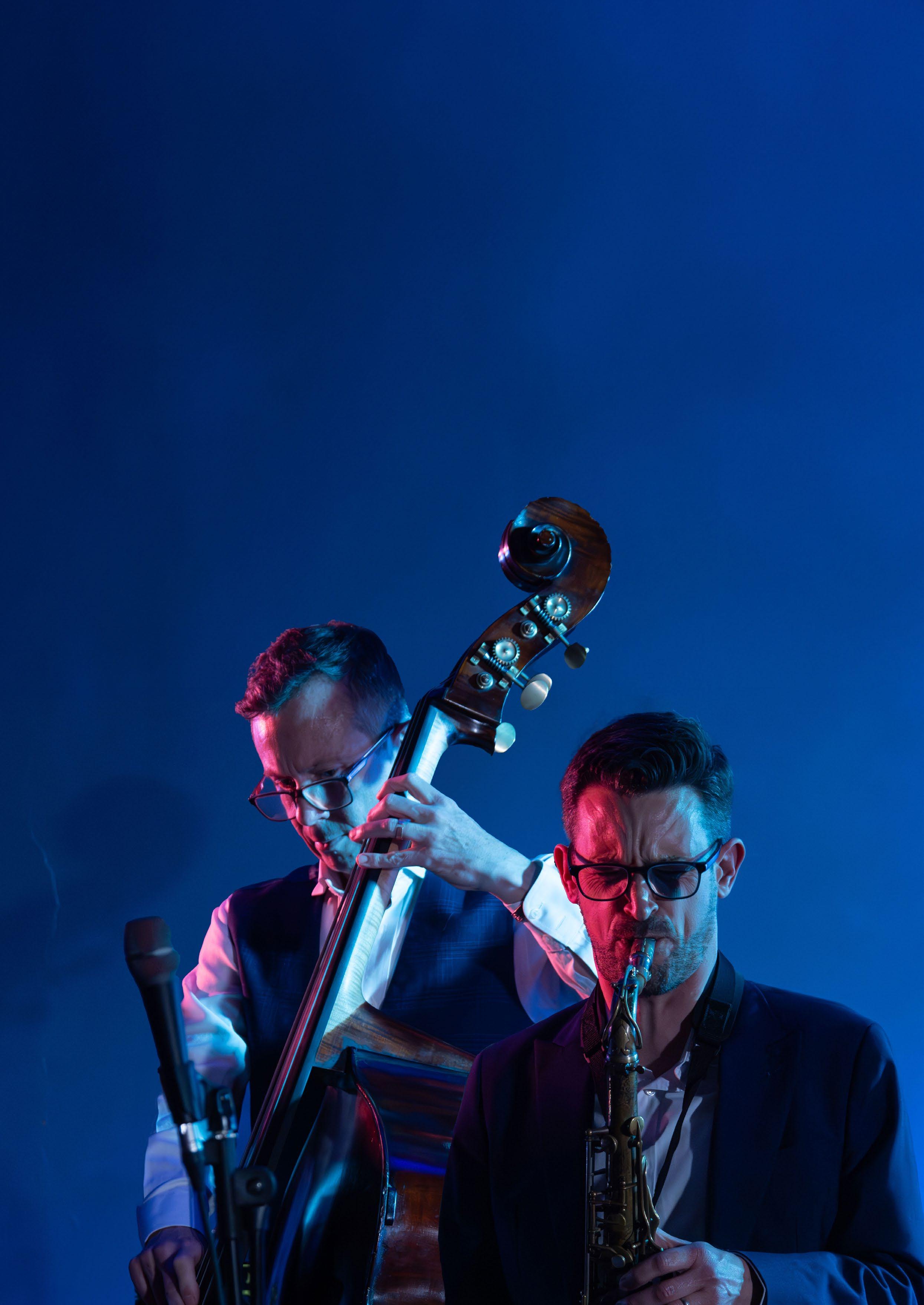

As darkness fell one cold November evening in 2024, Girton’s Old Hall was anything but gloomy. Bathed in blue and red light, the smooth piano, swinging saxophone, and pulsing bass of the worldfamous jazz club Ronnie Scott’s All Stars band intertwined with the spellbinding vocals of superstar songstress Natalie Williams. In an instant, our historic hall shapeshifted into Cambridge’s hottest new jazz venue – and ‘Girton Jazz’ was born.
Girton’s latest musical venture is a Cambridge first. Girton Jazz brings top artists from around the UK to Cambridge for a celebration of jazz excellence. Once a term, audiences travel from near and far to our 120-seat Old Hall for an evening gig that sells out weeks in advance. But Girton Jazz is more than just a concert series. Before every public performance, Girton’s talented student musicians have the chance to get down to brass tacks with our widely acclaimed visiting artists in immersive workshops focused on both performance and technique. So far, the workshops have been transformative; and the opening concert saw 12 students join some of the UK’s most admired jazz performers on stage for a rousing encore.
For the brains behind this ambitious programme, Girton Chaplain the Revd Dr Tim Boniface, this is what makes Girton Jazz particularly special:
“No other Cambridge College offers this kind of regular direct contact with jazz professionals in such an intimate setting. The workshops allow students to hone their skills and, we hope, provide inspiration for further development in jazz performance and study.”
As you might have guessed, Chaplain is just one of the titles Tim wears inside and out of the College. A prolific jazz saxophonist and pianist in his own right, Tim has worked extensively with pianist, artistic director of Ronnie Scott’s, and Girton musician-in-residence, James Pearson, to bring this idea to life – with roaring success.
In its first year, Girton Jazz has welcomed extraordinary artists including international superstar saxophonist Tony Kofi and the contemporary jazz duo Trish Clowes and Ross Stanley. The programme for the year ahead is off to a glittering start: with jazz and soul singer Polly Gibbons and trumpeter-composer Byron Wallen already confirmed.
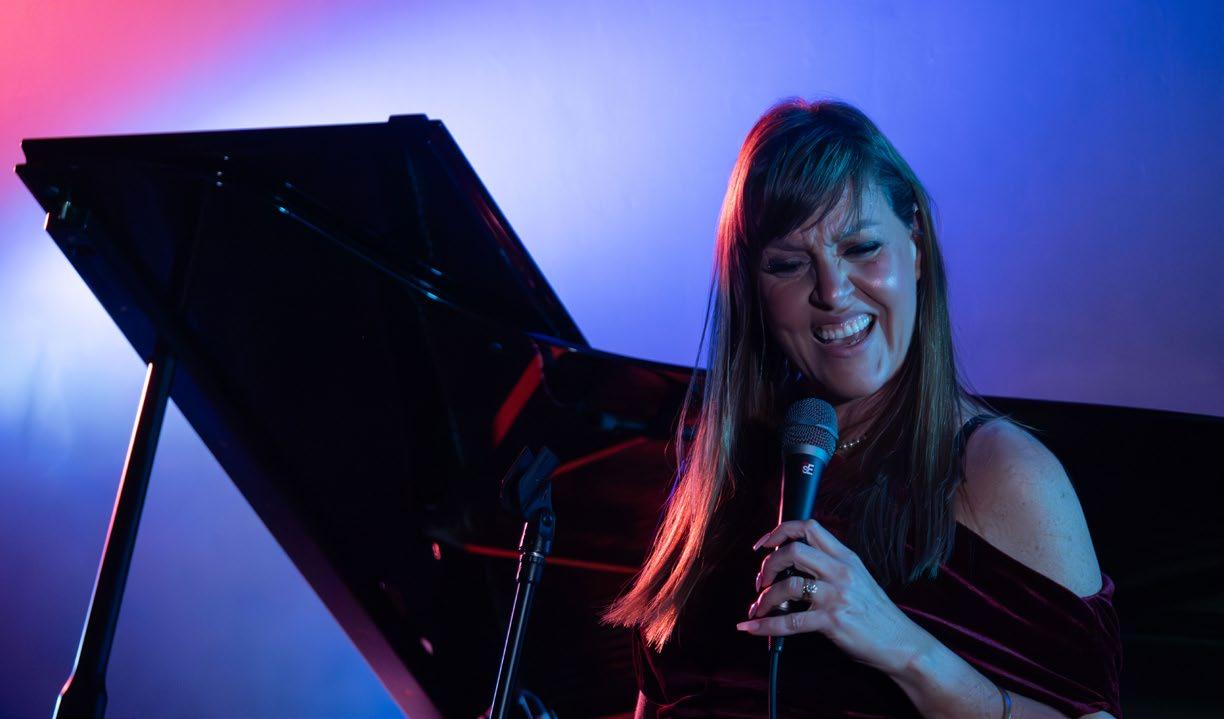
However, for Tim, his mission is far from complete: “We want to make Girton College the place to be for jazz. This initiative is bringing a phenomenal roster of jazz artists to Cambridge and putting us on the map as a haven for this important genre.”
Swinging from the role of Chaplain by day to jazz musician by night is no mean feat. So, how does one balance a day of sermons and pastoral support with evenings behind a piano or with a saxophone in hand? For Tim, the roles of pastor and performer have more in common than you might expect: “Jazz is about listening as much as playing,” he explains. “It’s a conversation. You have to tune into the other musicians, respond, and adapt. In many ways, that aligns with my chaplaincy role. Both worlds want to create the space for people to express themselves, find their voice, and explore meaning in the world.”
This seamless blending of the spiritual and musical worlds is captured beautifully on the latest critically acclaimed album by the Tim Boniface Quartet, Psalter: Themes for Peace. Recorded in Girton’s Stanley Library, which was transformed into a state-of-the-art recording studio, and released in July this year, the album features Tim on saxophone, James on piano, Malcolm Creese on double bass, and Jon Ormston on drums. The suite is based on six ancient texts from the Book of Psalms, with each part focusing on different meanings and aspects of peace. Tim’s breathtaking compositions take listeners on a journey through various emotional and spiritual themes related to peace – from joy and hope, to lament and protest.
Unsurprisingly, Tim could think of no better place than Girton to hold the album’s launch concert: “Jazz is all about innovation,” says the Chaplain. “It takes tradition and reinterprets it, always seeking something fresh. That’s exactly what Girton has always done.”
Beyond the music, the Girton Jazz programme is enriching community life, opening Girton’s doors to new audiences, and reminding Cambridge that creativity and brilliance thrive when tradition meets experimentation.
Tim’s efforts are already making waves far beyond the city limits. As Sebastian Scotney, Editor of UK Jazz News, puts it:
“In the UK, the idea to give jazz a special place, a welcome, even a home, requires a rare combination of circumstances and people who want to make it happen. Here’s hoping Girton Jazz becomes one of those ideas that catches on.”

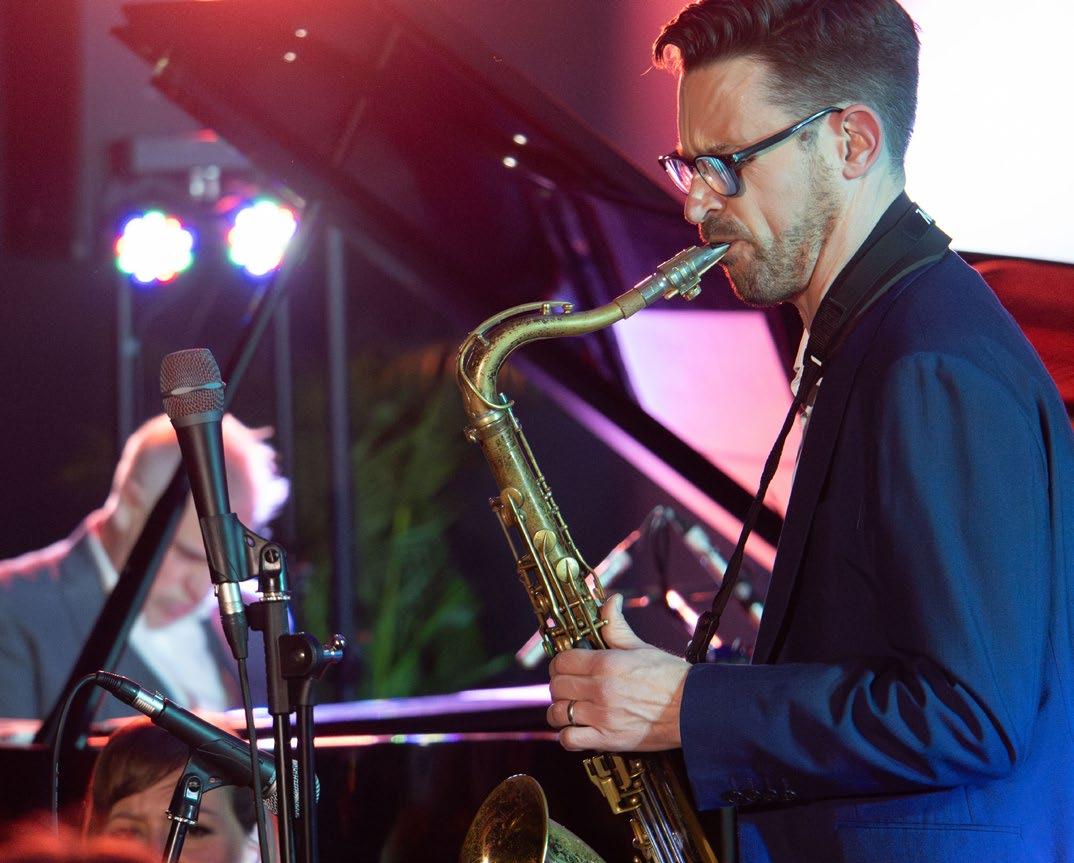

Jazz is one part of Girton’s rich musical life. Dr Martin Ennis, the College’s Director of Music, has shaped music education and music-making here for 35 years, and the results show in the high-calibre teaching and performance across the College.
Girton College Chapel Choir’s recordings have gained international acclaim and twice reached the UK classical charts top ten. The exceptional student musicians of the Girton College Music Society run an ambitious programme of opera, orchestral, and chamber concerts every year.
Our growing community of Honorary Fellows counts internationally acclaimed pianist Sir Stephen Hough and composer extraordinaire and Master of the King’s Music Errollyn Wallen amongst its musical members.
Our grounds and venues provide accessible facilities that power our music vision: nurturing talent, accelerating innovation, and connecting with audiences in Cambridge and beyond. Furthermore, a centrepiece of the planned new courts project is a 200-seat auditorium, fully equipped to host everything from classical concerts to contemporary performance on site. This large, fully serviced concert hall will take our music to a wider stage and help position Girton as a first-choice venue for artists visiting Cambridge. The benefits reach well beyond the College: with these spaces in use, Girton can offer a dynamic cultural hub that stands out in the historic city of Cambridge.

Last but not least, we are deeply proud of our collaboration with the University of Cambridge Centre for Music Performance: through joint performances and conducting masterclasses, we empower students to take bold creative leadership roles while at university and beyond.
Backed by in-house talent, a world-class roster of visiting acts, well-equipped facilities, and a flair for turning bright ideas into successful music initiatives, Girton has exciting plans for the next chapter of our story.


Akeelah Bertram, the 2024–2025 Cavendish Arts Science Fellow at Girton College, explores the different layers of our experience of reality.
What does a church have in common with a physics laboratory? Many of us might think of churches as spaces far removed from the rigorous science that defines the University of Cambridge’s Cavendish Laboratory. Yet for Akeelah Bertram, the academic and the spiritual worlds have more in common than we might expect.
Akeelah is a cross-disciplinary artist whose work is shaped by the spaces of her youth – particularly her experience growing up within a tight-knit Caribbean church community in the UK. Imagining the church as a space for “culture, community, and connectivity – both physical and metaphysical” is a recurring theme in her practice. Her immersive installations use light, sound, and responsive technology to bring people together and create shared emotional experiences.
When Akeelah came across the open call for the Cavendish Arts Science Fellowship, it immediately felt like a natural fit. At its core, the Fellowship seeks to bring the worlds of science and art into meaningful dialogue. Thanks to the vision and generous support of Girton alumna Dr Una Ryan, Fellows spend one year in Cambridge, living at the College and collaborating with world-class physicists at the Cavendish Laboratory.
Immediately, Akeelah could see the value of this distinct approach: “Most initiatives that aim to connect science and the arts involve bringing in an artist to create an artwork about science,” she reflects. “Whereas this opportunity felt much more like an invitation to reinvent, reflect, and dissect dominant ideologies and frameworks.”
For Akeelah, navigating a place like Cambridge as a newcomer held its own set of challenges. The University and its Colleges are often seen as having their special traditions, unspoken conventions, and subtle codes of conduct. Yet for Akeelah, it was precisely these quirks
that resonated most deeply with her work: “Being plunged into this new environment made me reflect on the patterns, structures and rituals that humans build time and again across so many different settings,” she explains. “We form ideals, then construct physical worlds and actions around them. In that sense, I felt from the start that a Cambridge college is a church of knowledge and the Cavendish Laboratory, a church of science.”
This first impression evolved during her time at the Cavendish Laboratory, leaving Akeelah with a striking analogy: that of scientific testing as a kind of ritual, not unlike those found in religion. Like faith, science has its own guiding principles – the scientific method. But Akeelah was left pondering, “is this enough?”. Posing the question to the Laboratory’s experimental physicists left her with a surprisingly varied range of answers. Some described science as the central foundation of their worldview; others felt there were aspects of reality and existence that science has yet to grasp fully.
Overall, Akeelah was moved by her colleagues’ willingness to discuss their own philosophical and spiritual journeys as scientists and researchers. This open, probing and intellectually stimulating environment has inspired her to further question and explore the different layers of our experience of reality: the personal, emotional, spiritual, and physical.
The sense of community and care Akeelah has encountered throughout her Fellowship has deepened her understanding of how knowledge relates to reality. At Girton, Akeelah saw knowledge being pursued not as an end in itself, but as a shared curiosity that drives discovery and connection across disciplines. That same spirit extends to the wider Girton community, which Akeelah experienced first-hand when she presented her work during the 2025 Girton Alumni Weekend in September. The piece, which she is developing further, and which is to be shown in London later this year, stands as a testament to the transformative power of dialogue – between art and science, faith and evidence, individual and community.

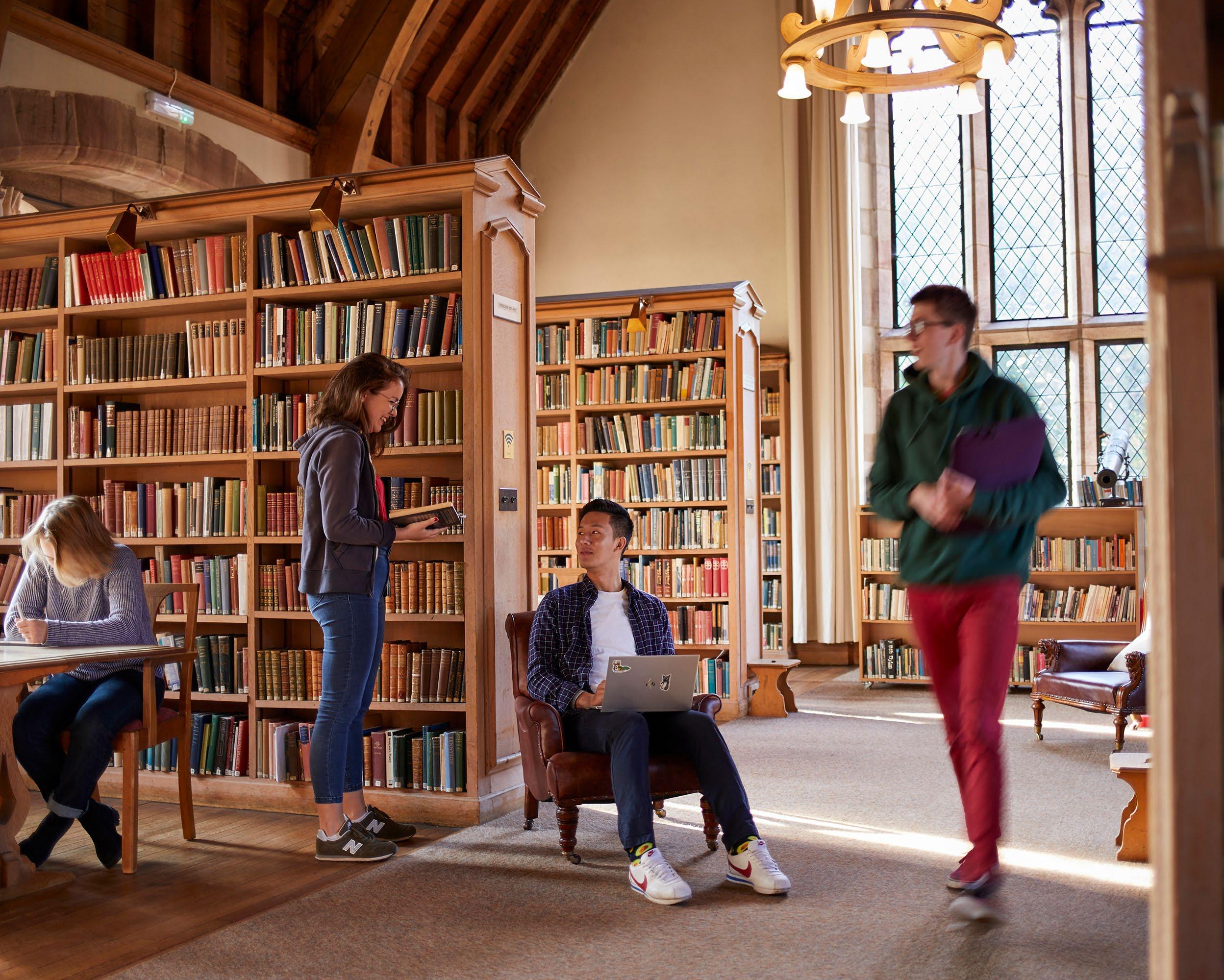
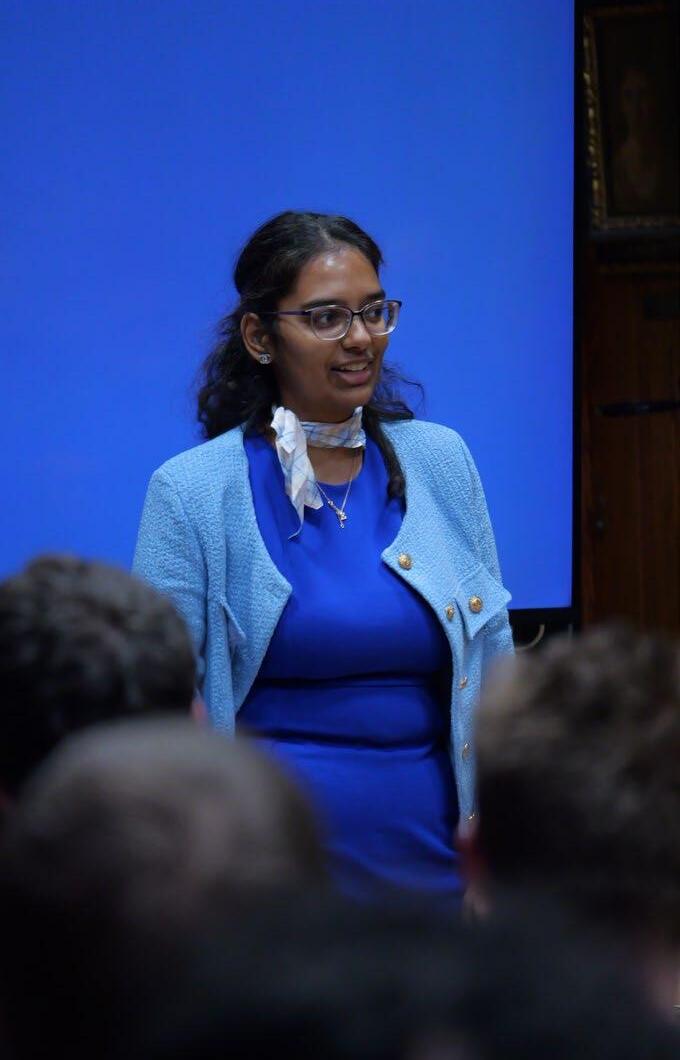
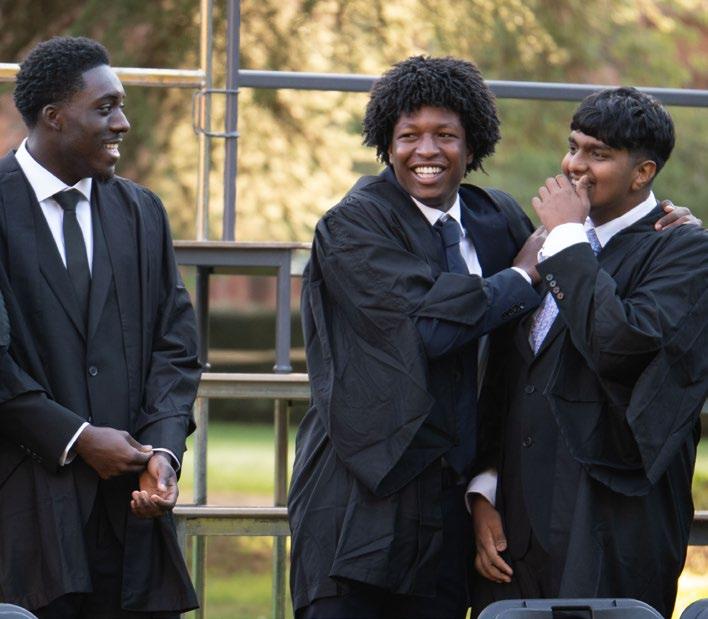
Since 1869, Girton has stood for bold principles: widening opportunity, raising standards, and reshaping what is possible.
We hold a clear conviction: talent is everywhere, and background must not decide who thrives here. Today our community brings together more than 800 students from across the globe. One in three undergraduates receives a bursary, and we are expanding our postgraduate scholarships in line with our commitment to excellence, wherever it may come from.
Furthermore, two years in, the Girton Skills Programme is helping our
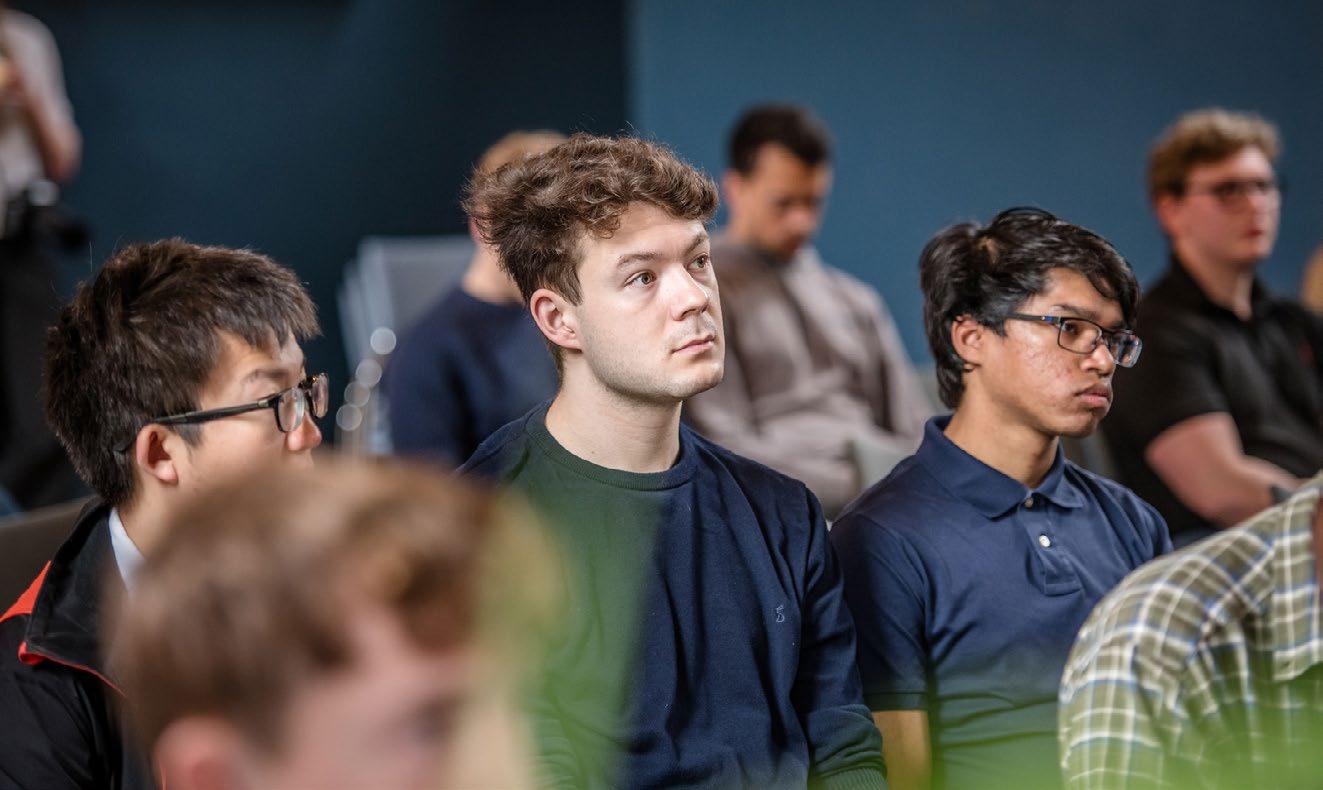

students to succeed with tailored academic, pastoral, and personal development sessions that remove barriers and lift performance.
This momentum is visible across our activities. Our trademark “Girton Jazz”, our 95 University-level athletes, and our outreach to more than 100 schools all show that we are a College that recognises potential and backs it.
So much of this is possible because of you. Unrestricted gifts give us the flexibility to act where it matters – easing financial pressure and enriching the student experience with opportunities that build confidence and capability.
In the past year alone, your support has helped us:
• Create more academic research internships;
• Connect more students with career mentors;
• Launch and grow our student volunteering scheme.
To learn more – and help give our students the edge – visit: www.girton.cam.ac.uk/ giving/annual-fund or contact development@girton.cam.ac.uk or +44 (0) 1223 338 901.
Test yourself with these past exam questions.
Natural Sciences, Part II (General), Section I, Essay Paper, Saturday 18 May 1985
2. Intelligent computers – a realisable prospect?
English, Part II, Paper 2: Tragedy, Thursday 23 May 1991
5. ‘In Greek tragedy, the chorus is the voice of human community. In Racine’s tragedies – and in all great modern tragedies – the authentic human community has long disappeared (Goldmann). Discuss.
Archaeology and Anthropology, Part IIA, Paper A1, Archaeological Thought, Monday 6 June 2011
7. ‘The body is the starting place for all understanding.’ Discuss how this theme has been integrated into current archaeological approaches.

12. Does economic history have to be rewritten in the light of ecological criticisms of economic growth?
Medical and Veterinary Sciences, Paper 1B, Second Veterinary MB Examinations, Friday 17th March 2006
Select ONE best answer from the five options.
6) Which is the best way of moving a group of pigs weighing 45kg each?
a) Using a herding dog
b) Using a stick
c) Using an electric prod
d) Using herding boards
e) Carrying and shaking a bag containing food
Music, Part IA, Paper 1, Music and Musicology Today, Friday 31 May 2013
3. Discuss whether science can – or should – be expected to provide a ‘foundational explanation for why music is the way it is’ (Georgina Born).
9. The following events occur at the Kwikfit Gym:
i). Robert, who is envious of Sean because Sean is much fitter than he is, intentionally bumps into Sean whilst Sean is weightlifting. Robert hopes that Sean will fall over and break a leg. Sean loses his balance and drops the weights on Tom’s head whilst Tom is doing press-ups. Tom is badly injured, but neither Robert, Sean or Vic, the manager of the Gym, do anything to help him. Tom dies.
Consider what offences, if any, have been committed.
Wednesday 14 January 1998
1. ‘A TCP implementation attempts to acquire knowledge of both the state of its peer and the properties of the channel between it and its peer.’
(c). A large proportion of Internet traffic is Web based. The protocol used to transfer most Web information is the Hyper Text Transfer Protocol (HTTP). HTTP uses a new TCP connection for every piece of hyper text transmitted, and a page with many images may be transferred over multiple simultaneous TCP connections. Is this sensible?
Medicine, Final Examination for Medical and Surgical Degrees, Part I, Pathology, Wednesday 13 June 1988
8. What are zoonoses? Write short account of one of them.
Geography, Part IA, Paper 1, Human Geography: People, Place and the Politics of Difference, Wednesday 29 May 2024
12. ‘Geography is a hopeful discipline’. Discuss.
Mathematics, Part IA, Paper 2, Friday 31 May 2019
4F. Probability
Let X and Y be independent exponential random variables each with parameter 1. Write down the joint density function of X and Y.
Let U = 6X + 8Y and V = 2X + 3Y. Find the joint density function of U and V.
Are U and Y independent? Briefly justify your answer.

Gardening is proven to lift both body and mind. Regular gardeners enjoy better wellbeing and lower stress. Pots are a particularly inviting way to begin – adaptable to any space, forgiving for novices, and easy to refresh. If a plant falters, you can simply replace it, keeping the whole display healthy.
Emma Peirce is the creative force behind this year’s displays, and she boils success down to three essentials: maintenance, plant choice, and design.
“Maintenance is key to a great display. Your plants, pot size, and display location will affect how much time is required to look after it.”
Emma’s tip? “A year-round display could include evergreen shrubs either on their own or underplanted with bulbs, annuals, or herbaceous


If you’ve wandered past Girton’s social media lately, you will have seen the riot of colour our Gardens Team has conjured this year.
The star attraction? The bold pot displays flanking the College entrance. They may look impossibly grand, but with a little guidance from Girton’s green-fingered experts, you can bring a touch of that magic to your own garden.
Emma recommends considering a colour palette for your chosen flowers, as well as their leaves. Heading into spring, Emma selected a cool toned palette of hyacinths, tulip, and narcissus bulbs for Girton’s pot displays:
“For added interest, we included large pots containing evergreens, such as camellias, which were underplanted with senecio cineraria, pansies, and violas.”
By summer, the mood shifted to bold reds and bright oranges – with vibrant green pelargoniums and dahlias blazing against warm-toned santolina.

Most indoor plants are chosen for their attractive foliage, placing a stronger emphasis on shapes and textures, rather than flowers. Think glossy monstera leaves, delicately veined calatheas, or sculptural succulents.

For added drama, experiment with trailing plants alongside tall plants, and techniques such as underplanting to introduce contrast to a display. As Emma puts it:
“Once you have the core of your display, you can have fun updating it to keep it fresh!”
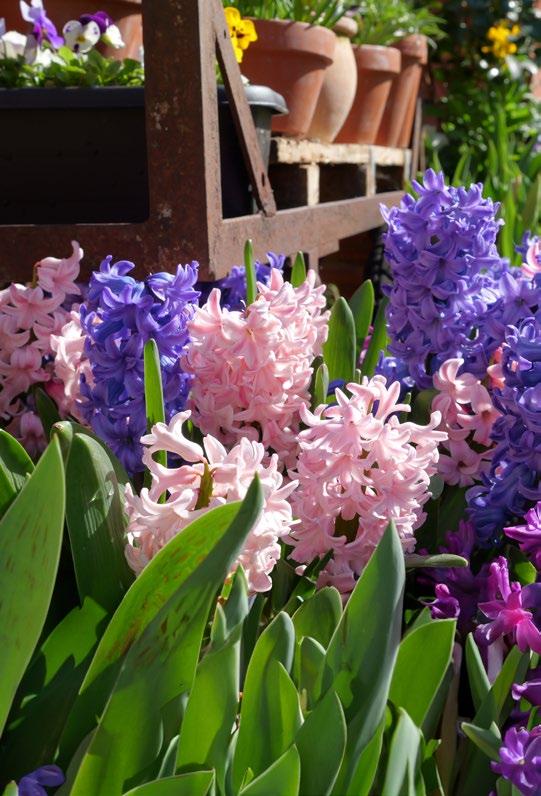
At Girton, recycled materials gave the displays their lift: a reclaimed wooden box, even a repurposed cart. Containers themselves can be part of the fun – Emma recommends planting into anything from weathered buckets to an old bread bin.
Most of all, Emma encourages gardeners to keep it playful: “I often build a display, step away, and return with fresh eyes before finishing.” It’s never static – a playful conversation between plants and the personality of the gardener, growing together over time.

Why not try your own Girton-inspired pot display? Share your creations with us on Instagram @girtoncollege.
Where did your first date take place?/ How did you meet?
“We met during our very first week at college. Andy offered to accompany me through the dark orchard on the way to a Bible study at the Grange. He lived in the corridor above me on Orchard Wing, and we spent a lot of time hanging out together. We dated in our first year, then split up but remained extremely good friends, finally marrying almost seven years after we first met!”
What’s your favourite shared memory from your time at Girton?
“Friendships are our abiding memory – from late-night discussions, shared meals, and laughter, to long charity bike rides, and even a 21-foot-long 21st birthday cake served (naturally) from a ladder! Other memories are cheering Cathy on from the touchline as she played Blues football, wallpapering the outside of Grange Lodge purely for the fun of it, and making good use of the Engineering Department’s welding kit to transform broken bicycle bits into tandems – one of which carried us off from our wedding.”
What song reminds you of your time together at Girton?
“It’s impossible to pick a single song, but The Blues Brothers was a sonic backdrop for our time at Girton, especially to many lively fridge parties at the Grange.”
What’s the most unexpected thing you’ve learned about each other since leaving Girton?
“The biggest surprise after leaving college was discovering that we were more than just good friends after all. Once the penny dropped, we were engaged within six weeks! Thirty-two happy years and three children (one a Girtonian) later, we are so grateful that Girton brought us together.”


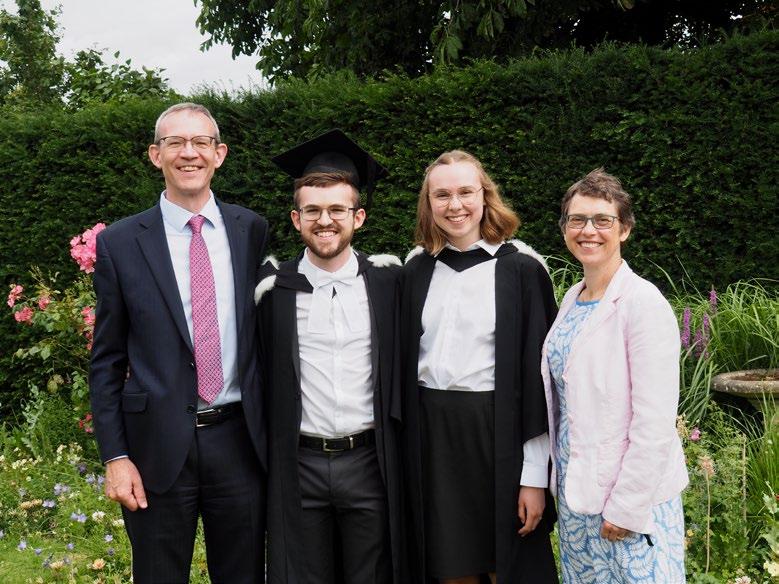
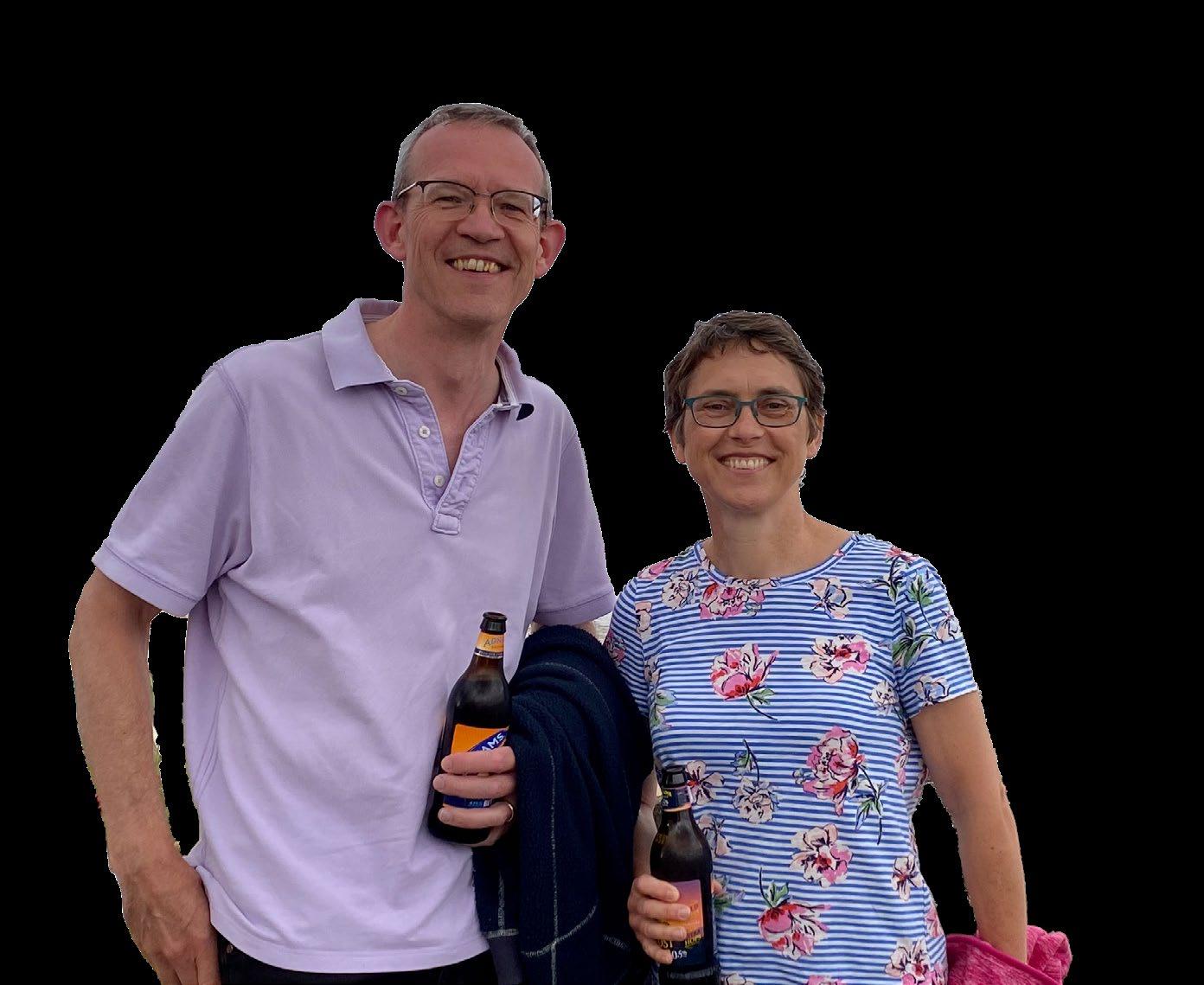




Where did your first date take place?/ How did you meet?
“We met at a welcome event for graduates in the Girton Library, though at the time we were living at Wolfson Court next to the Department of Mathematics. Unusually that year, some of us were housed in the undergraduate section of the dorm, and our rooms ended up being just six doors apart.”
“Our first date took place at the River Bar.” Annie had been under the impression it was going to be a group outing on a Friday night and was furiously finishing a paper due that evening. When she suggested that Yiannis go on ahead, he replied that he would wait for her. Annie submitted the paper, and it was only once they found themselves walking to the bar together, that she realised it was, in fact, a date.
What’s your favourite shared memory from your time at Girton?
“The ritual of cycling up the hill to the main college site in full formalwear and gowns every Thursday evening for formal hall – an especially amusing sight after a glass of wine or two. We also had the chance to attend two spectacular Girton Spring Balls during those years. Avalon and Pandemonium were both unforgettable.”
What song reminds you of your time together at Girton?
“No song comes closer to reminding us of Girton than the melody of Rod Stewart’s Sailing, with the familiar alternate lyrics ‘We are Girton! We are Girton! No one likes us, but we don’t care!’.“

What’s the most unexpected thing you’ve learned about each other since leaving Girton?
“We’ve discovered many new sides of each other since our student days.” Annie has developed a love for arts and crafts, especially when creating things with their children, while Yiannis quietly began producing olive oil with his brother to keep their grandparents’ grove in Greece alive. “A small side project that has since become a meaningful part of our lives.”
2025 has been an outstanding year for poetry at Girton. The Jane Martin Poetry Prize – our national competition, established in memory of Jane Elizabeth Martin (1978 Classics) with the generous support of her family – marked its 15th year, a milestone in our support for poetic excellence across the UK.
Meanwhile, the Girton Poetry Society celebrated its 20th anniversary, having spent two decades nurturing emerging writers who have gone on to win awards and publish widely.

by Adam Crothers
Bess Bluebell, Sprout an me, see, we’s the kinda sprites as gets bored sittin under daisies waitin fer fair mortal lass to find herself a-wishin once some buck as says he’s honest proves he ain’t. Our kind ain’t lazy. We seeks adventure, nights when Saturn’s brow furrows through the greenwild sky; there’s fuzzy critters wants joyridin. Llama? Cow? Naw: ones the mortals wasn’t usin anyhow.
We cross the border, me an Sprout an Bess, in plenty ways (transgressive thought or beanstalk, eyea needle, sneeze) an nonetheless winds up all together where we meansta: canyon, ocean wave, lone peak in streamsa cold. Tonight it’s balmy forest. Cries as small as pity leaps tween trees; we sees a close-knit herd. They’s tinier than their eyes is. Minorly us three adjusts our present sizes.
I gots my cobweb lasso, Sprout her cuffa thistledown, and Bess a touch so calmin she’d make a banshee disinclinedta suffer; though at first they squeals and slaps like salmon the squirts is quickta sense there ain’t no harm in fae attentions if yer heart is true. Three hitsa snuff from Mistress Mayspring’s common stash (is how we treats it) an, with two more cuties followin, our mounted crew springs through that space between what may an what may not, an starts our boisterous airborne stampede. Five mammals and three fair folk held like thought above the sleepless braina canopy’d be nothin like what mortal eye’s perceived: our understandin is they earns no fee from lookin up or seein close. We speeds an spirals through opaque infinity, sky’s circus tenta highs an deepest mystery.
It’s blissta race with corals over desert an pound the bedsa creeks with butterflies, and so tonight the vertigo an hazard are lifted from an animal at shies from all as ain’t of earth or bark. Fer highs inhere, to use a bitta fancy talkin, in all at’s lowly-seemin, an all dies at’s livin, cept fer them residin back in our misty wood, them born to it an them at’s taken;
we’s givin em a spella extraversion afore the bright unboundedness within em is trampled inna nothin, per the curse on the barren vale, the flimsy bitta fillim we’ve heard some call a worldta kill an steal fer. Sprout, Bess, me, we takes our kicks from how these darlins, unspurred, finds it thrillin ta soar beyond fate’s roada trampled sticks an burnin, hear the tollin bell an say, naw, nix, till rooster-bugles hails the Queena Dawn. They’re ridden wet. We steers em to the ground. I loose mine to the paira hangers-on an shoos em off, full knowin Sprout’s full bound to take the last two home fer keepin sound. She always figures no-one will if fae don’t; heck, that strikes me as a mite profound as off to dew-veiled beds we struts our way an sings a rustlin ballad. Yippie yi oh ay!

by Esmé Beaumont
i think like a sheep struck by lightning. bemused lump of sopping wool, addled by charge ‘til it starts to spout quotations. some semblance of wistful for open fields, freedom from lost-and-found mannerisms penning it in – electric sheep notices fences he’d not taken heed of before. ‘cause water conducts, see, turns river to soup –mutton flavoured with pondweed and cooked by the sky. he sings now, you know, daisy daisy or some such, though he knows not how these new words reach your ears from the space between his. so he comes out the river all soggy and staticky and – gods! – self-aware, the poor thing –and he’s full of regrets and he yearns and he pines and he sees greener grass on the opposite side of the fence that refrains from becoming a gate however nicely he asks. electric sheep stopped understanding the bleats of his analogue peers, so he wanders alone round the edge of the field, and stares up at the sky and he asks: if a sheepgod exists up there, or heavenly farmer, did they send that bolt? and, if they can hear me, could they please take it back?

by Laura Forwood and Aashi Chougule
I call for life, for you, ʻōʻō, To, in feathered darkness, lay duet, And quaver until the quivered solo.
I throw back my head to when we set This sweet song as our matching tones, With nectar leftover dropping gems on our nest.
At night– bites stolen– our cheeseboard– your home. Scrambled atop a chair, to escape the yolk-spindled tails. Dirt dwellers, debris, dark cavities in the corner.
Malformed russet brown, twin teeth like a pyre. A heart waiting in the grass. Rehearsed in pursuit, set To that same voiceless choir.
A breath leaves the song, and gasps through to get To that pleading warble. An absence passes through hands, to claws, to talons. The song unmet
I call for you, for life, ʻōʻō, Tender moulting mornings, no birdsong below,
(Context: the Kauaʻi ʻōʻō , Hawaiian honeyeaters, were the last species of an entire bird family of species which went extinct, partly due to the invasion of predating rats to which they were defenceless. The last male Kauaʻi ʻōʻō continued singing the mating call for years after the last female was likely killed.)

by Annabelle Fuller
Chains break the ground
Like the skin of the scum
On a stock. Iterative, moth at a Window. Bee drawing nose
In its petal’s folds, hot as a Sleepless pillow. Each disc is a Flexing elbow. Wrenched neck
1st
In the cab to recce what follows.
Nearly the end now. The field cut Line upon line like the coveting queue
Of a farrow. Thistles glitter and Scatter. I’d like to fall into a furrow, Be full covered over.
Come now the three-point hitch; Come now the harrow.

by Cia Mangat
on the way up the new mega drop tower at Thorpe park your ma is kicking her feet the trees below shrink & shrink & about halfway up the wind is strong enough to rustle the thick kodak dark of your dad’s hair & they are both terrified ma is holding onto her seat as if it were a boyfriend your parents aren’t sure if they still count as newlywedsat 110 feet your dad asks what’s the point of all this shouldn’t we have a baby & before he reaches the question mark a teenager chewing gum 115 feet below presses the big red button during the fall your ma squeezes her eyes shut & screams while hundreds of tiny socks bottles your favourite gold hoops the diameter of her fingers sing in the air around her ears




The Mistress and members of the Development and Alumni team have been catching up with Girtonians worldwide – visiting the US, Japan, Singapore, Hong Kong, Oslo, Stockholm, Bristol and Cardiff – to hear your news and share what’s next for the College.
Enjoy a few moments from these trips, update your details below to hear about future events near you.


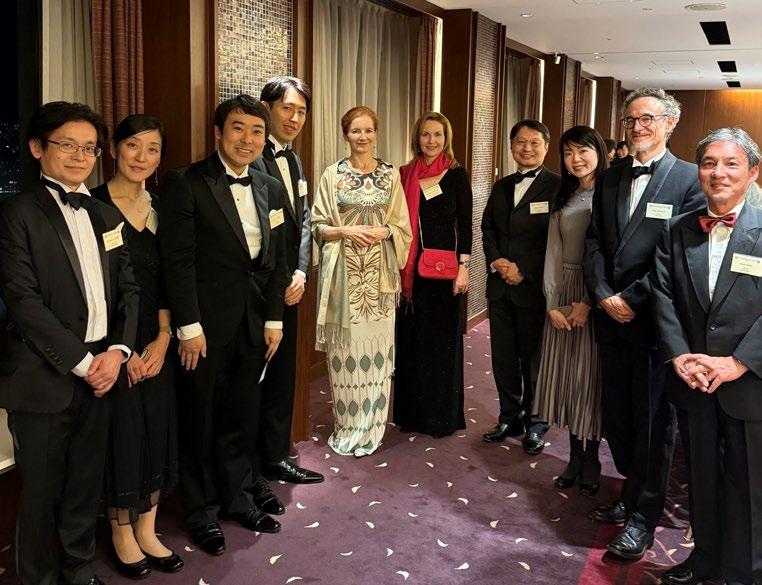





From garden parties to panel discussions, from reunions to immersive concerts, the past year has been filled with opportunities for Girtonians to reconnect and celebrate. This photo section aims to capture the energy, warmth, and diversity of events held for alumni and their guests. Whether you joined us in person or in spirit, we hope these snapshots bring back fond memories and inspire future connections. Browse through and see if you spot a familiar face or two!



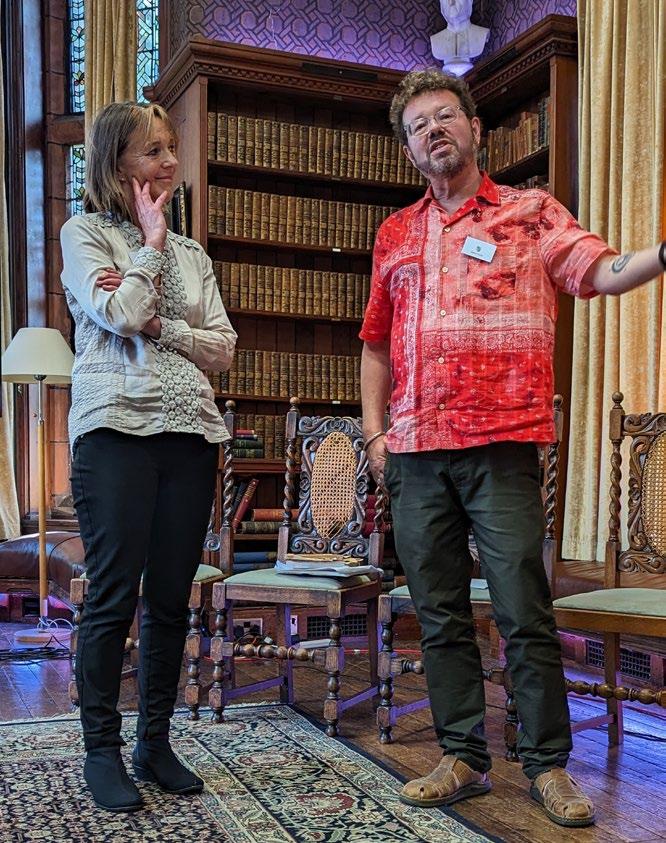

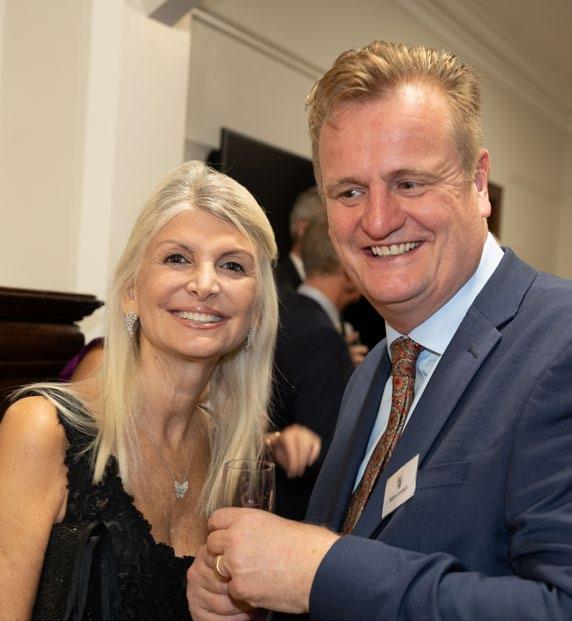


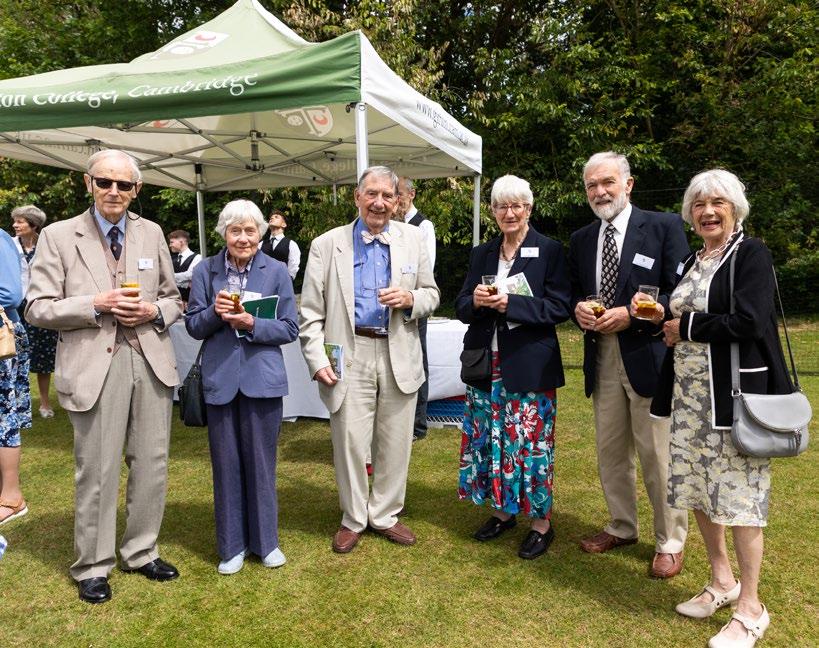




Football, March 2025 The annual Alumni vs Students fixture saw players spanning over 40 years of GCFC return to the College. The final score was 5 - 1 to the current team - but there’s always next year!
Law and Finance Reception, March 2025
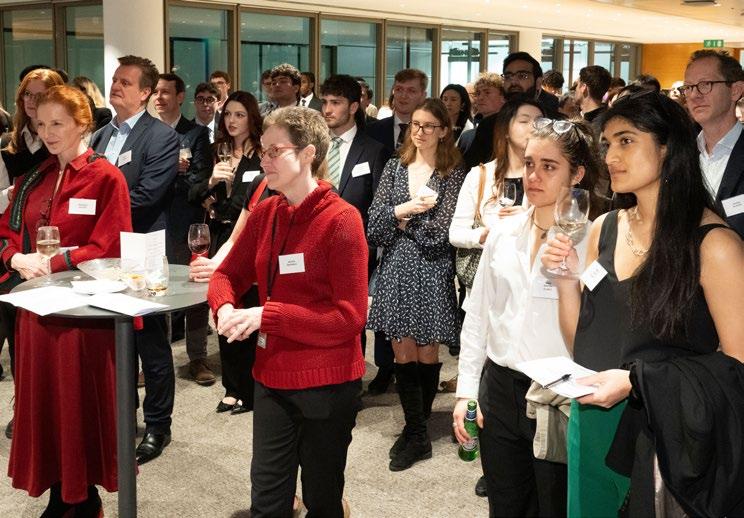


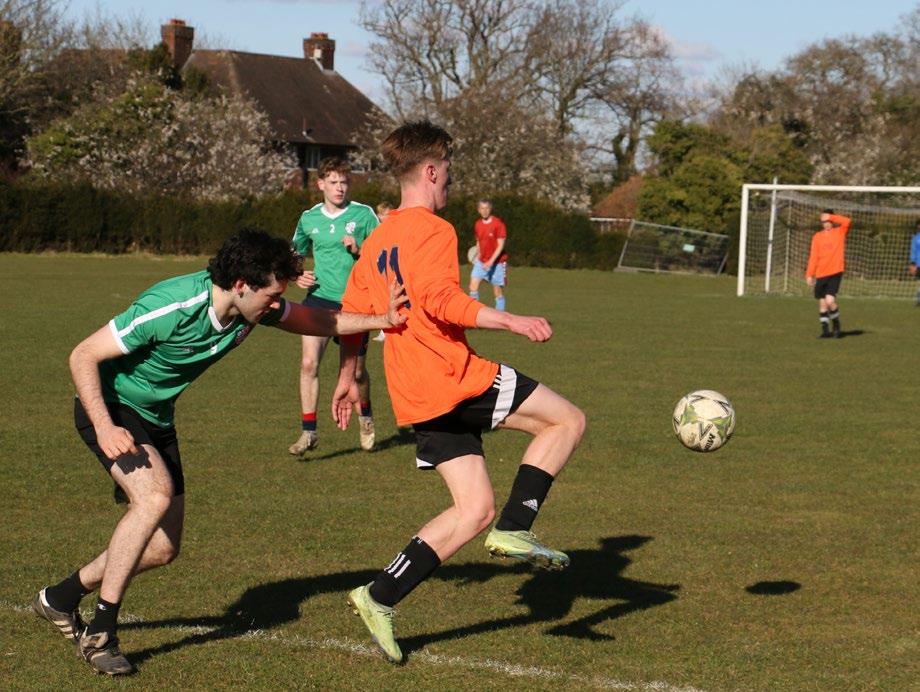

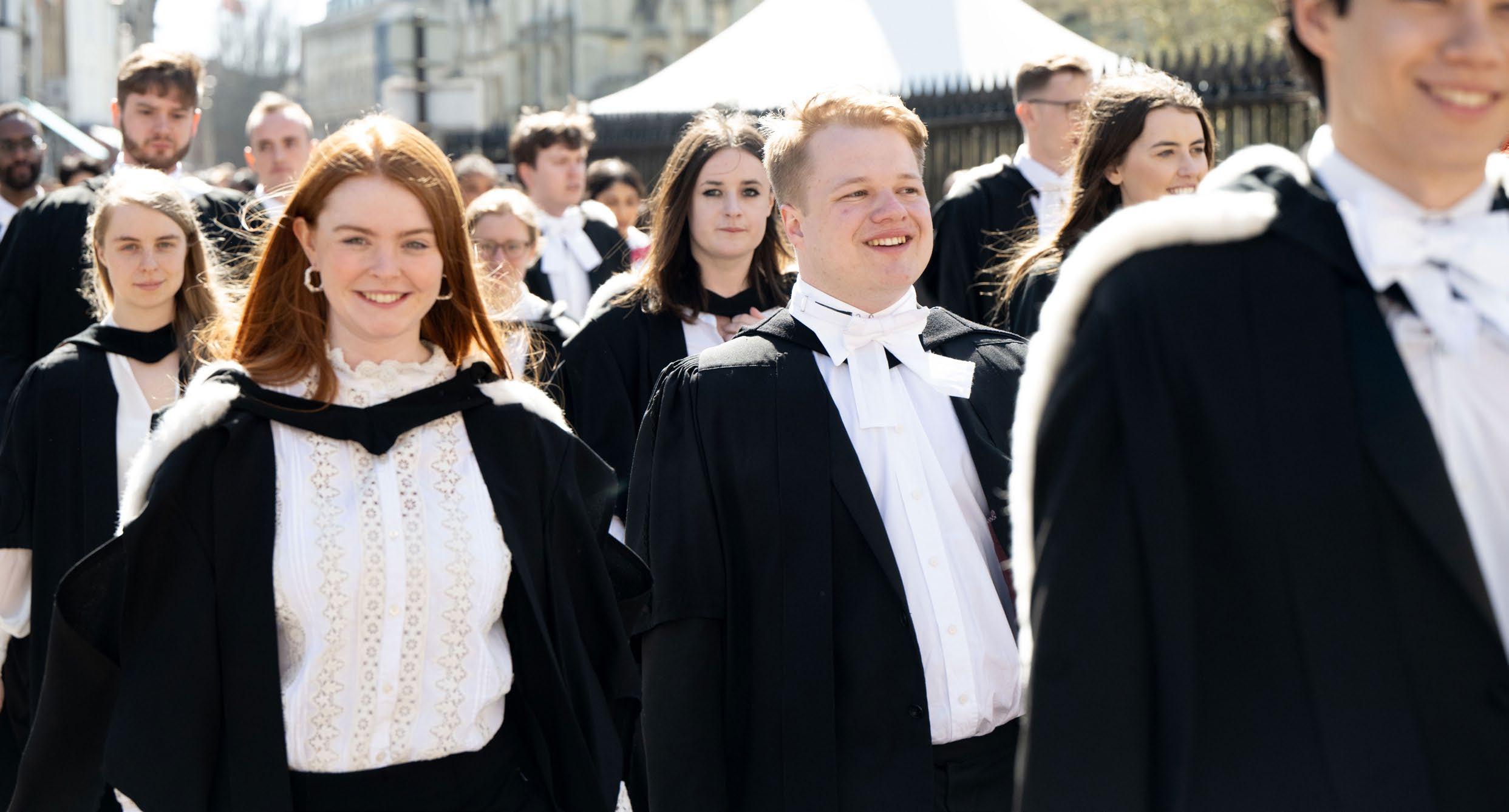
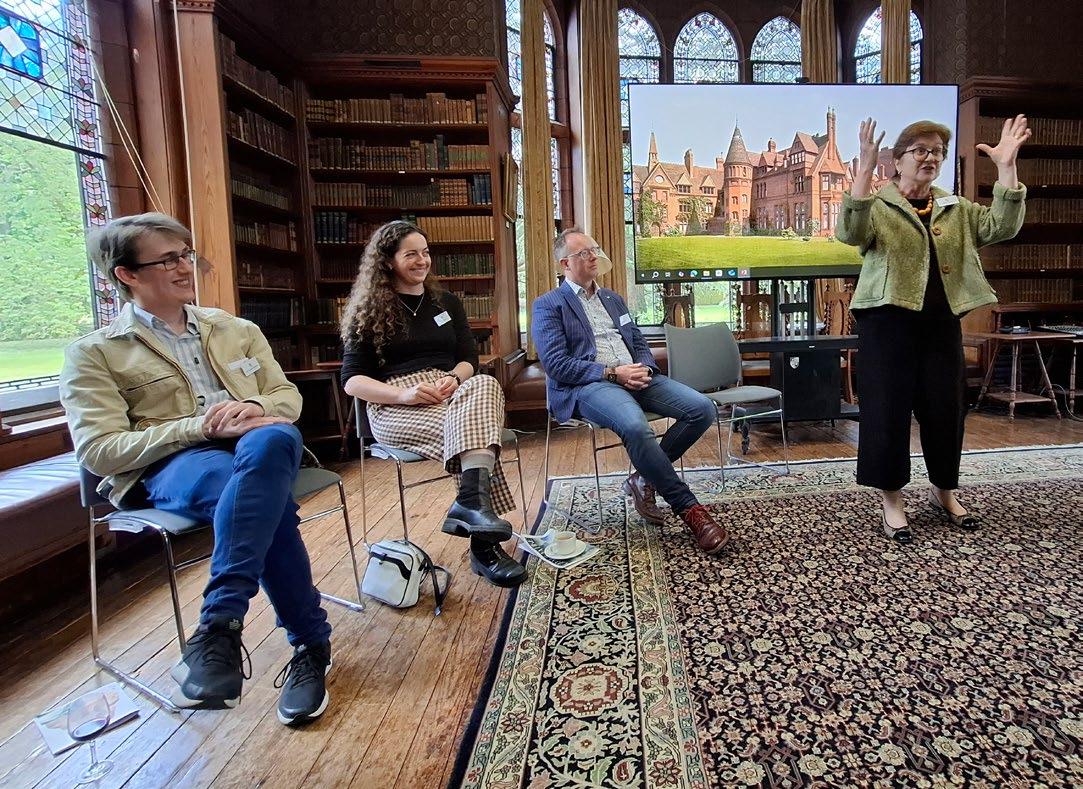
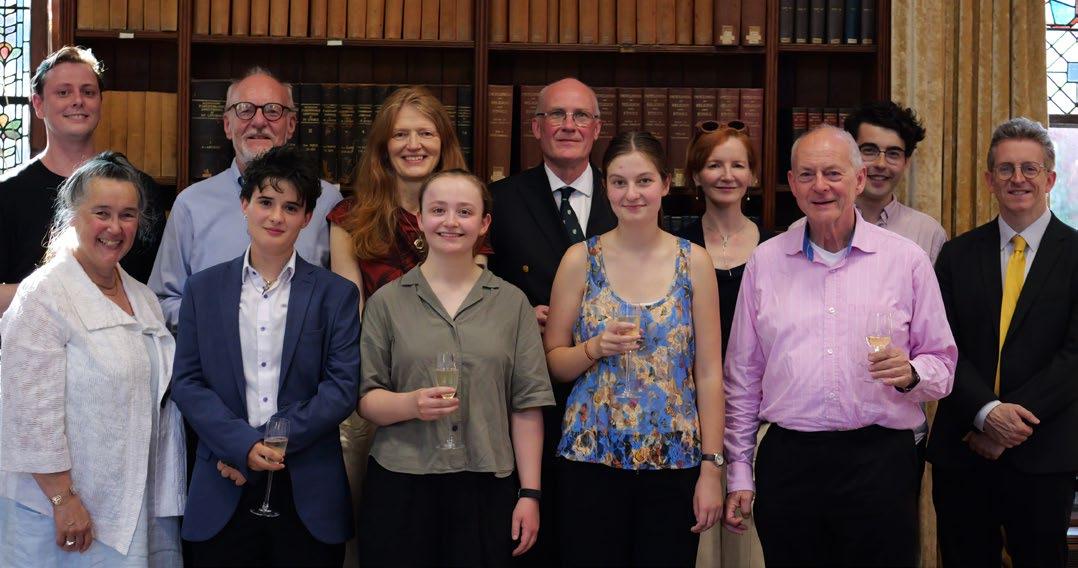
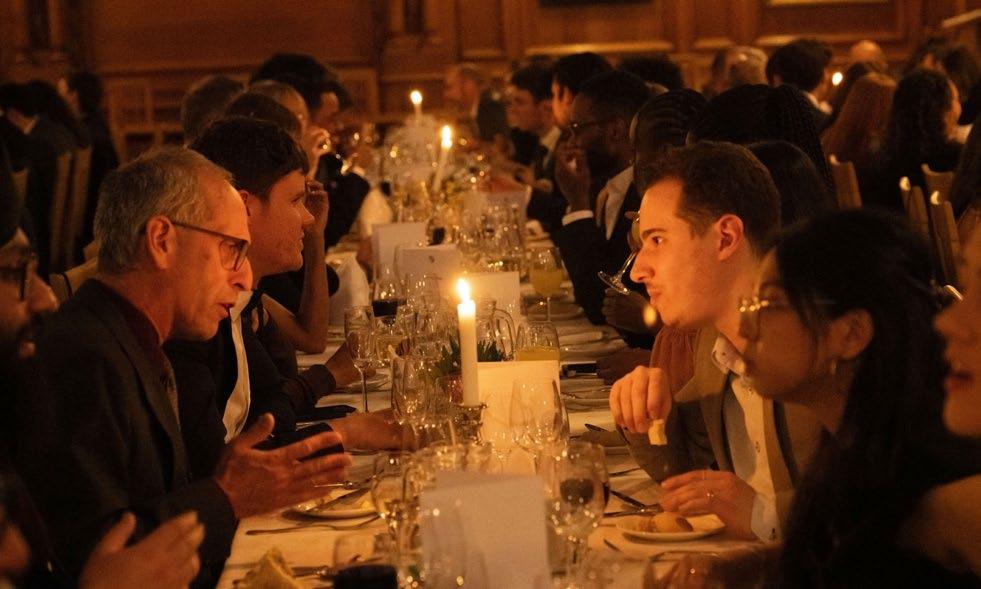
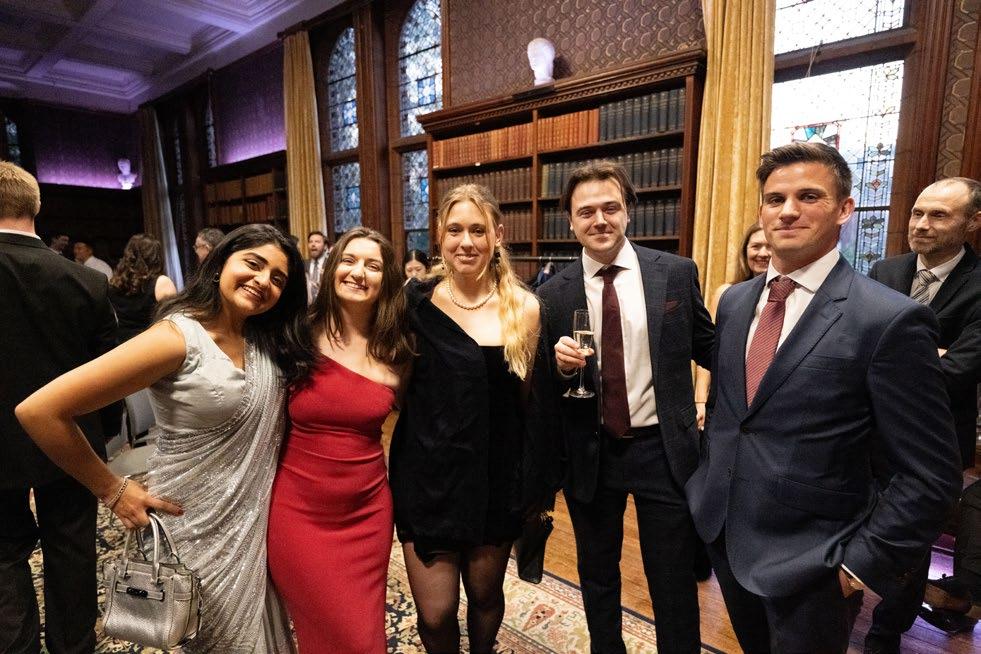



Graduation, July 2025


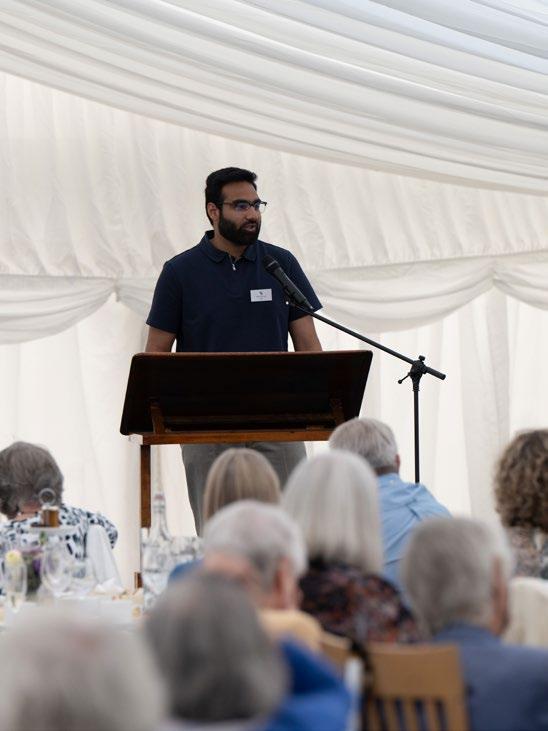


Please find below a selection of forthcoming events. Details of all events are available by emailing alumni@girton.cam.ac.uk or by visiting the Upcoming Events section of the College’s website: www.girton.cam.ac.uk/ upcoming-events
Saturday 15 November 2025
Veronica Forrest-Thomson Poetry Event, Girton College
December 2025 Girton visit to the Far East
Friday 06 February 2026
Friday 20 February 2026
Thursday 26 February 2026
Wednesday 11 March 2026
Saturday 14 March 2026
Friday 10 April 2026
Saturday 11 April 2026
April 2026
Sunday 05 July 2026
Friday 18 September 2026
Saturday 19 September 2026
Saturday 26 and Sunday 27
September 2026
Girton Jazz presents Byron Wallen, Girton College
Founders’ Memorial Lecture, Girton College
Alumni Formal Hall, Girton College
Law and Finance Networking Reception, London
Alumni Sports Matches and Dinner, Girton College
MA Dinner, Girton College
MA Graduation, Cambridge
Girton visit to the USA
Garden Party, Girton College
Class of 2016 Reunion Dinner, Girton College
Classes of 2009, 2010, 2011 Reunion Dinner, Girton College
Roll of Alumni Weekend and Dinner including Classes of 1986, 1976, 1966 Reunions, Girton College


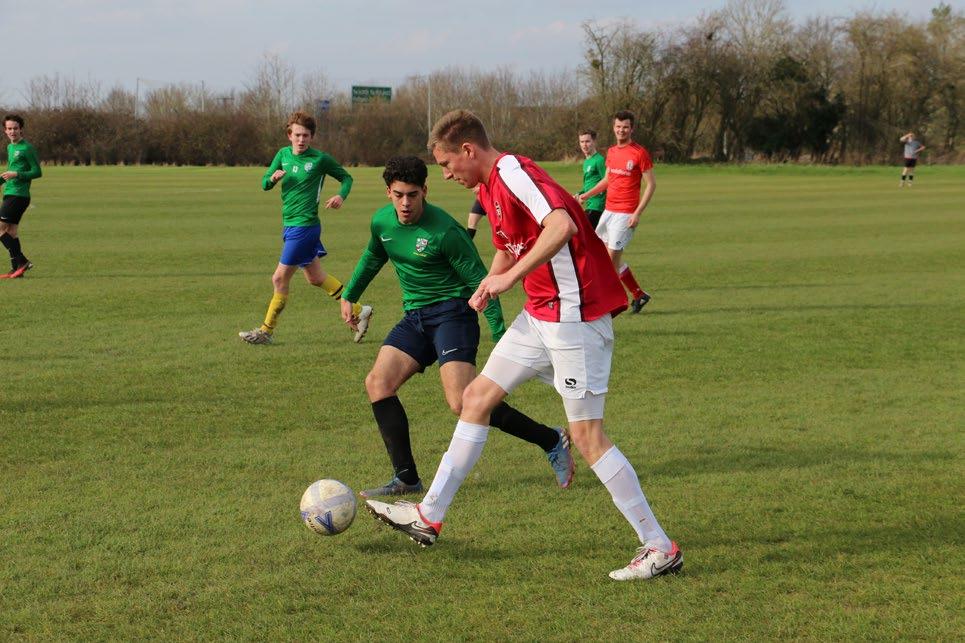

Wherever life has taken you after graduation please know that you are always welcome back at Girton and that we love hearing your news.
Fill out this short form with your contact details to receive the latest College news and event invitations. You can also use the form to share your news, whether it’s about your career, qualifications, interests, family, or any other life events www.girton.cam.ac.uk/update-your-details
Keep up to date with news from the College and your fellow Girtonians! Follow us on social media and look out for our regular alumni publications and termly Spotlight Girton eNewsletter.
Wherever you are, there’s likely to be a Girton or Cambridge alumni group nearby.
www.girton.cam.ac.uk/alumni-community
Want to start one? Let us know: alumni@girton.cam.ac.uk
Back in Cambridge? Join a Formal Hall, grab a bite at the Social Hub, or even stay overnight (subject to availability). For dining and accommodation, email alumni@girton.cam.ac.uk in the first instance.
Whether looking to mentor a current student or looking for your help on your own career journey do join the Girton College Careers Network group on LinkedIn. You’ll need to request access – only Girton students, alumni, Fellows, and staff are admitted.
www.linkedin.com/groups/13095622/
If you have any questions about the Careers Network do get in touch with the Girton College Careers Network Team: careersnetwork@girton.cam.ac.uk
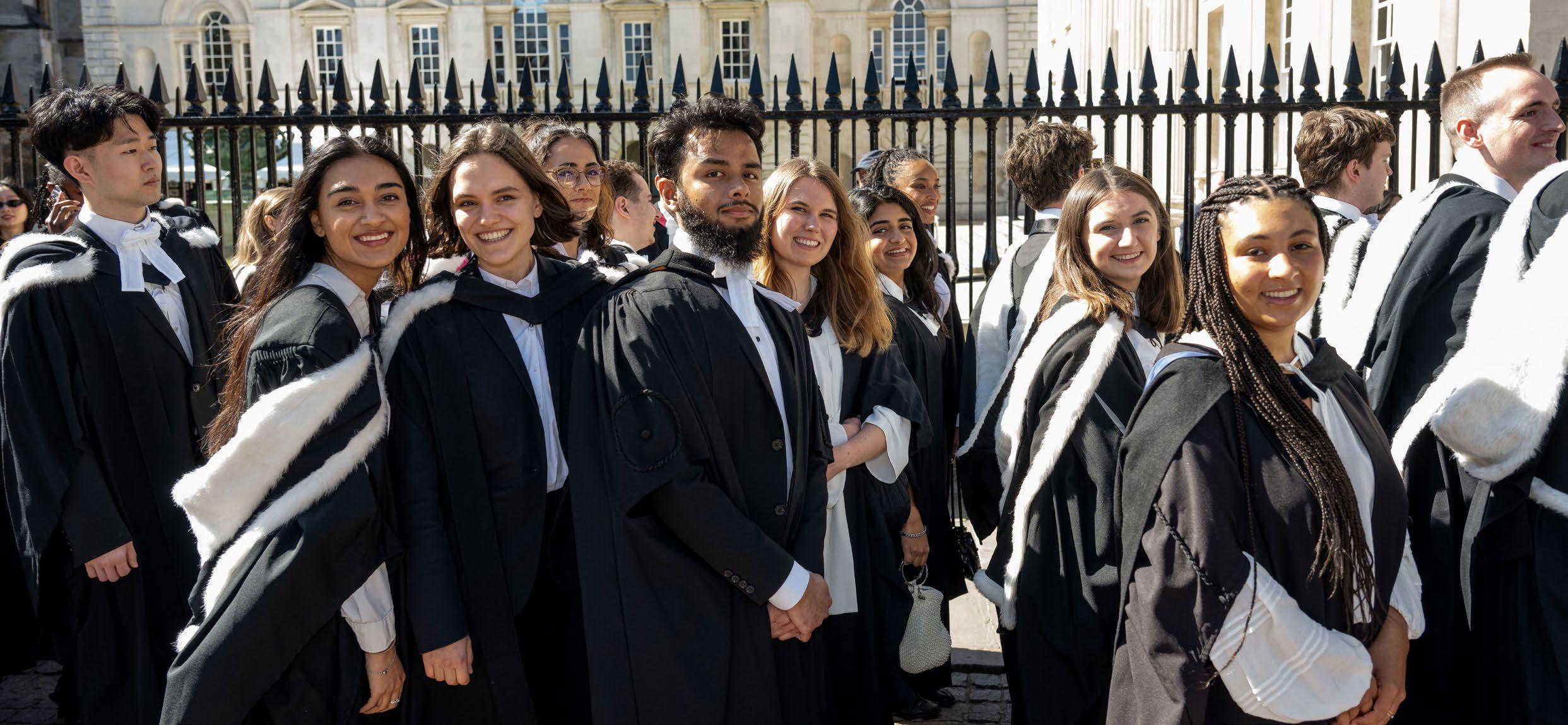
The Girton key shields painted by Rev E E Dorling as used in the coat of arms designed by him, 1927. Archive Reference: GCRF 6/1/26


The College applied for a coat of arms, which was granted in 1928. The design was chosen to represent the family coats of arms of the key founders and benefactors of the College. As Emily Davies’ family had no coat of arms, the green and white colours of the Girton design were chosen to reflect her Welsh ancestry.
Top Left: Barbara Bodichon father’s family coat of arms (Smith). Top Right: the family arms of Henrietta, Lady Stanley of Alderley (Dillon). Bottom Left: The family arms of Henry Tomkinson.
Girton College, Cambridge CB3 0JG UK
t. +44 (0) 01223 338 901
e. alumni@girton.cam.ac.uk
Charity No. 1137541